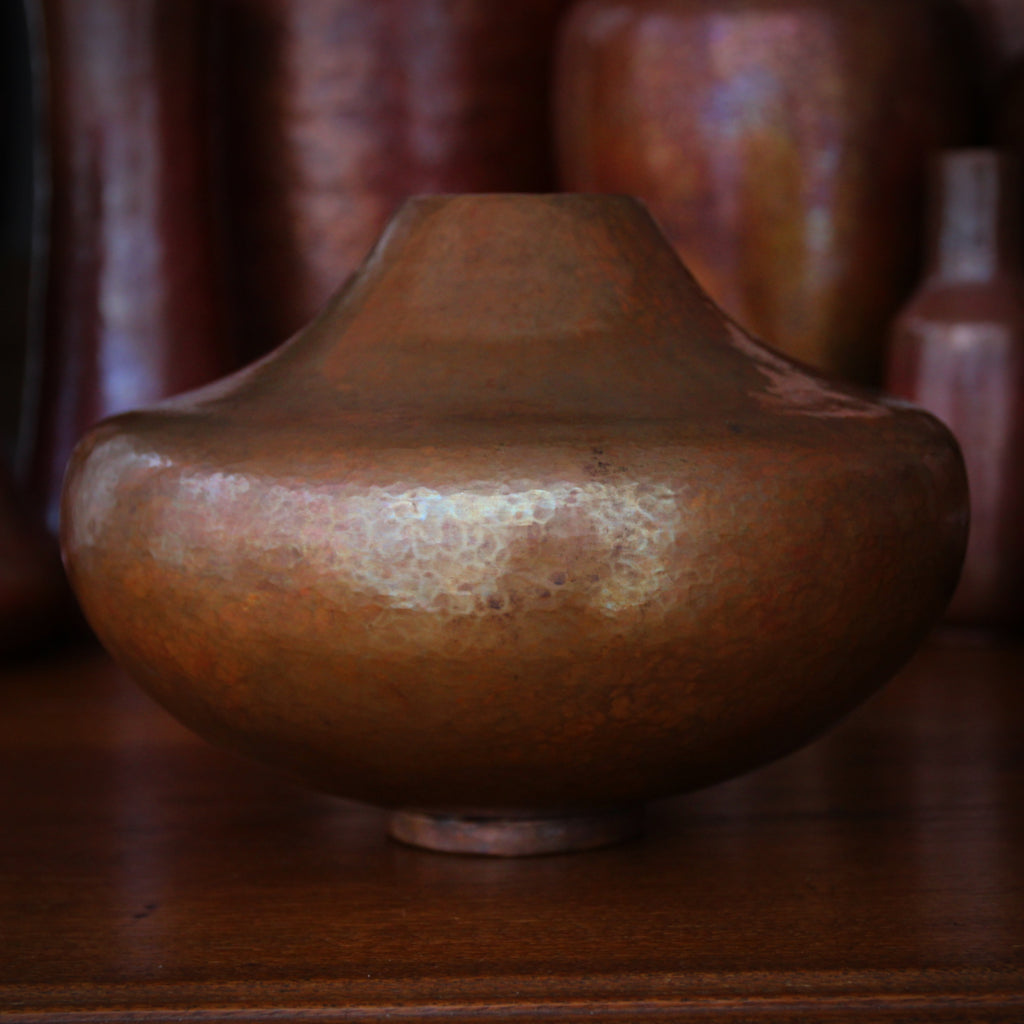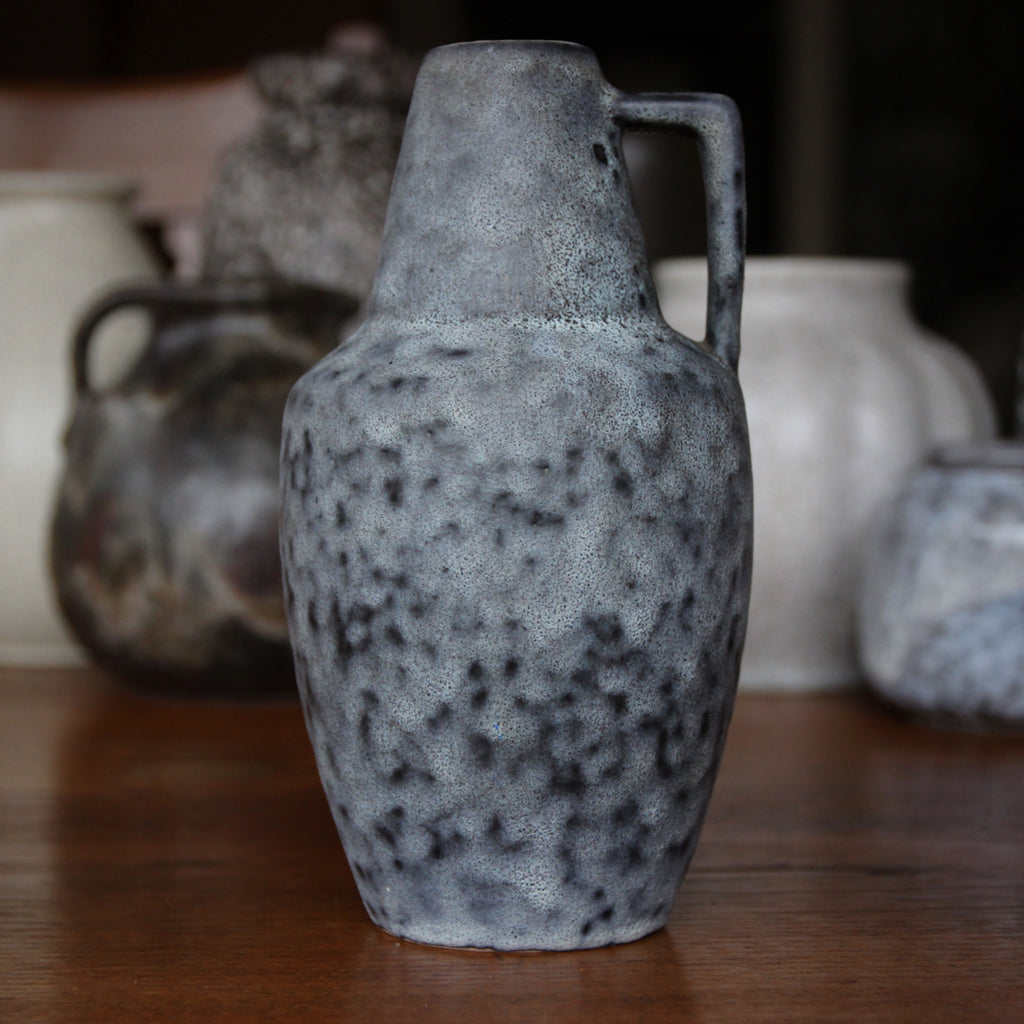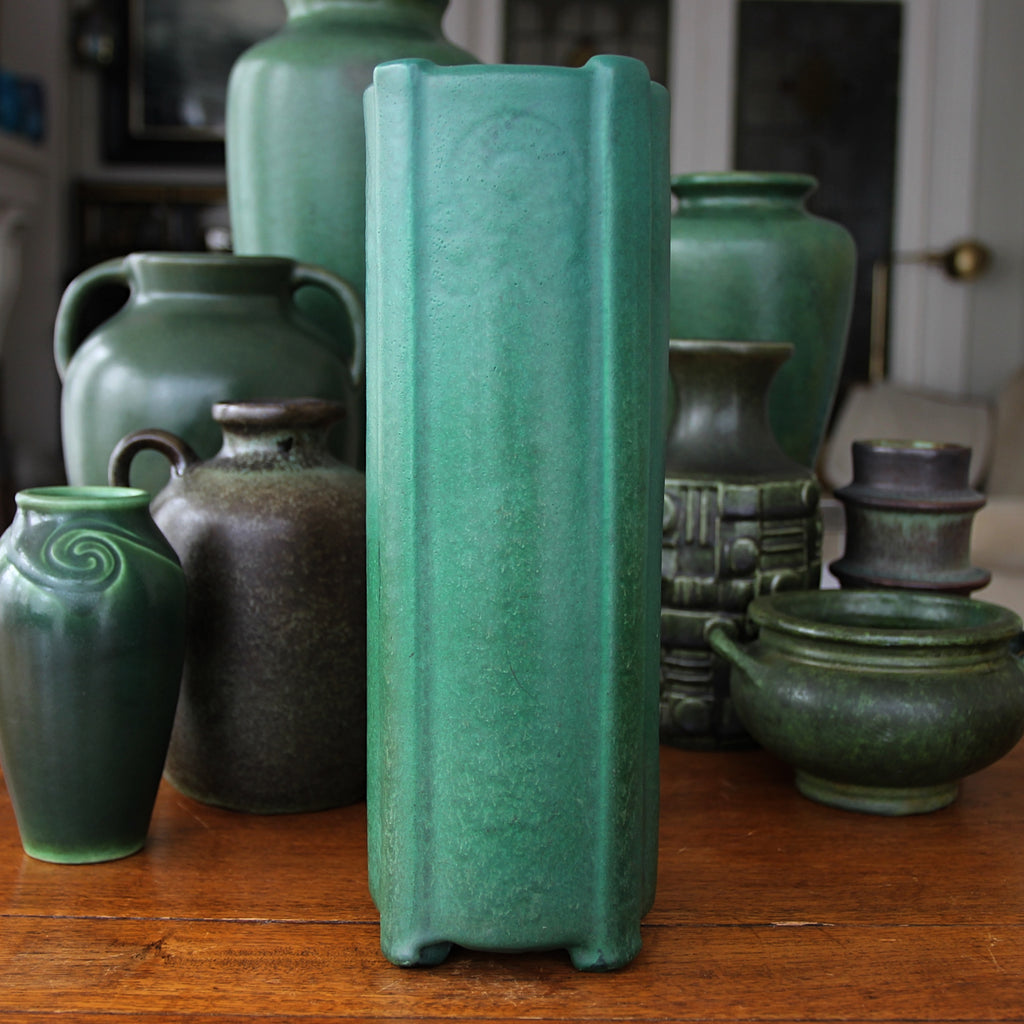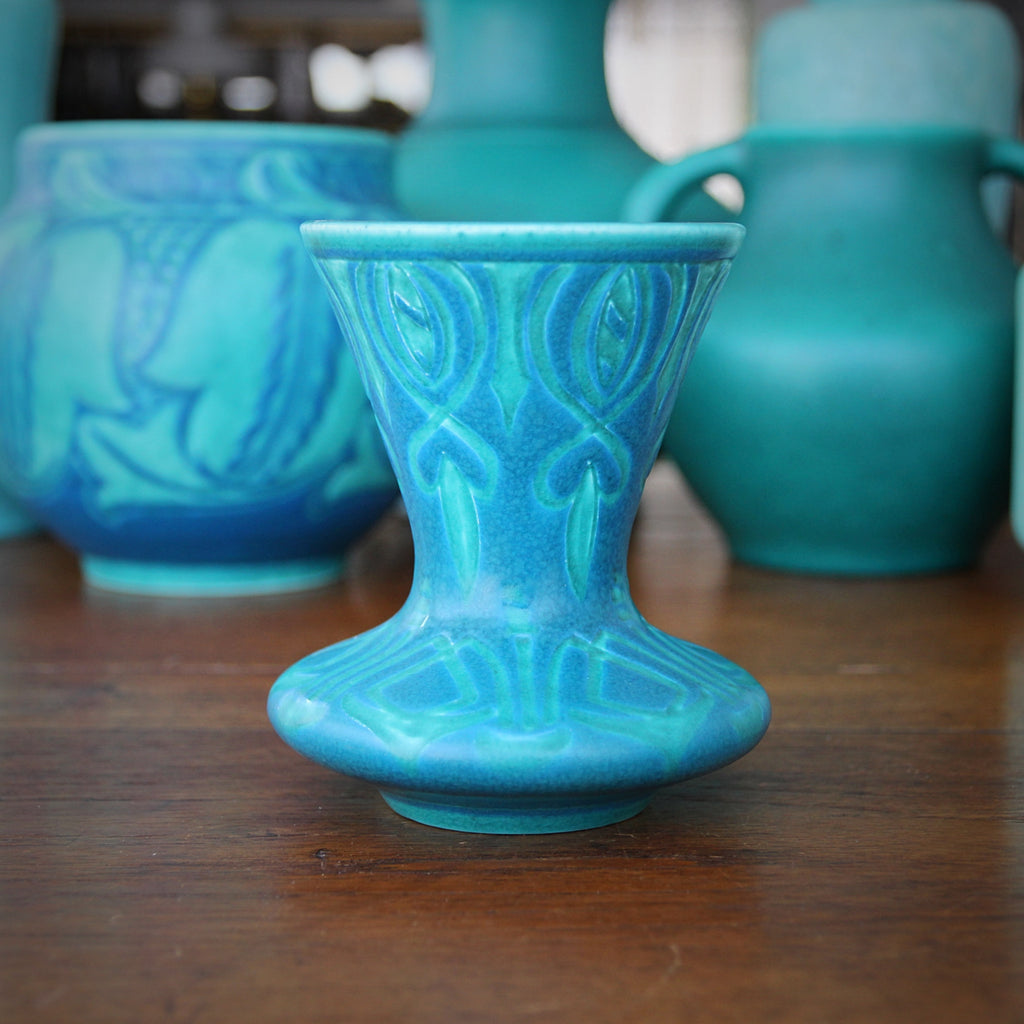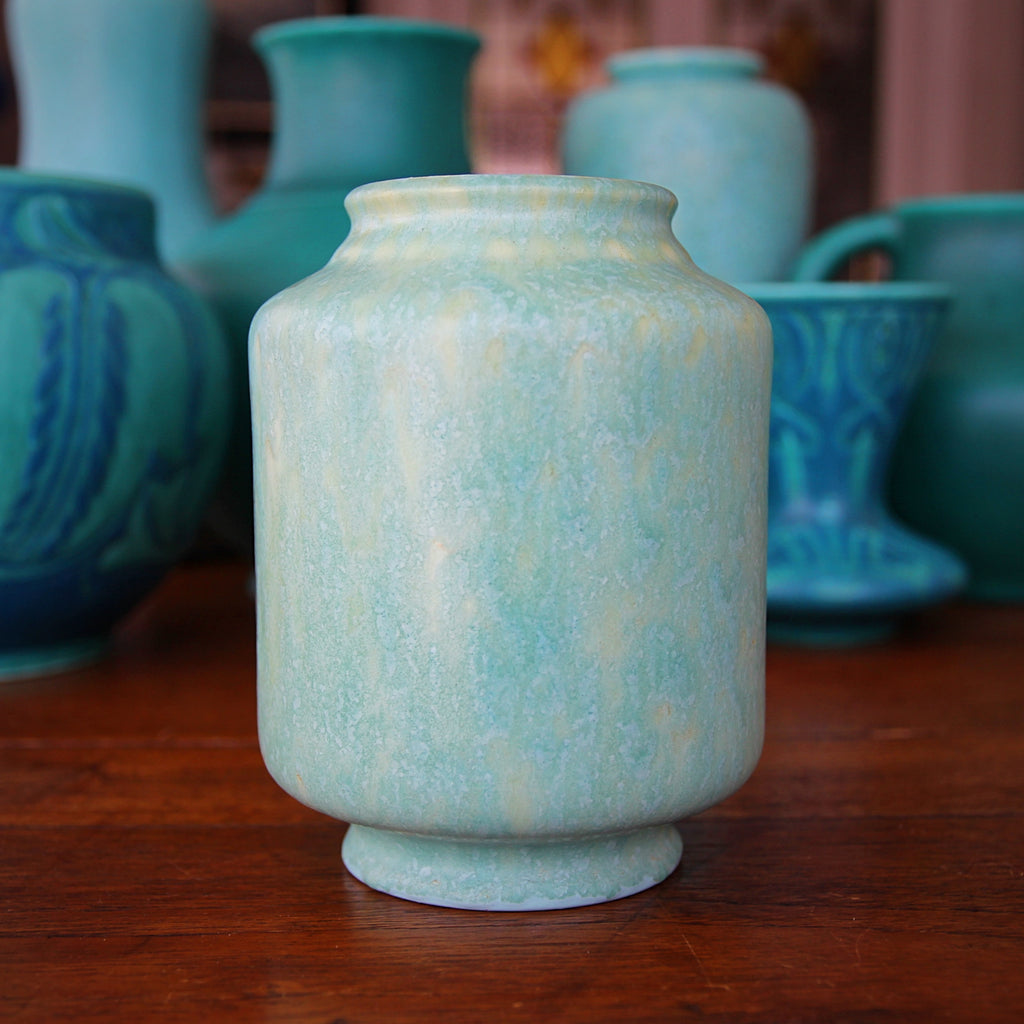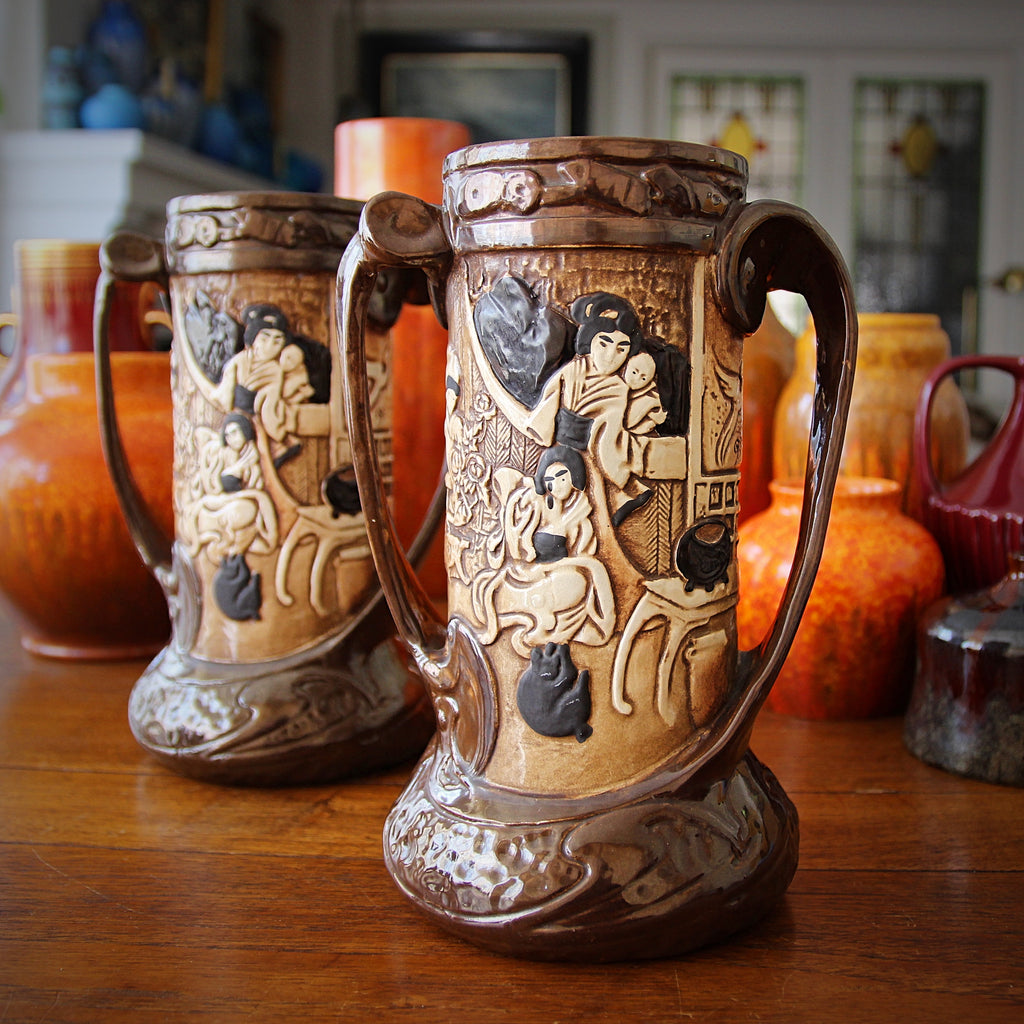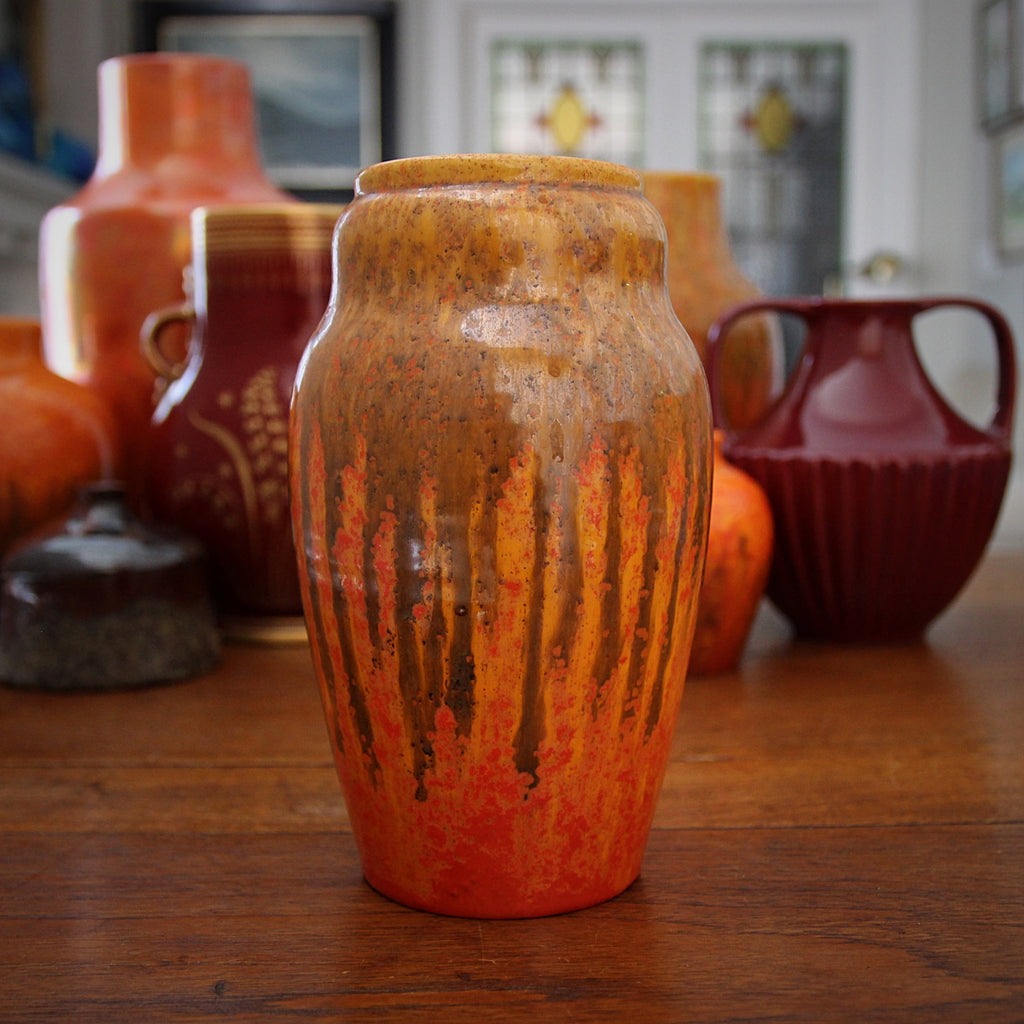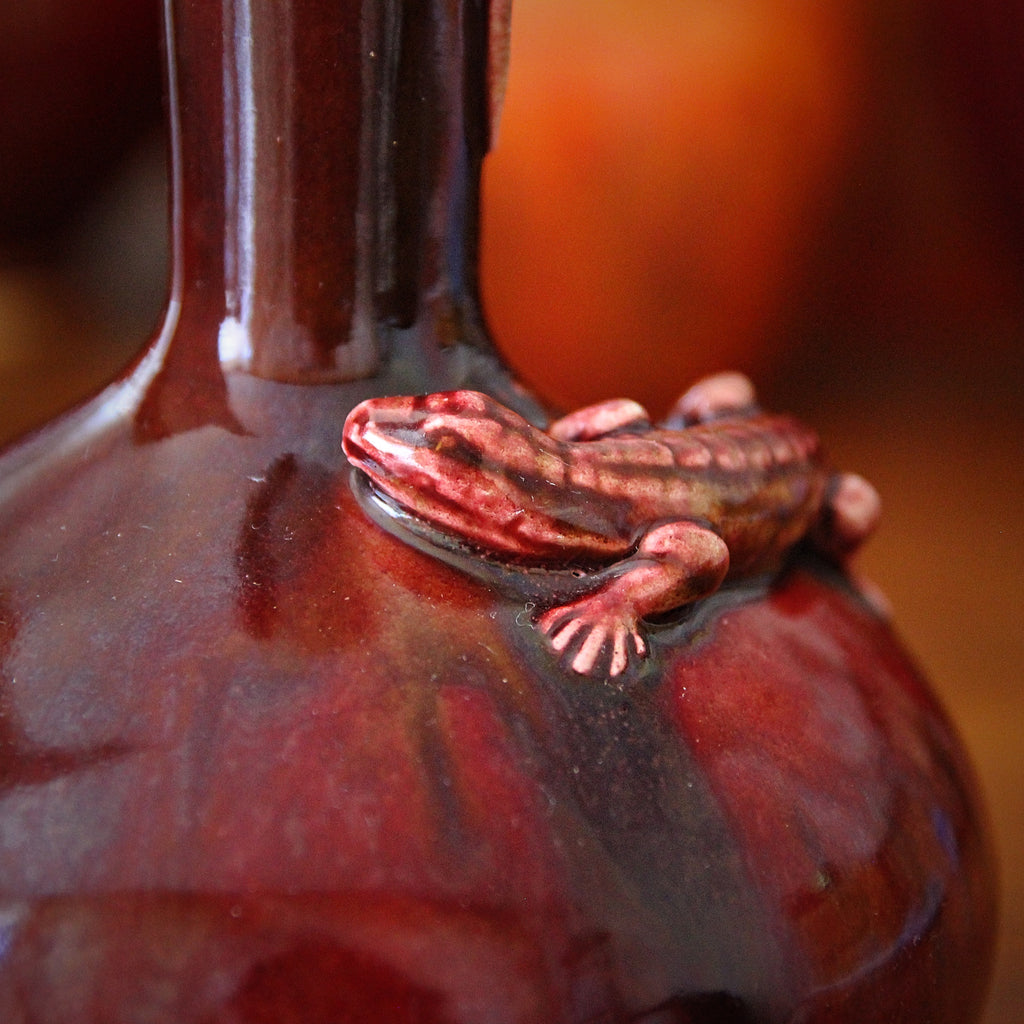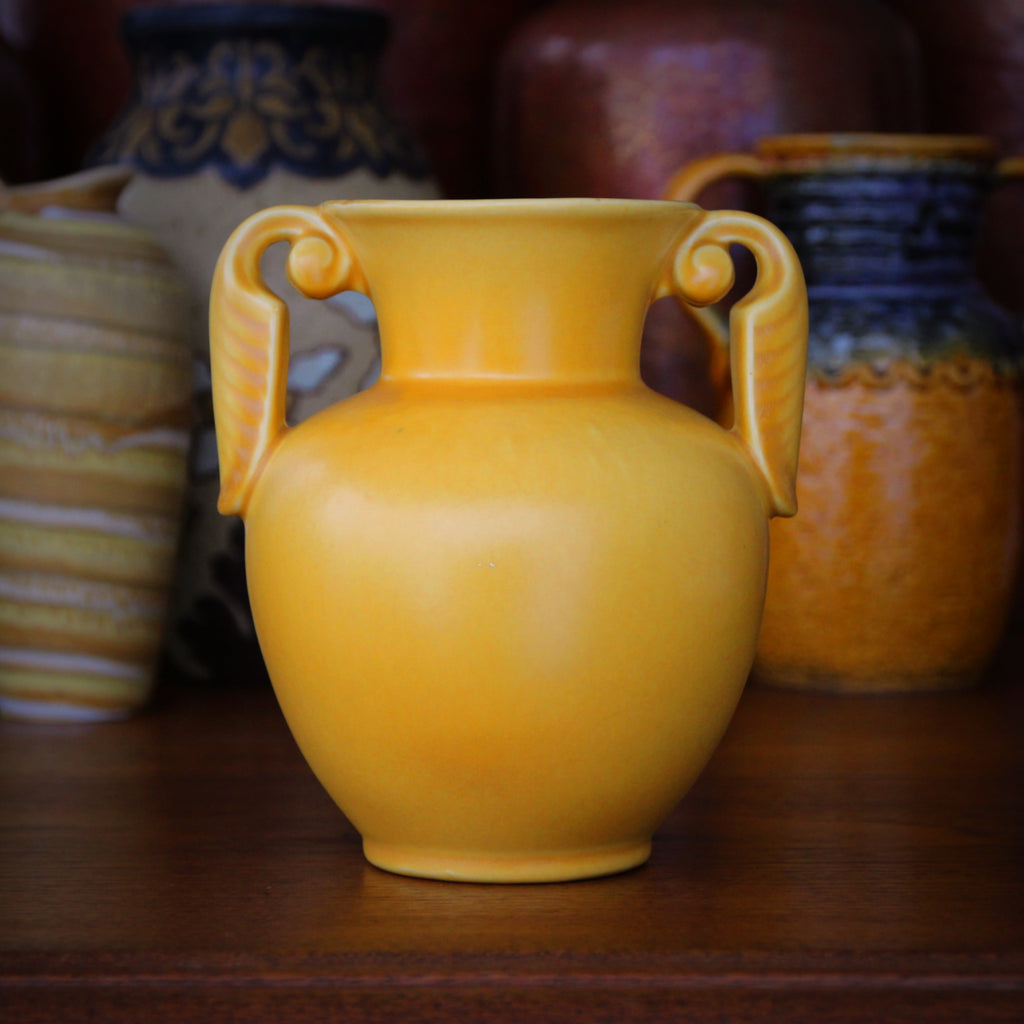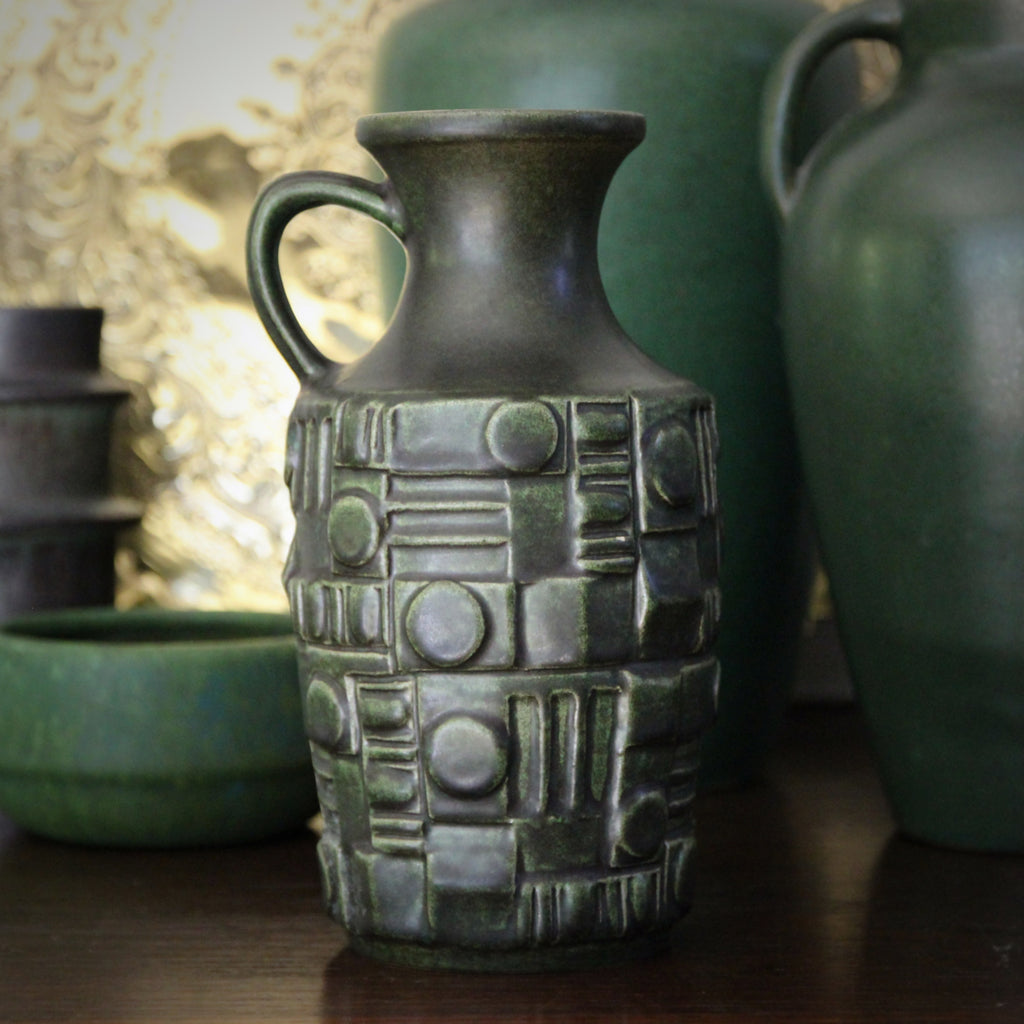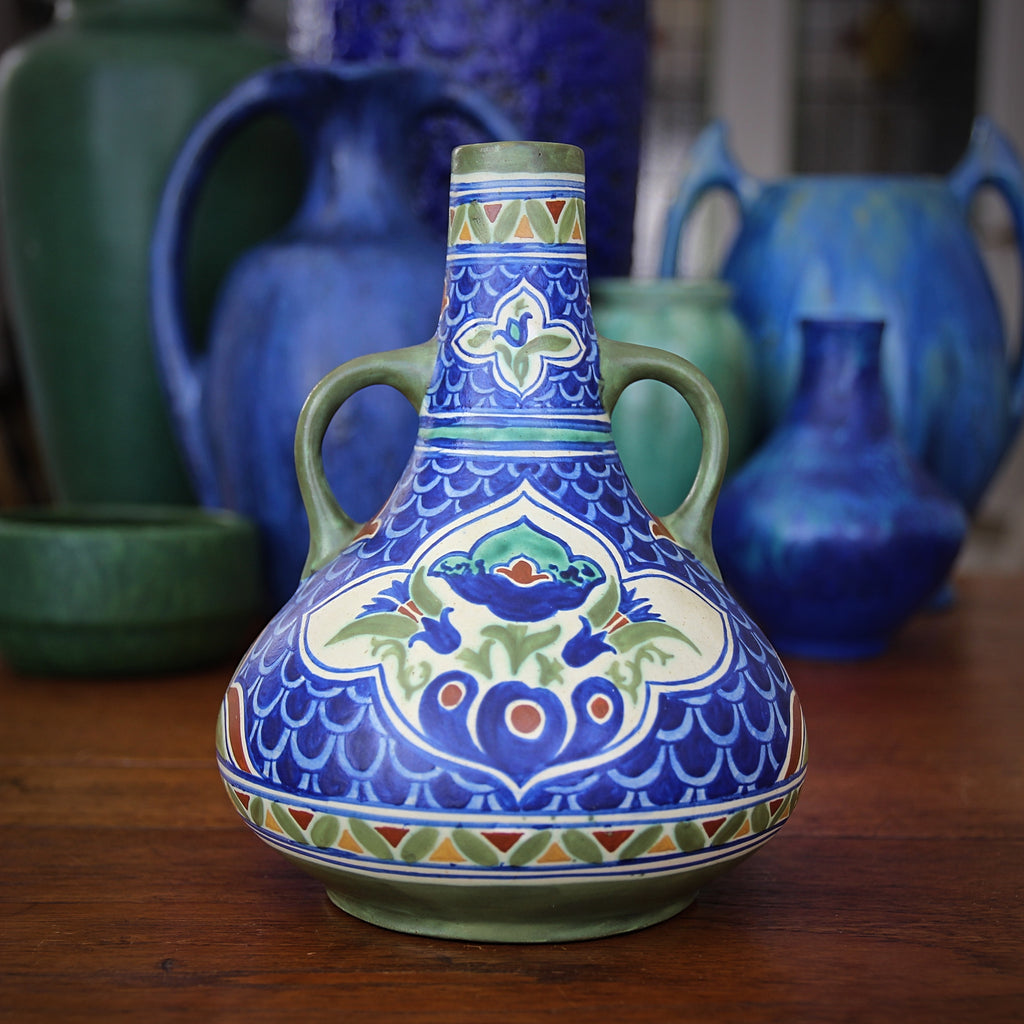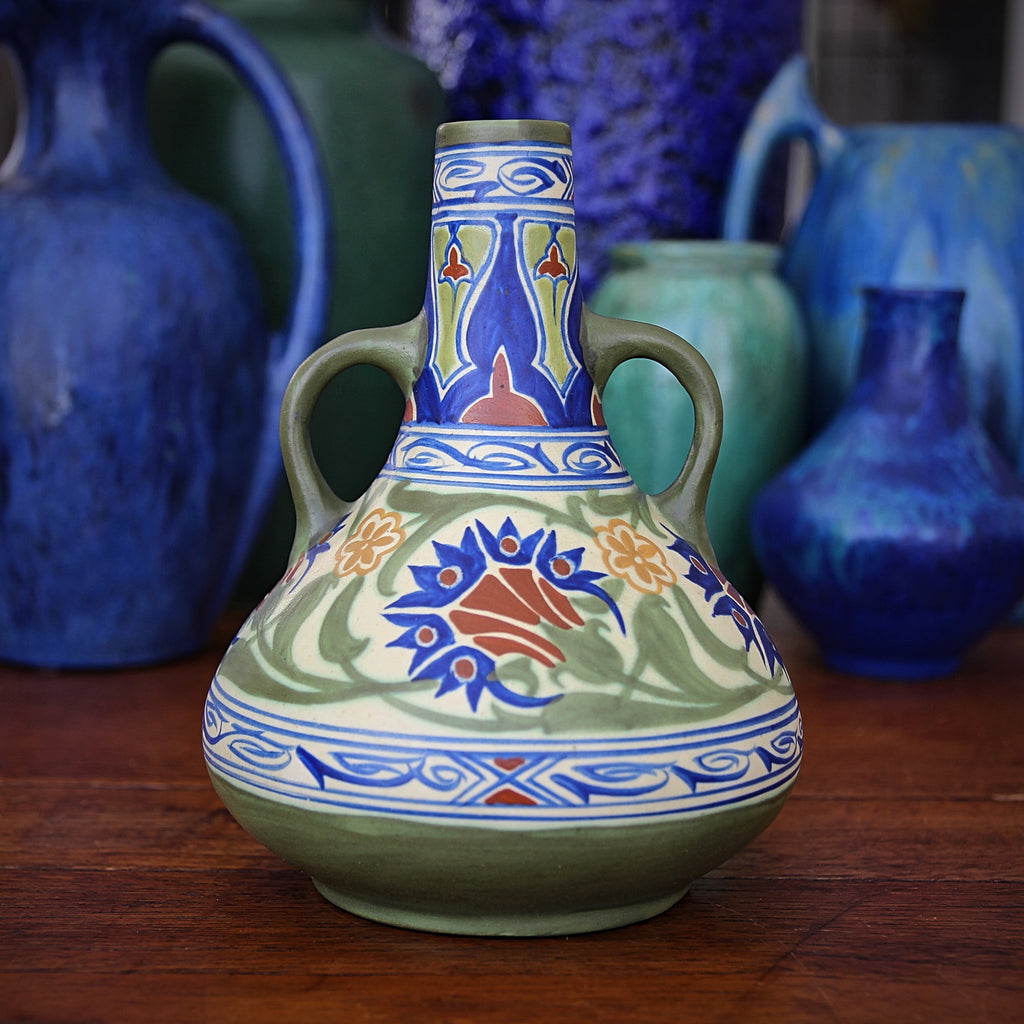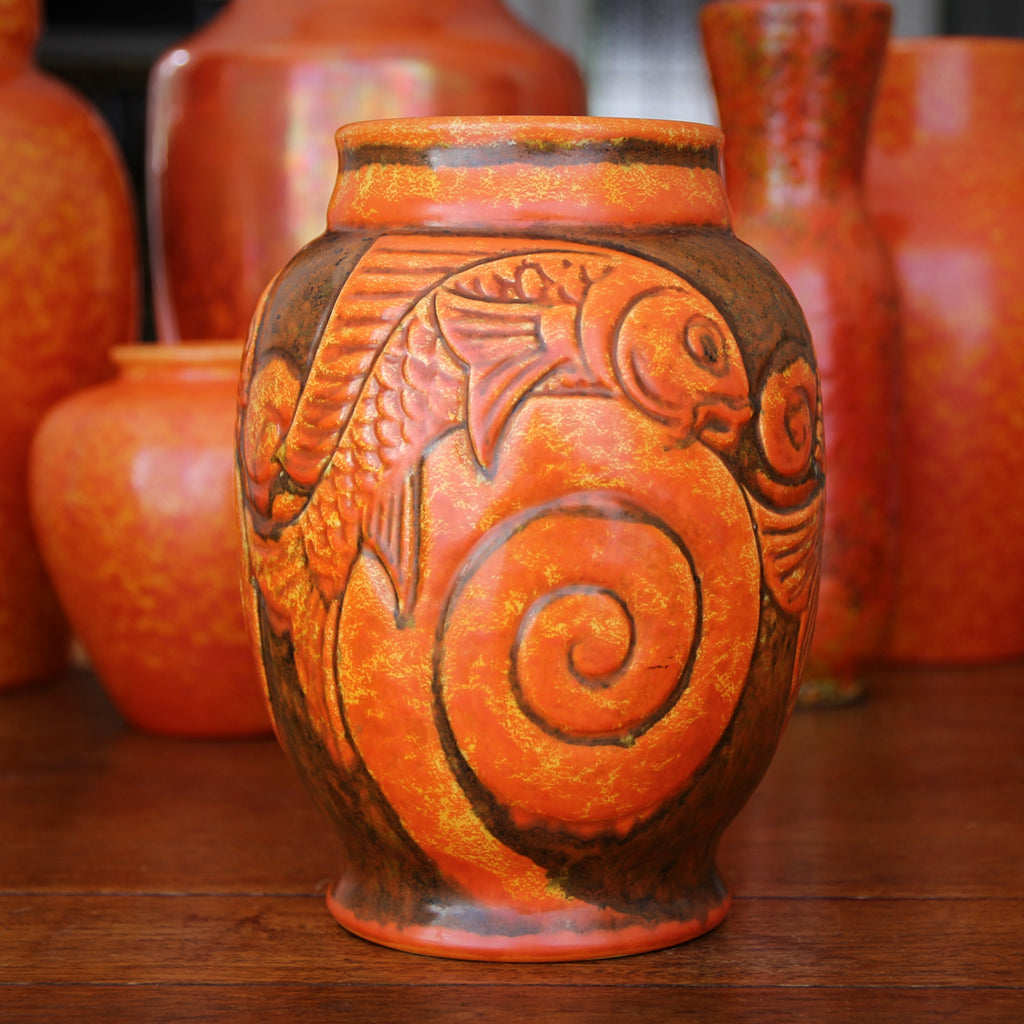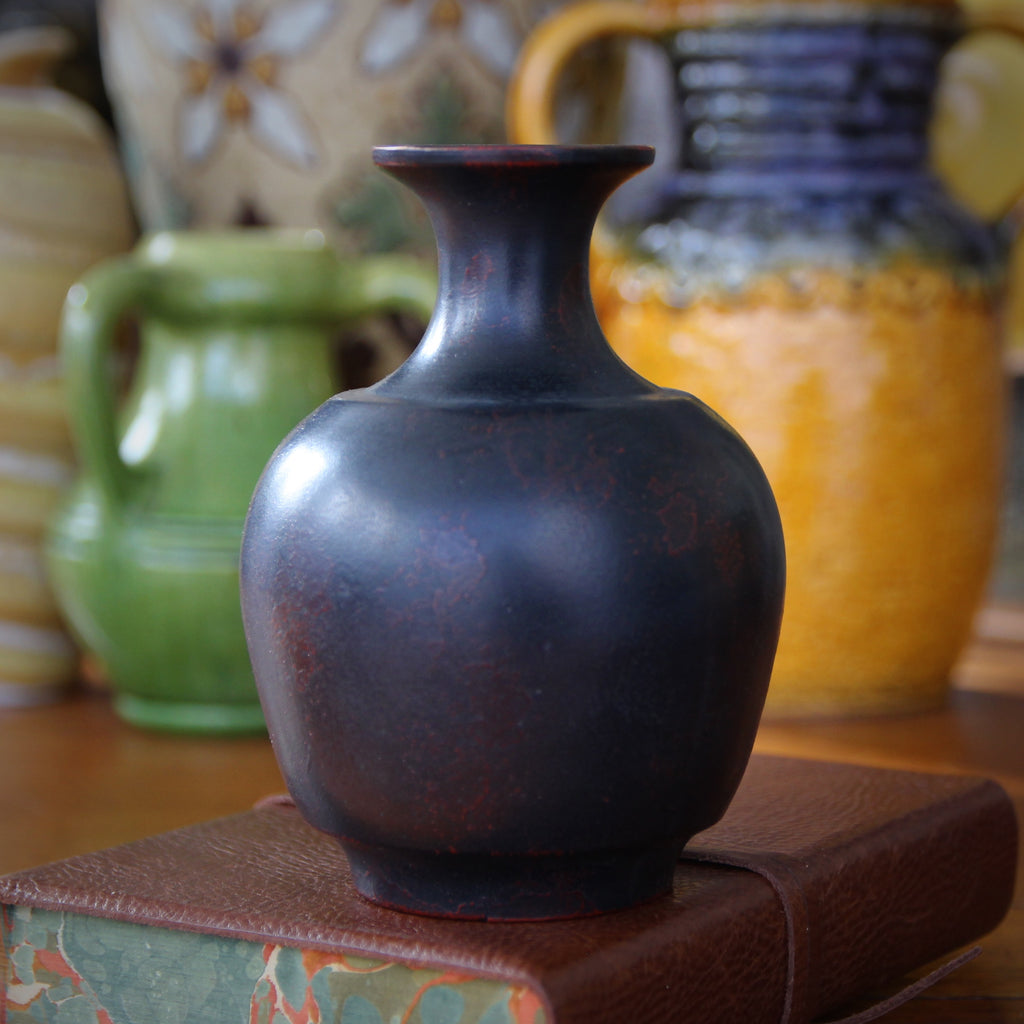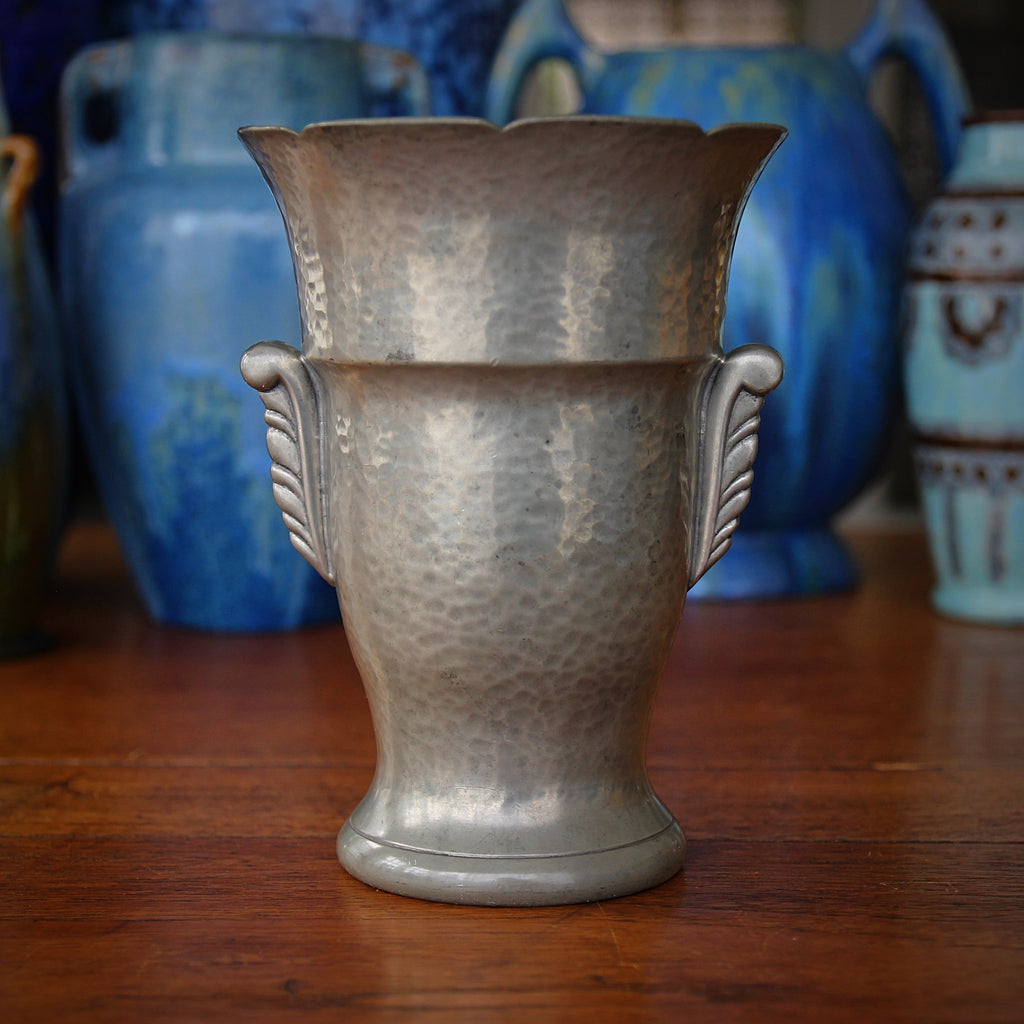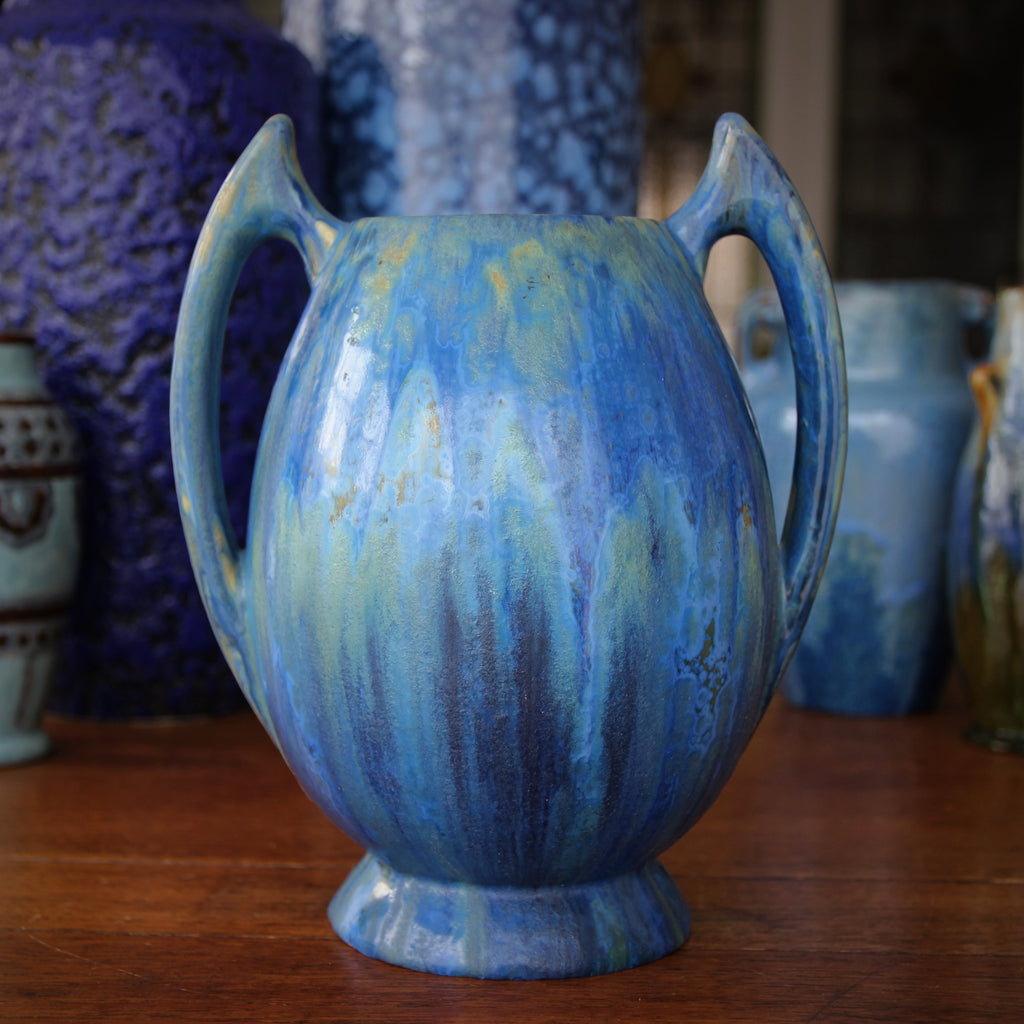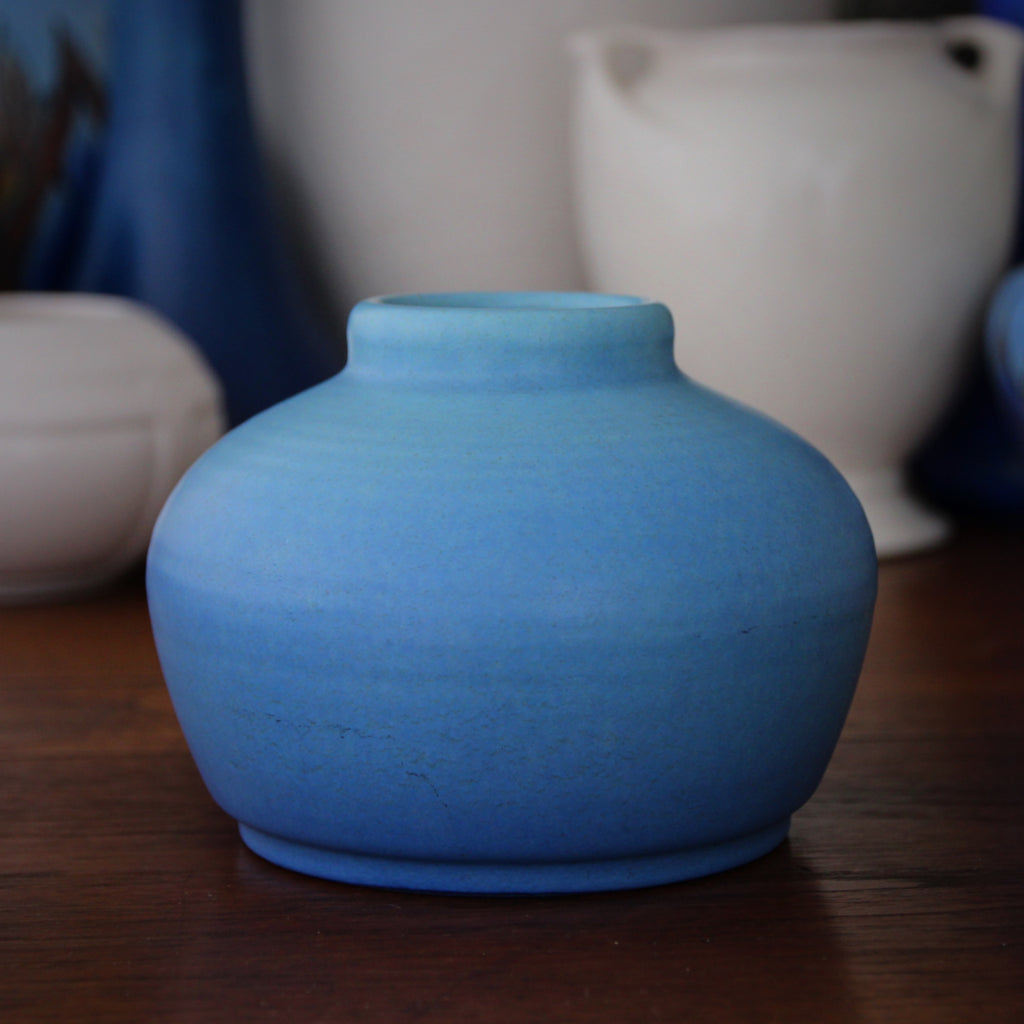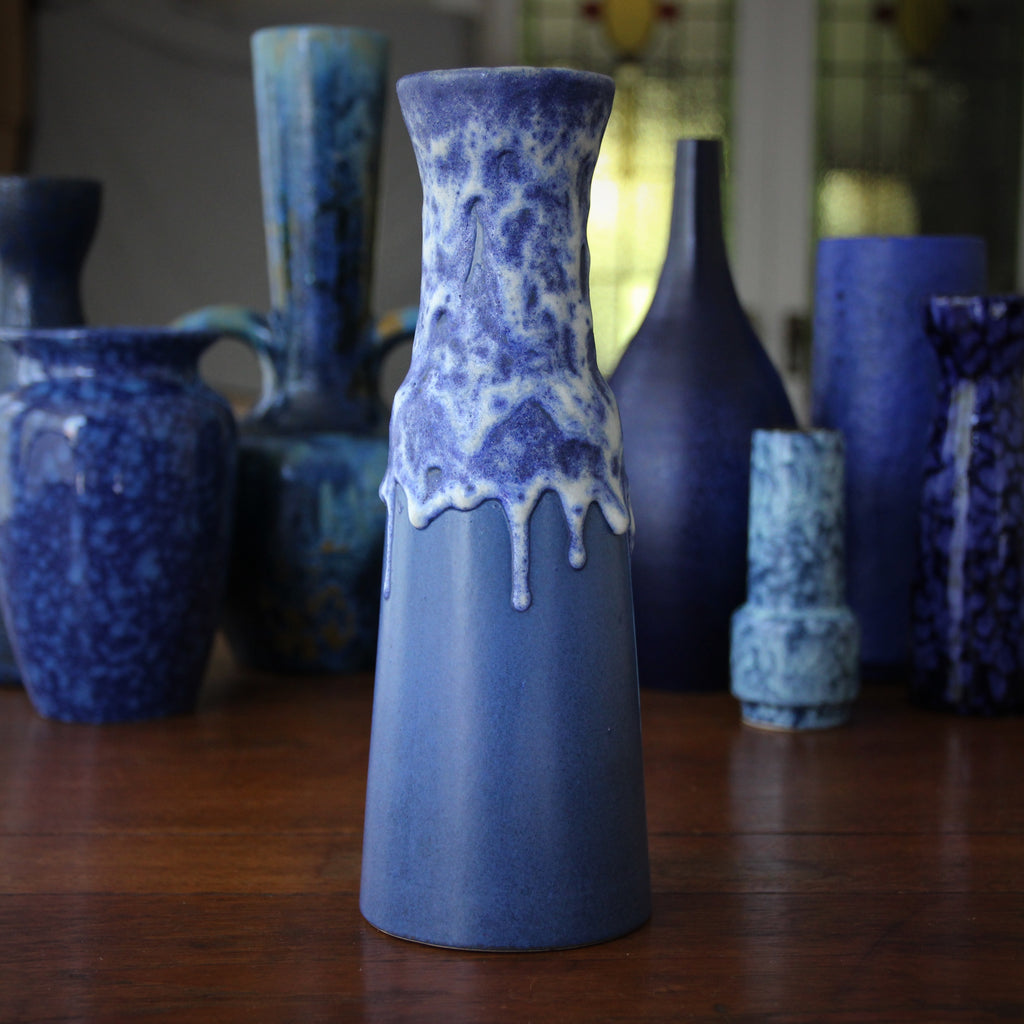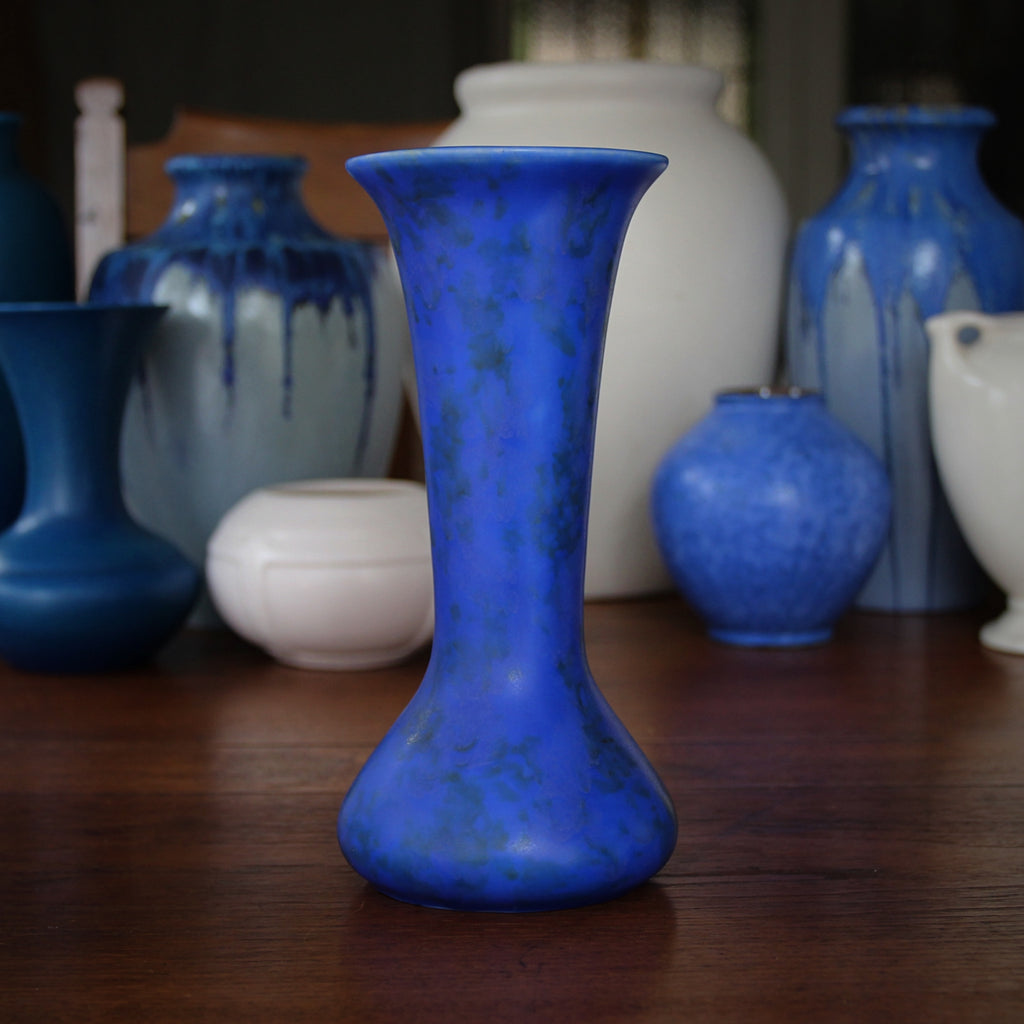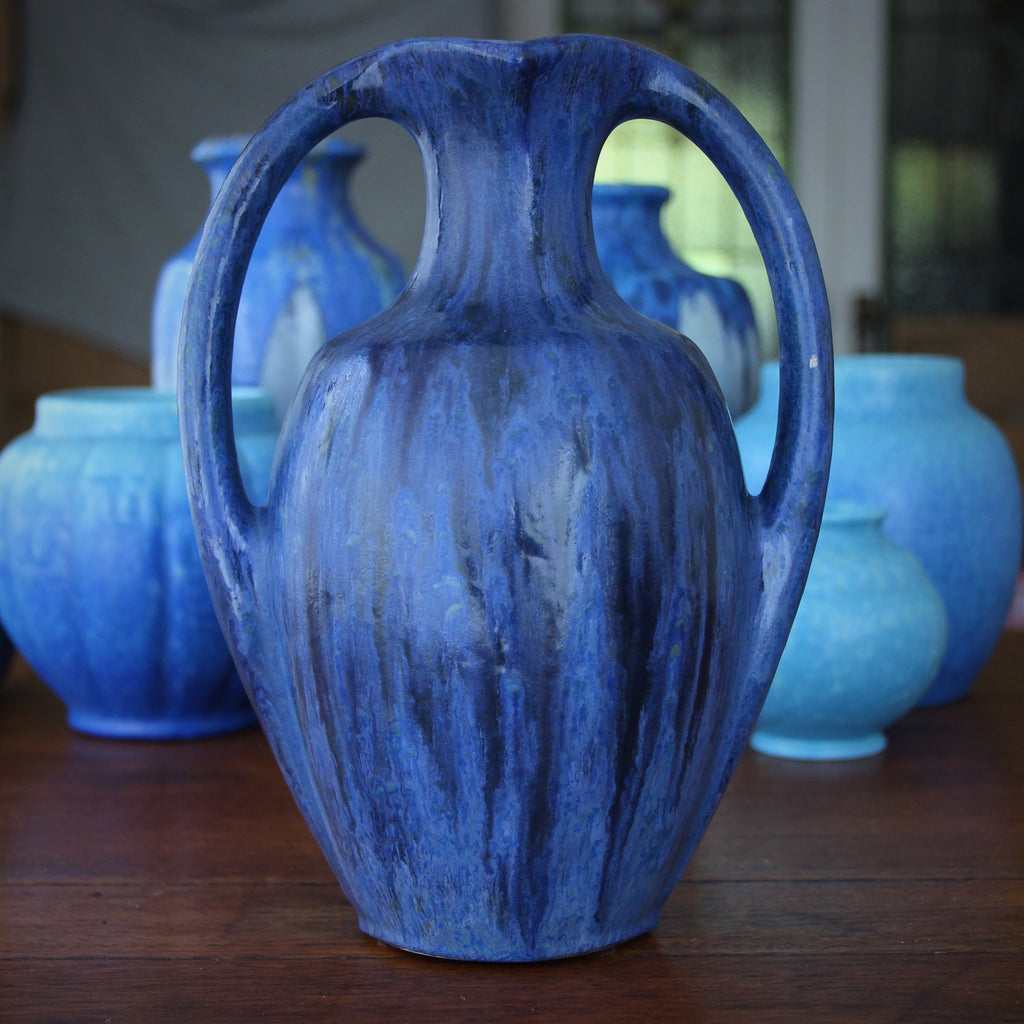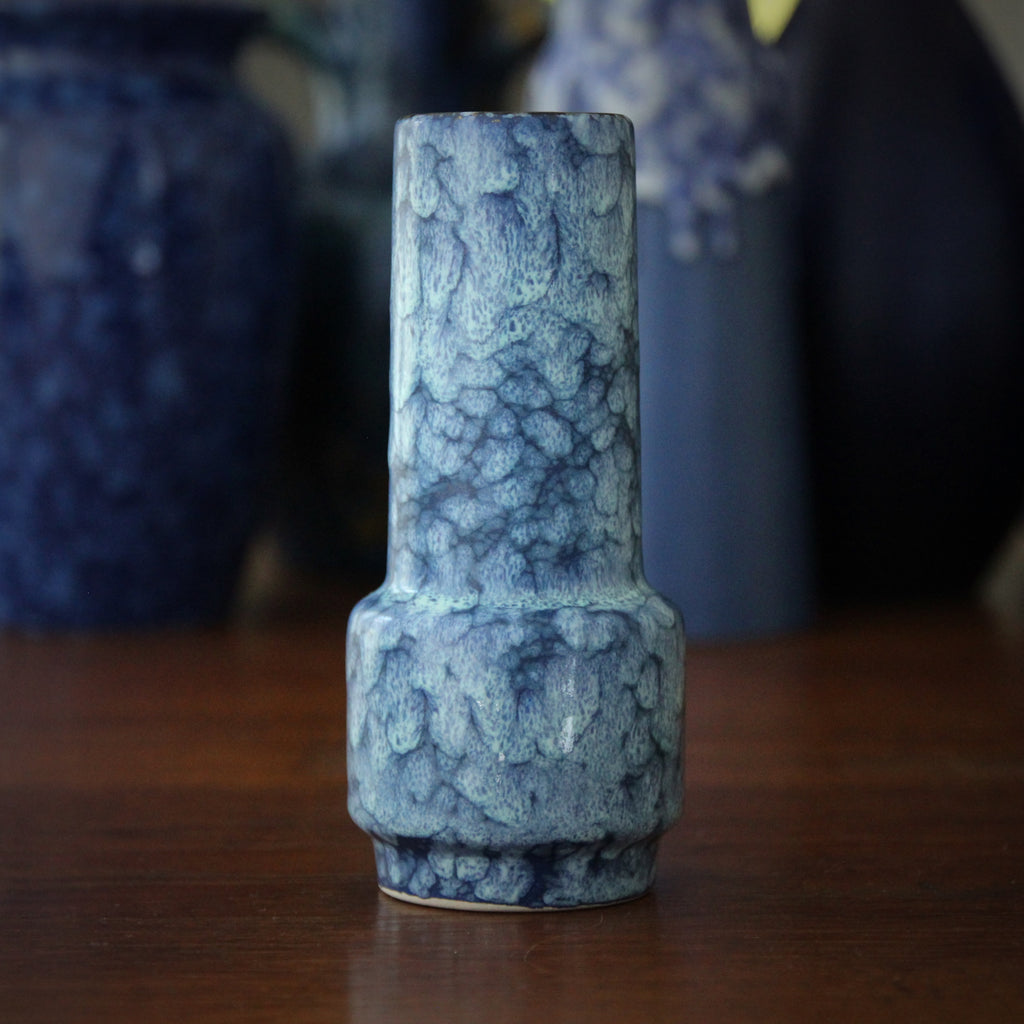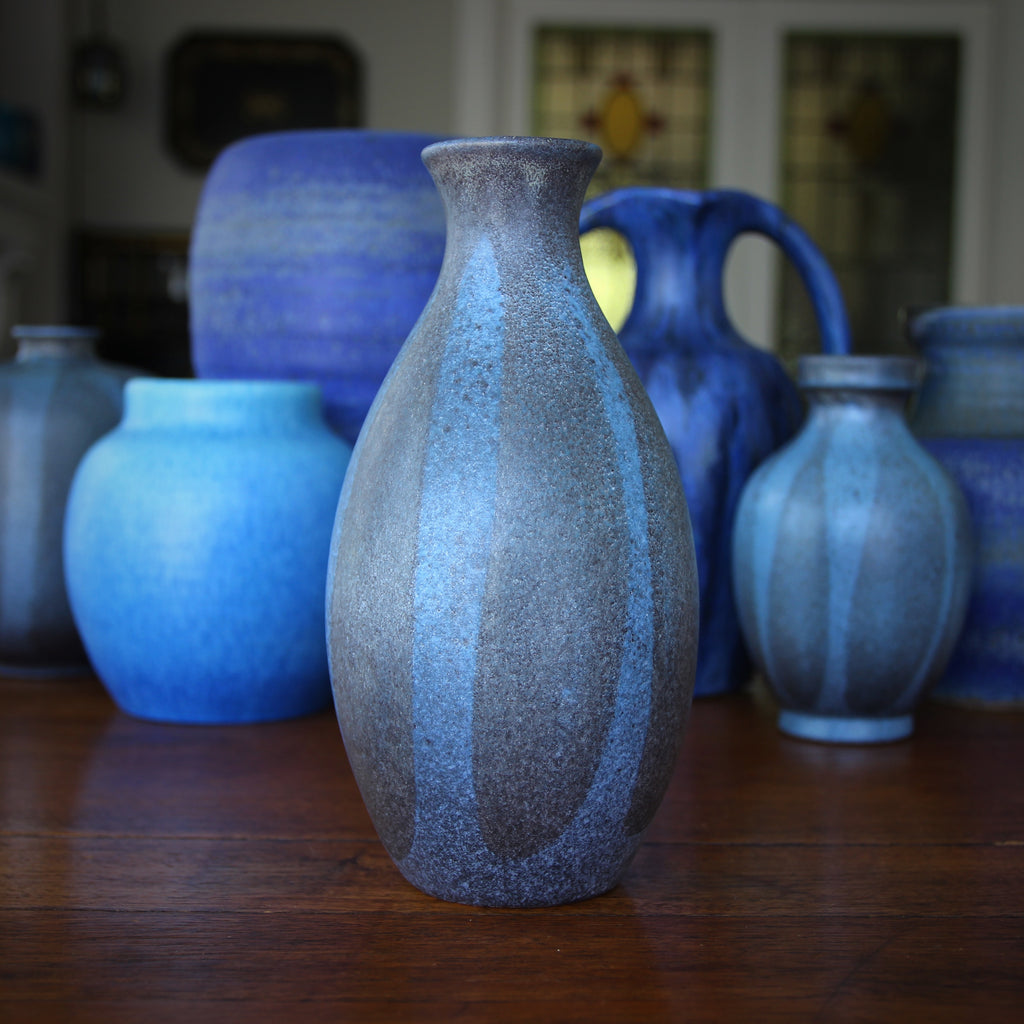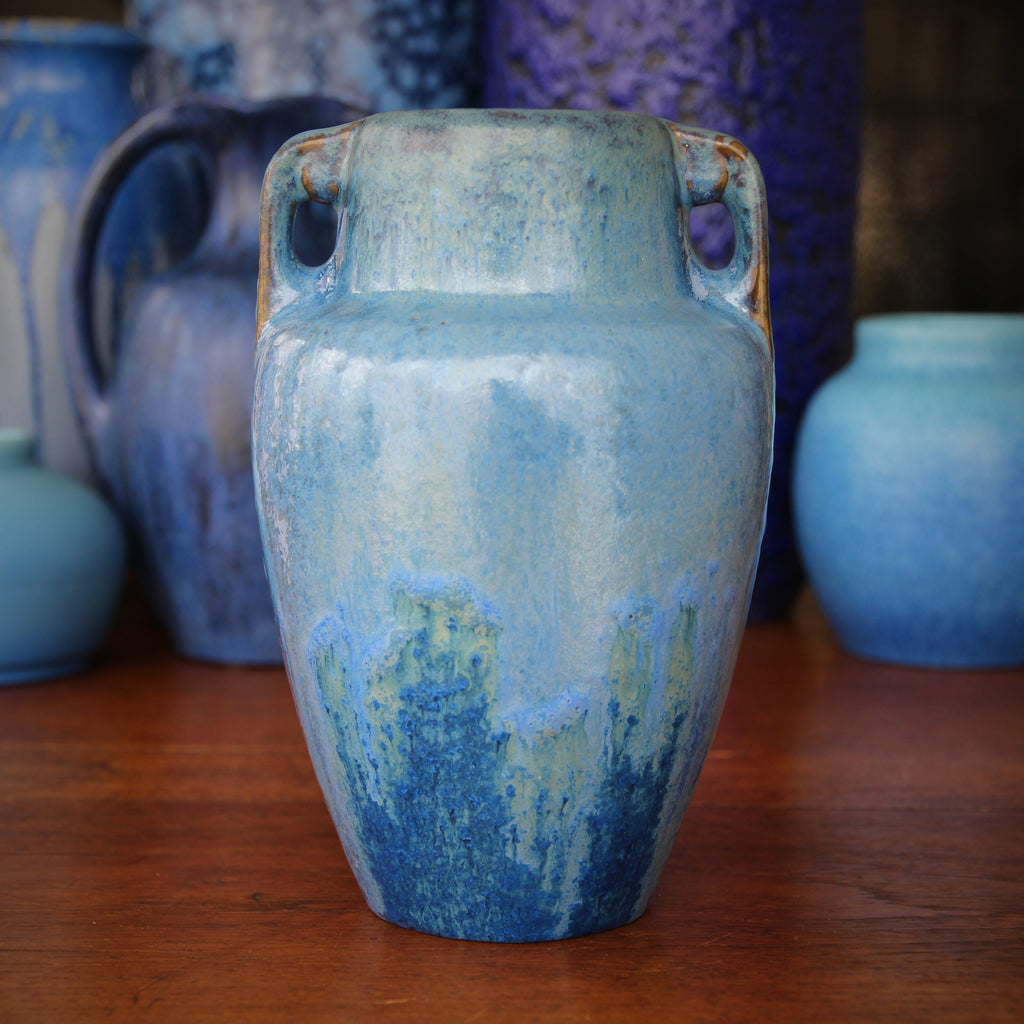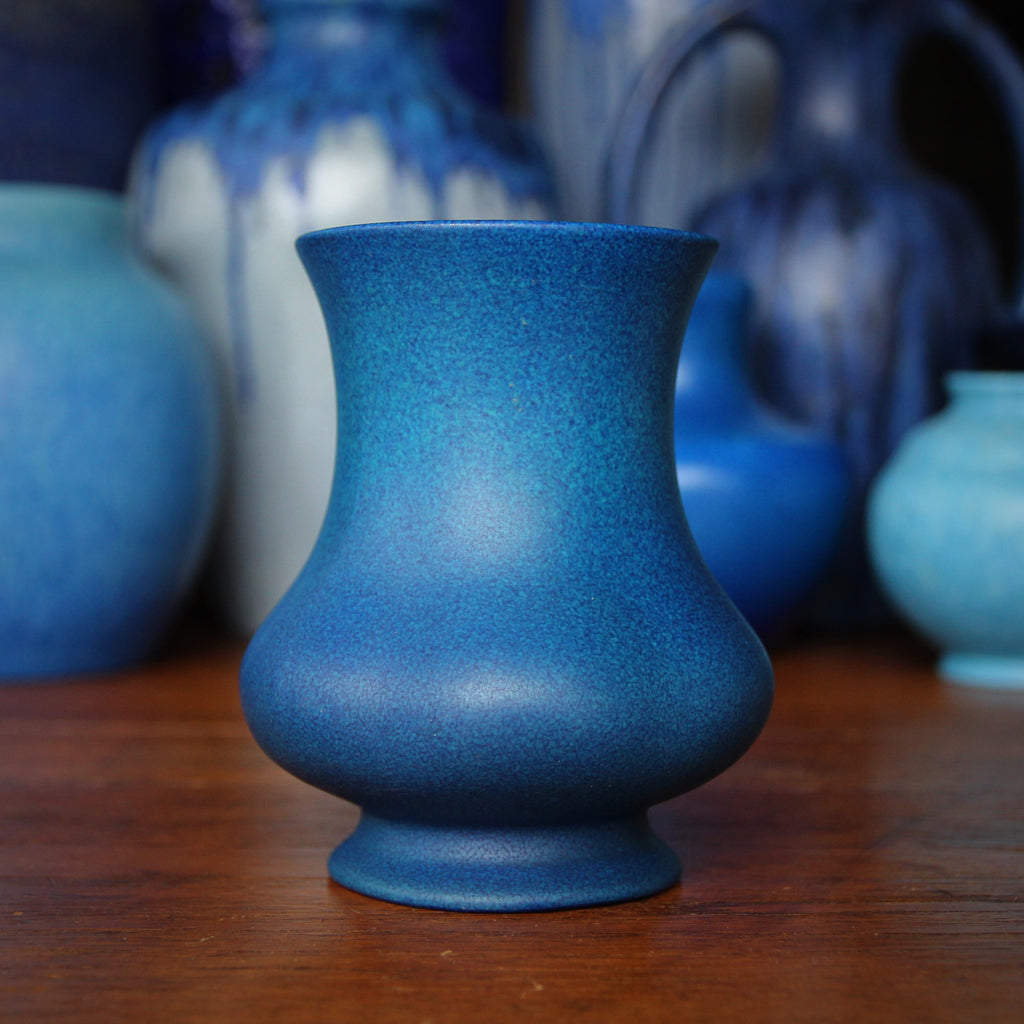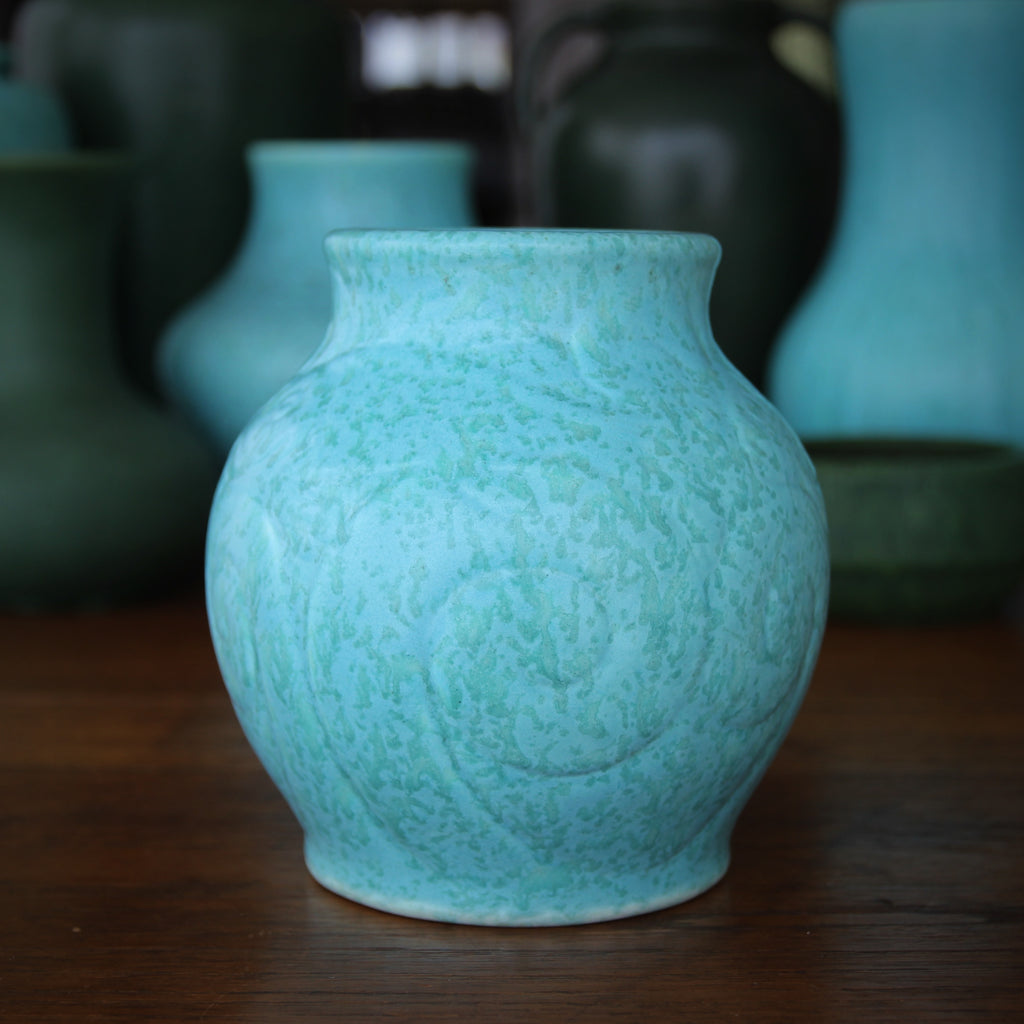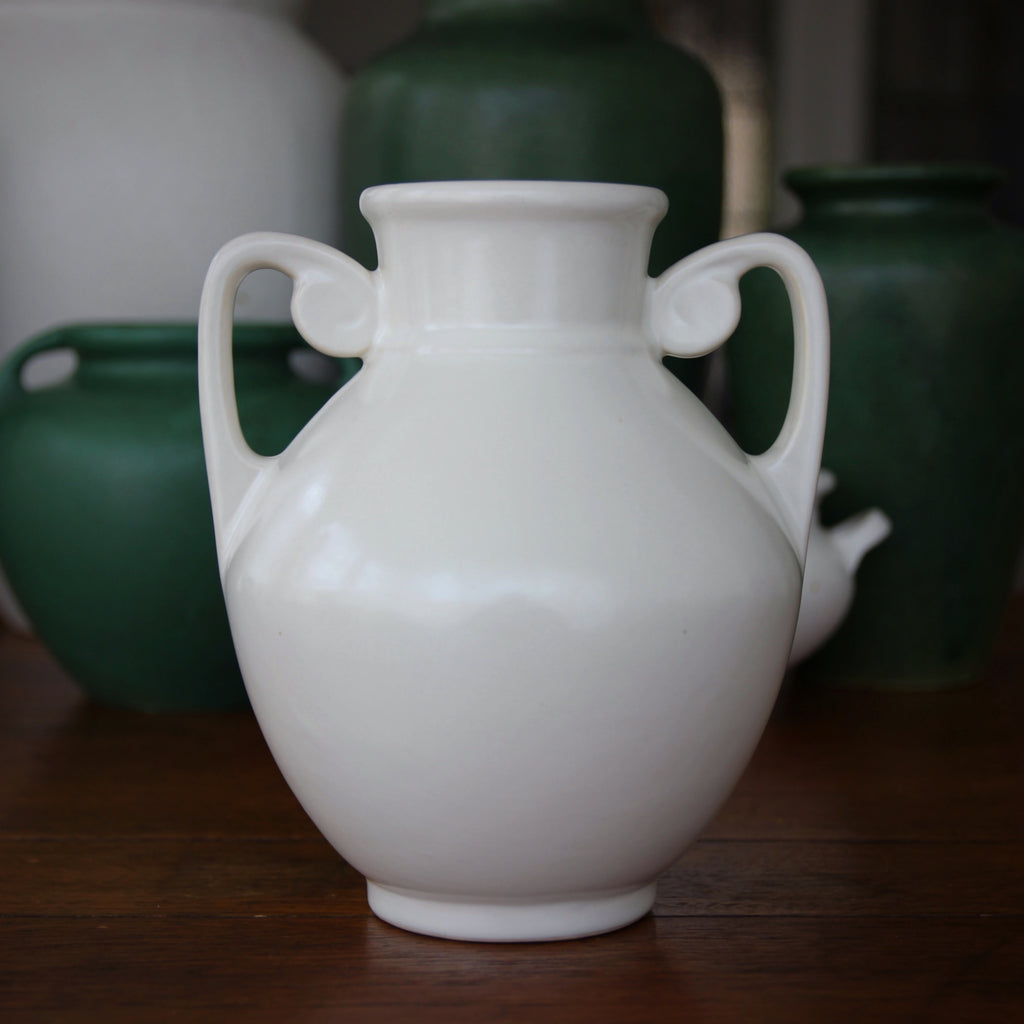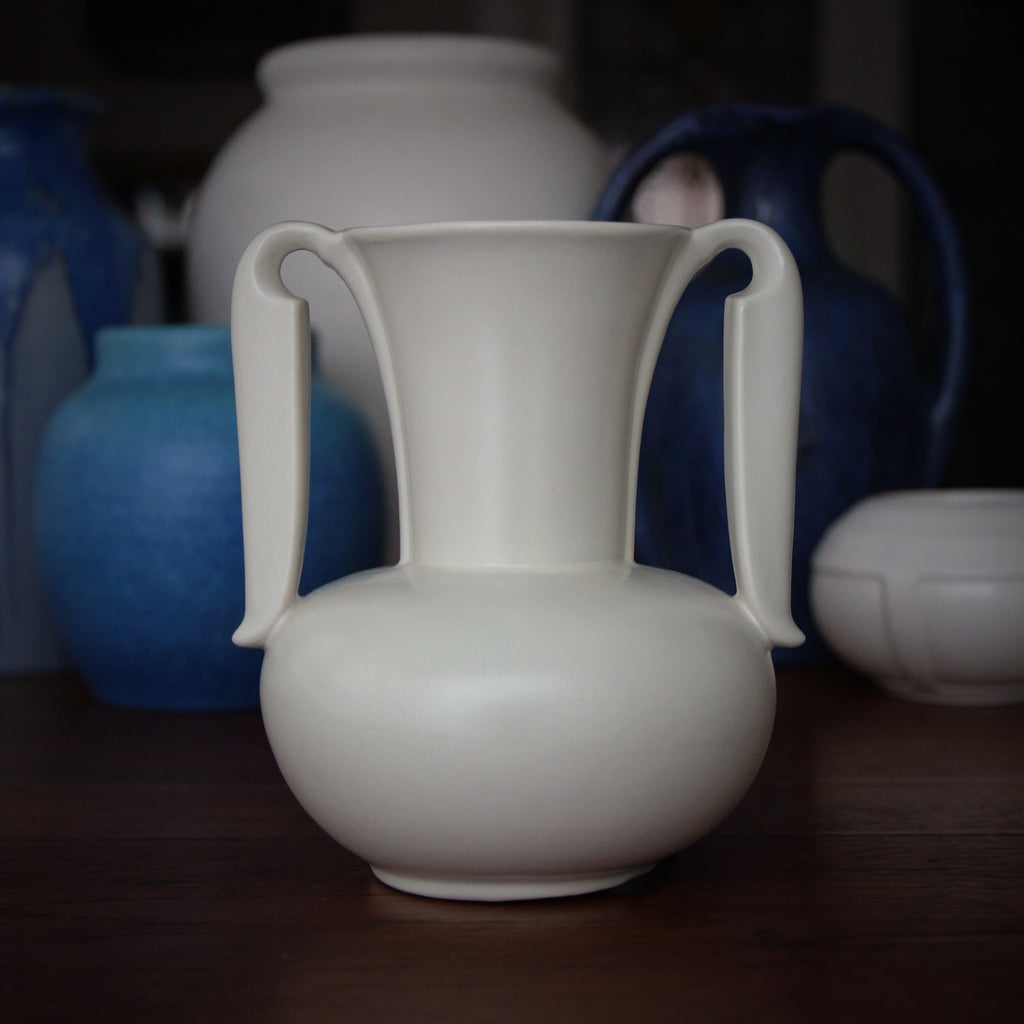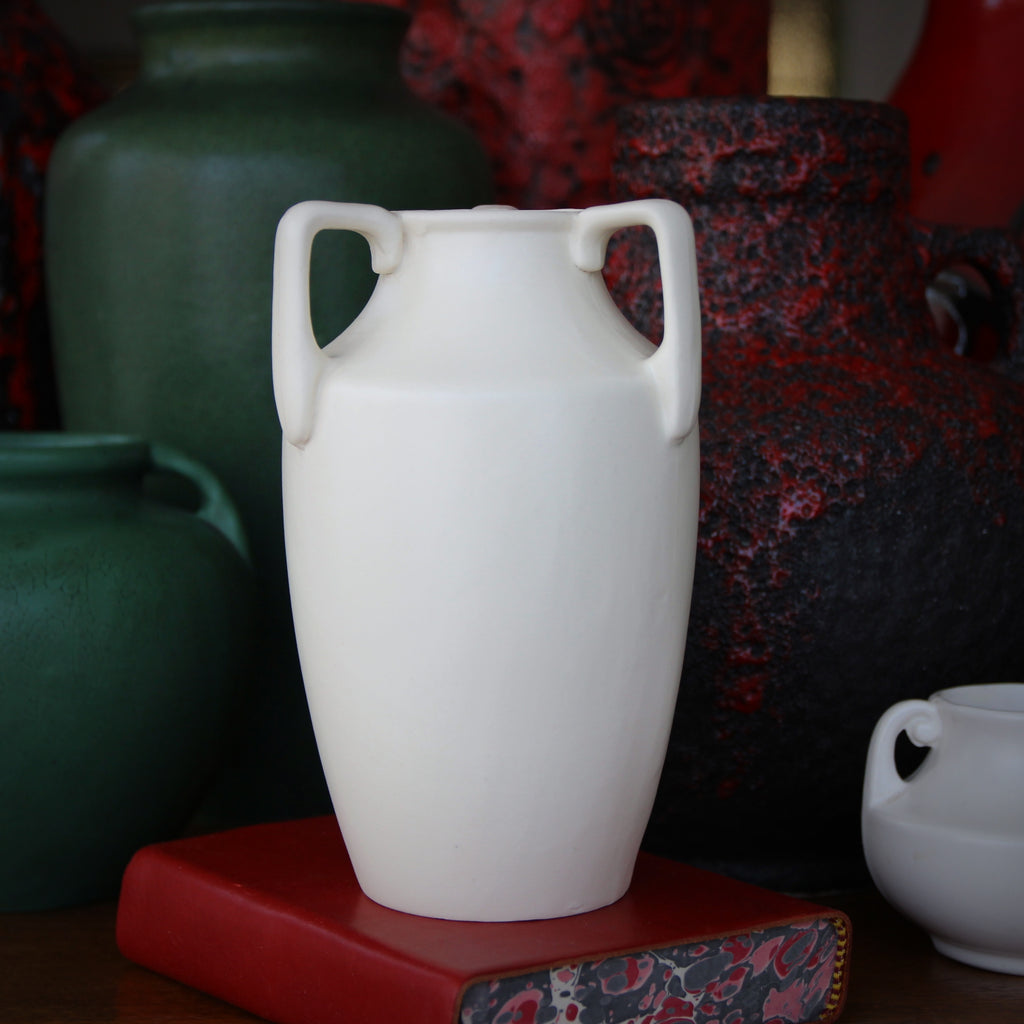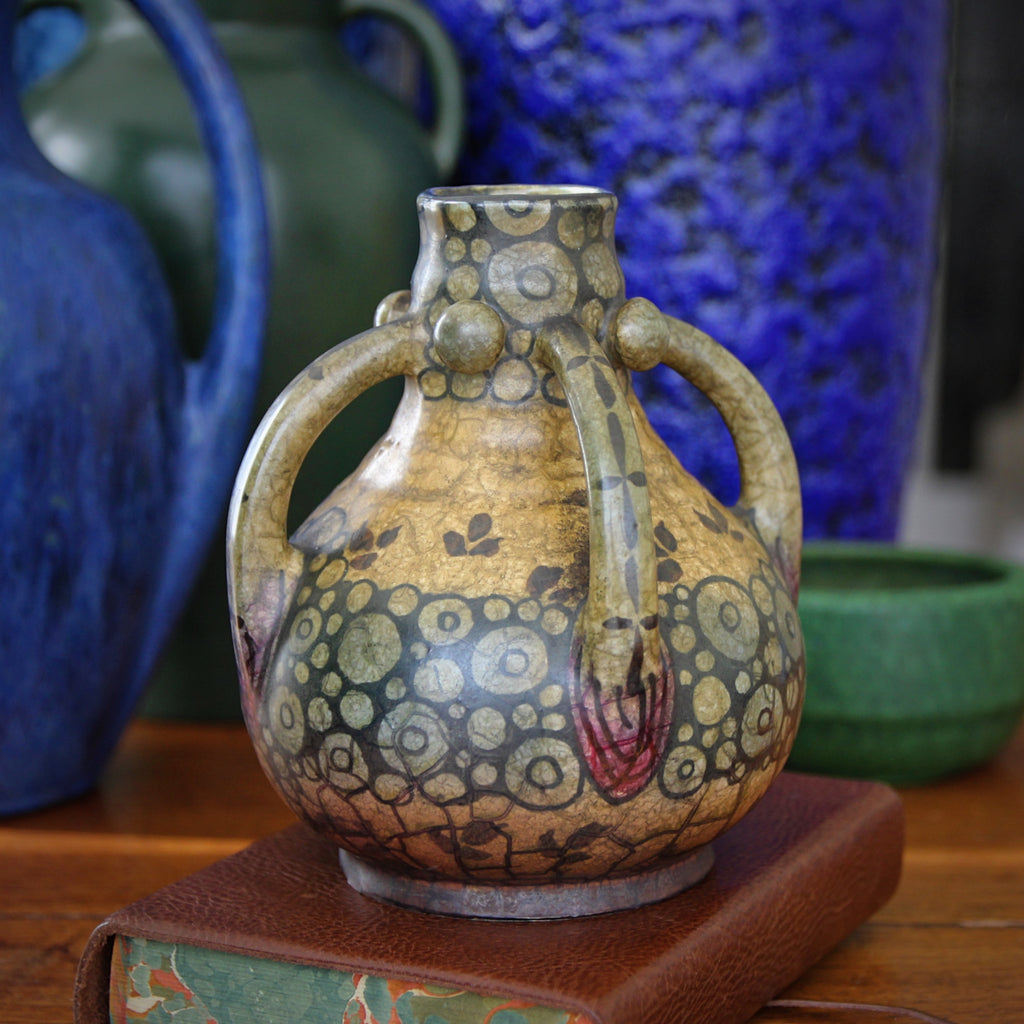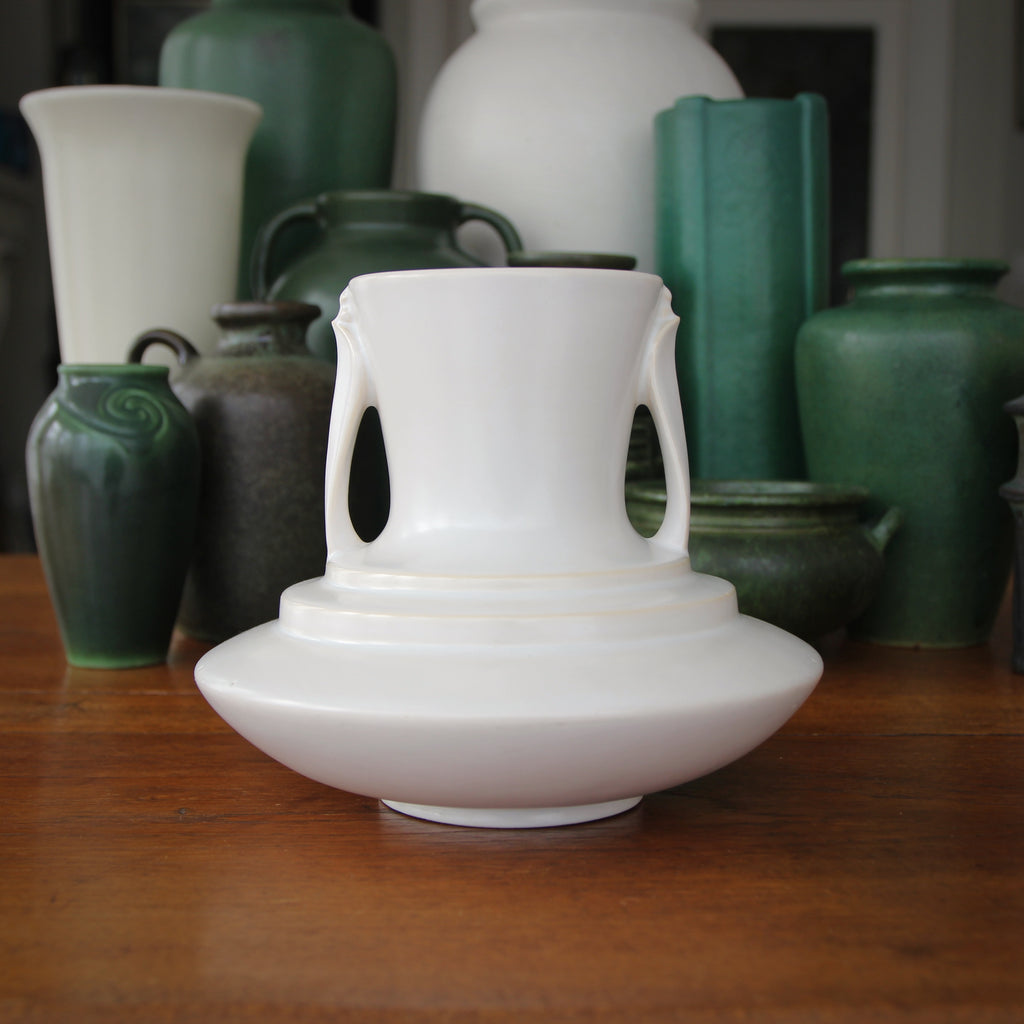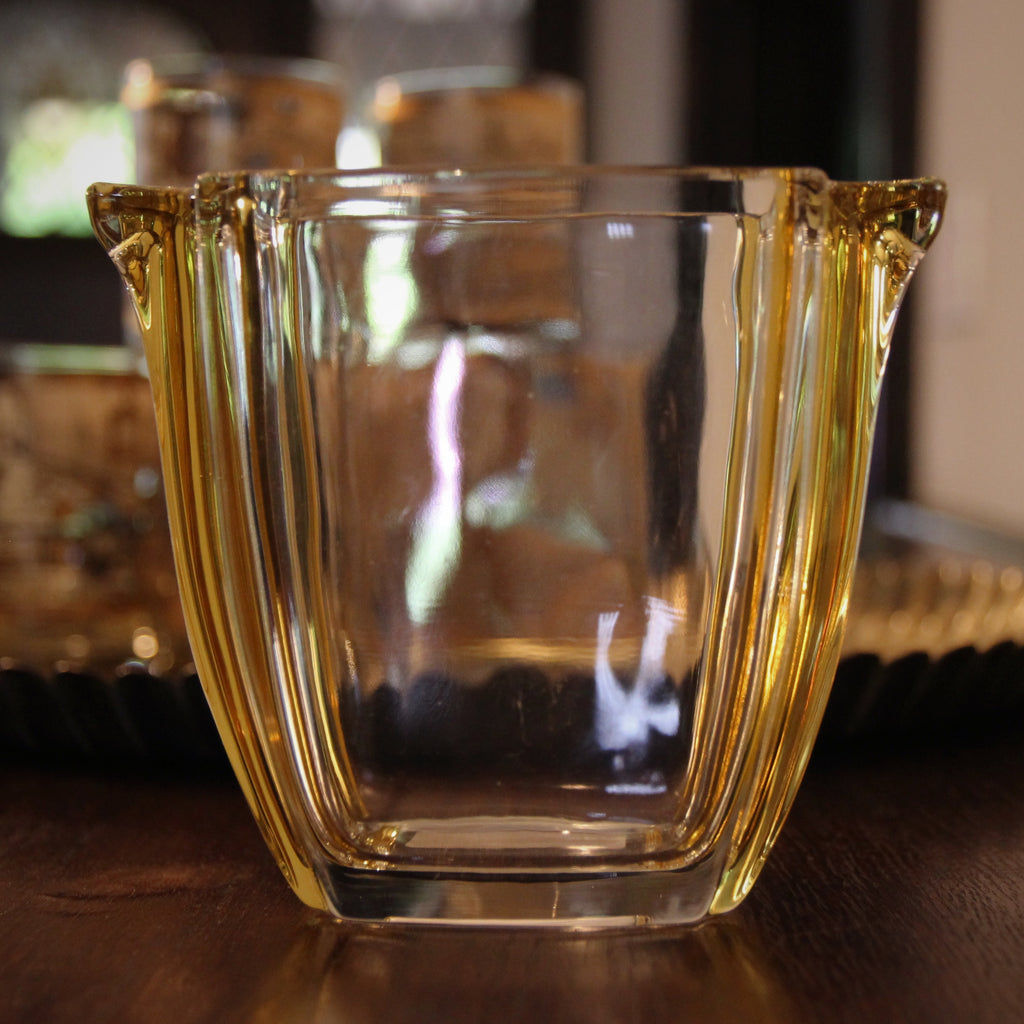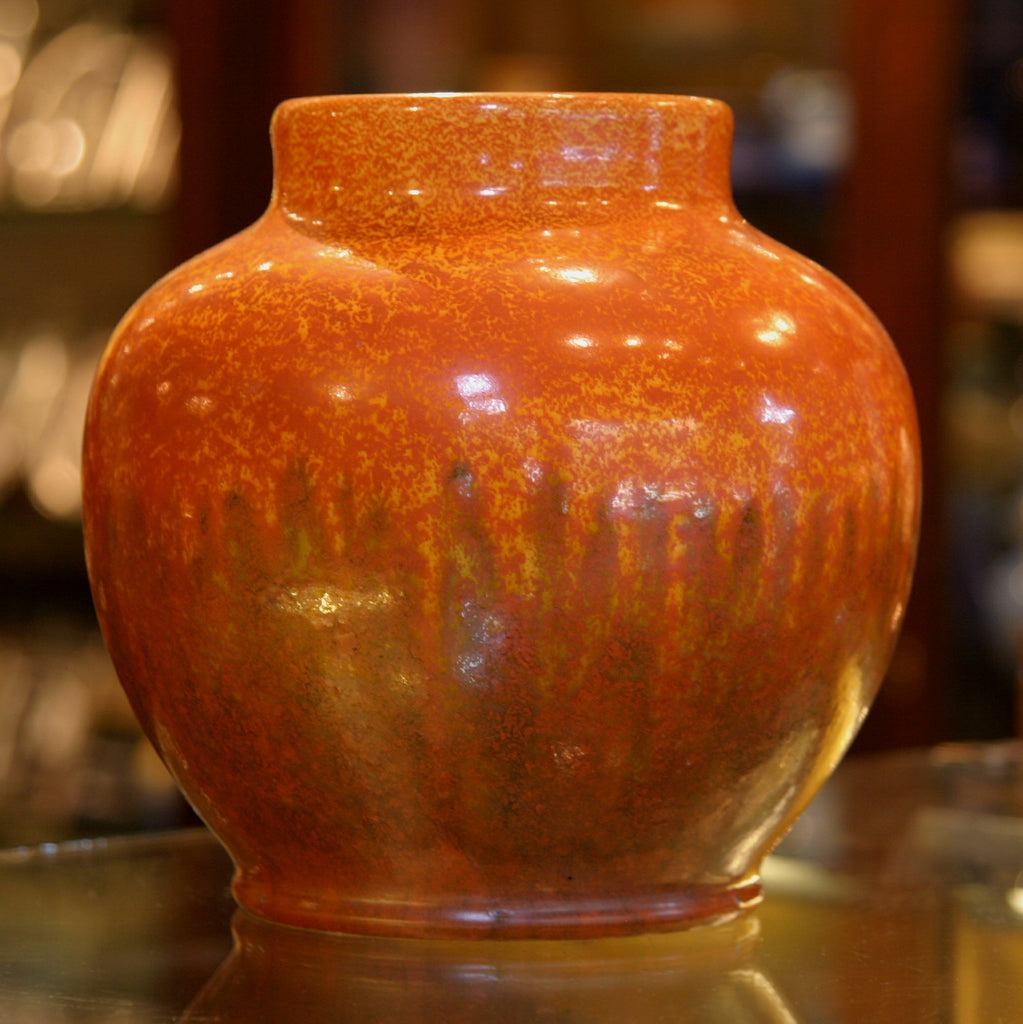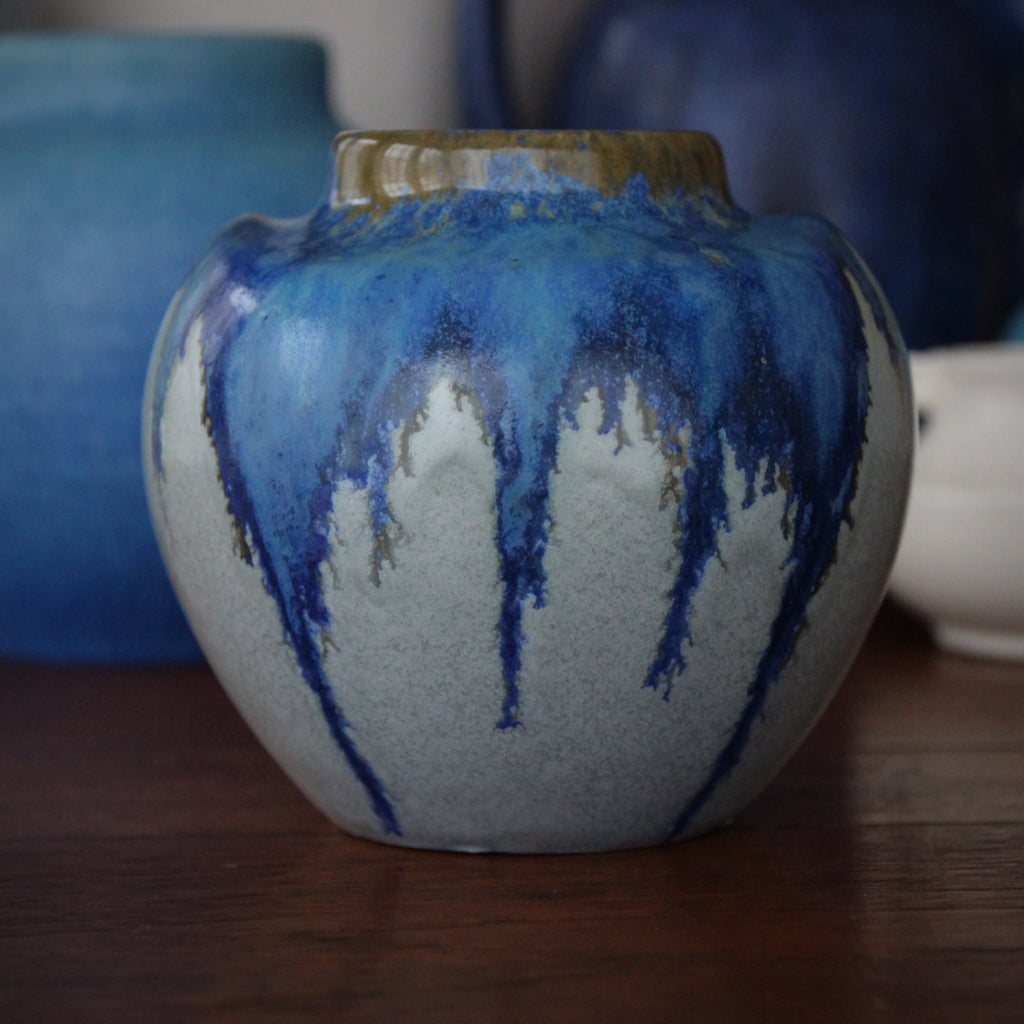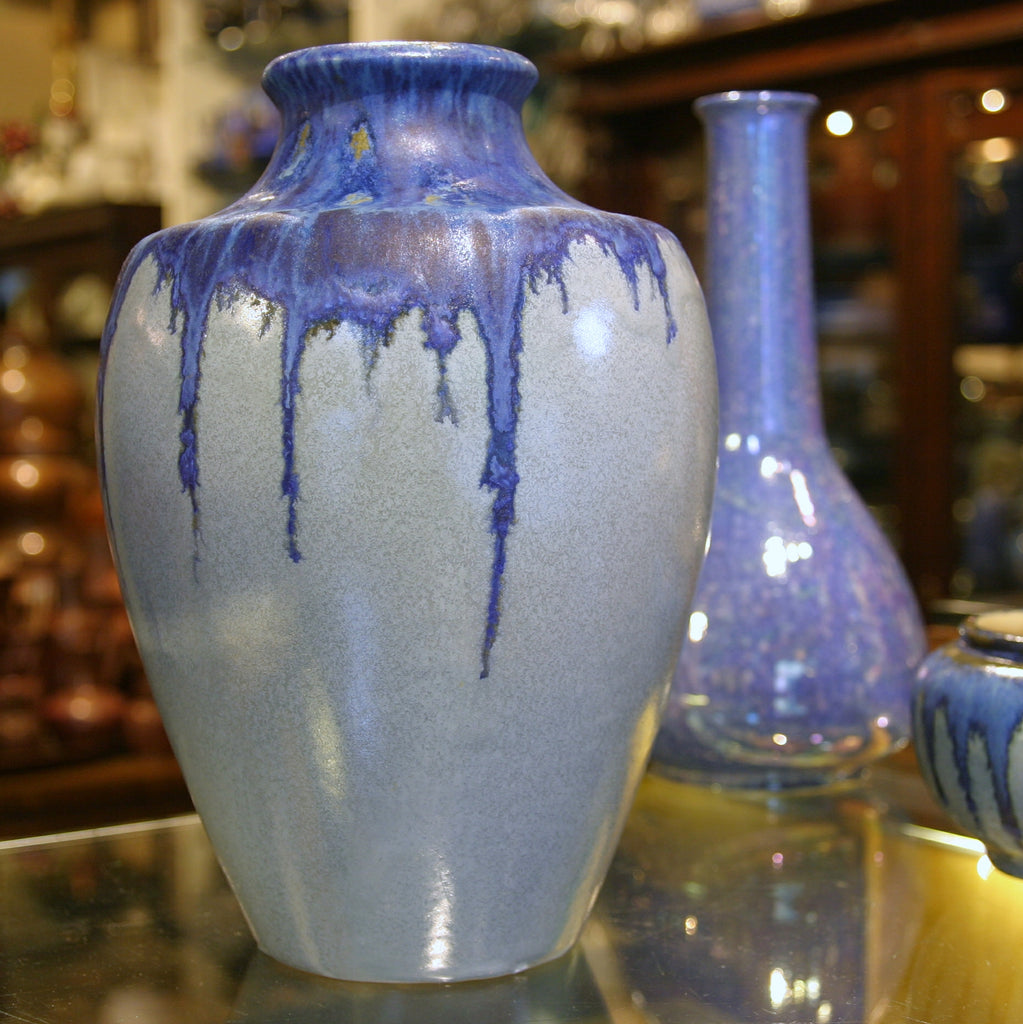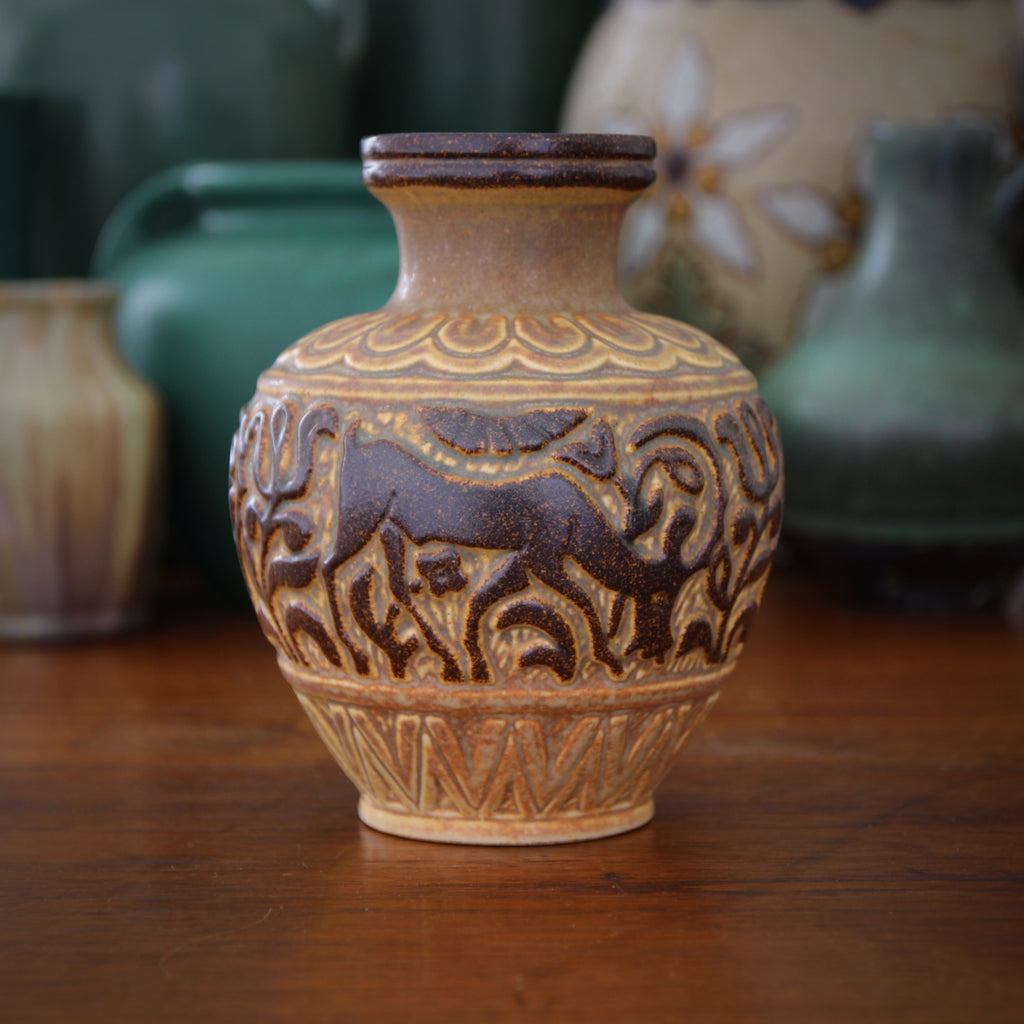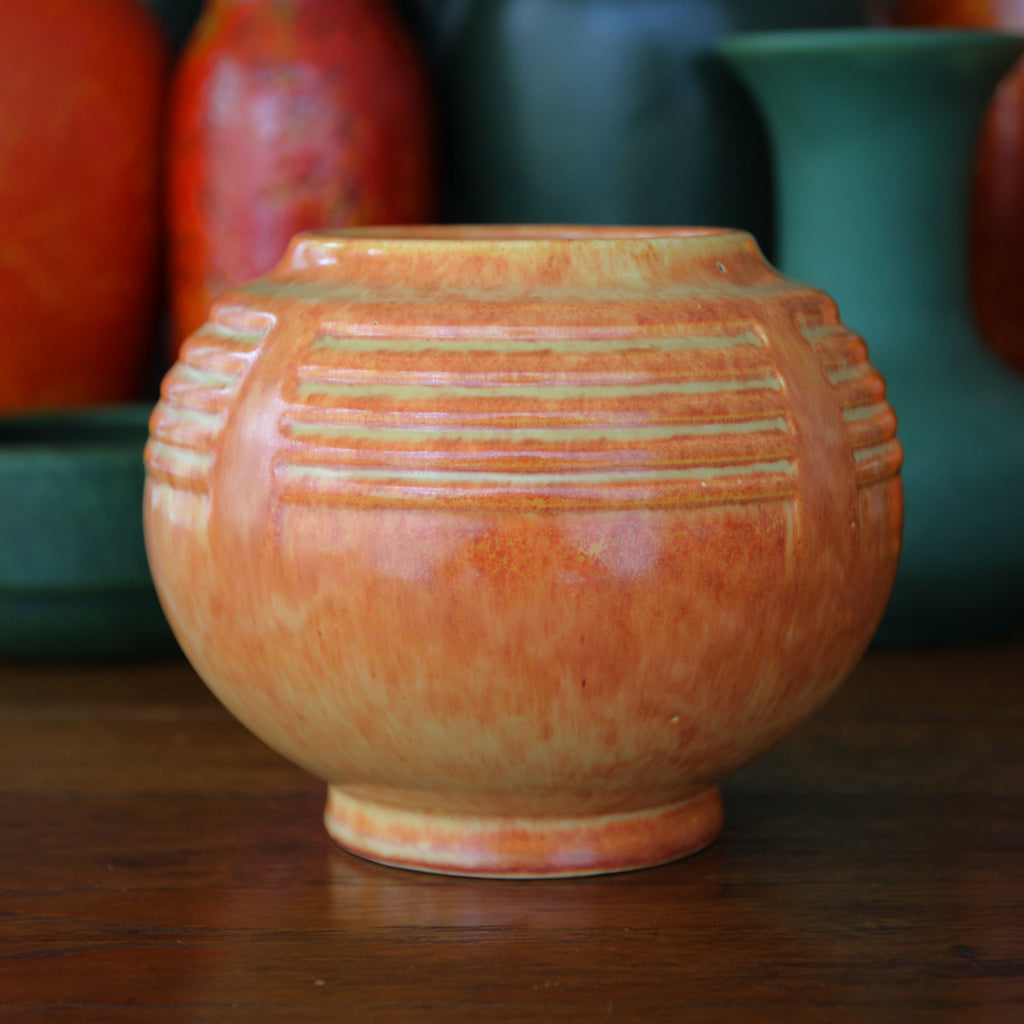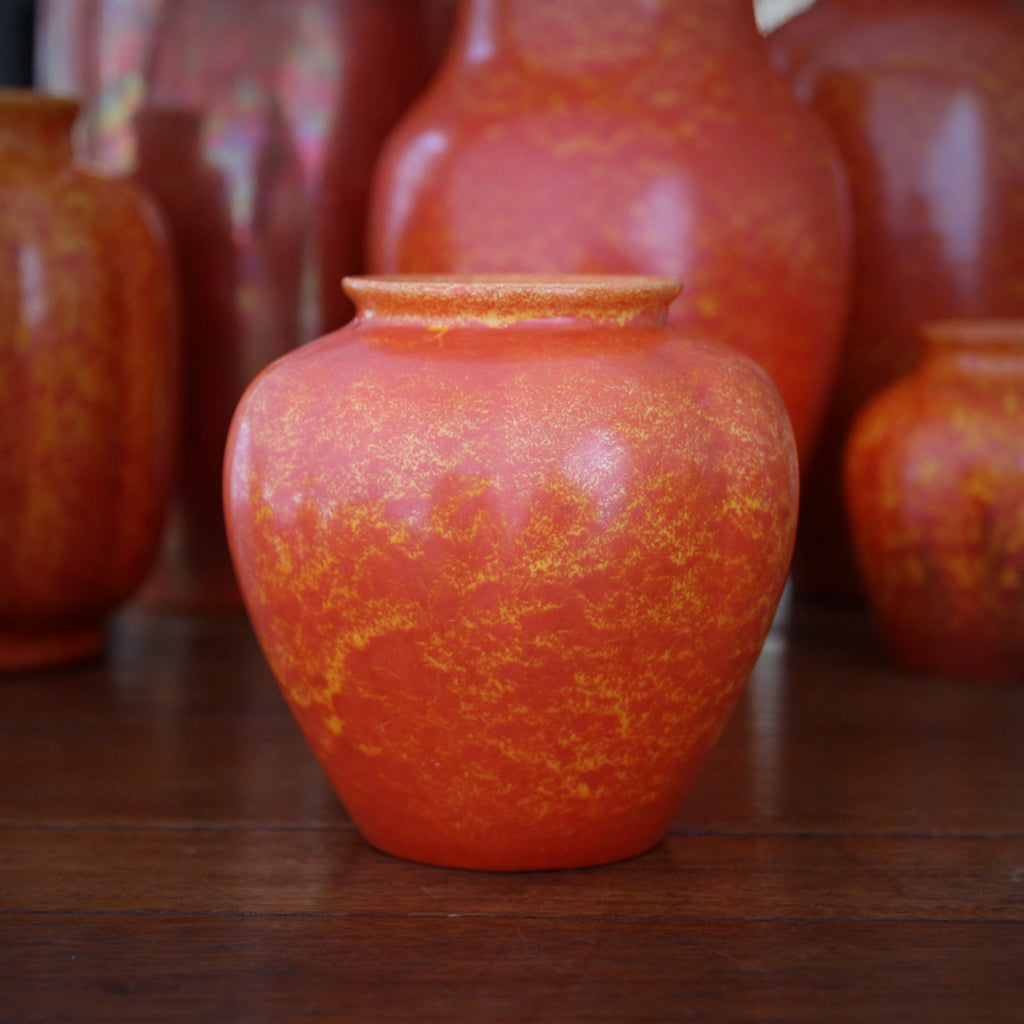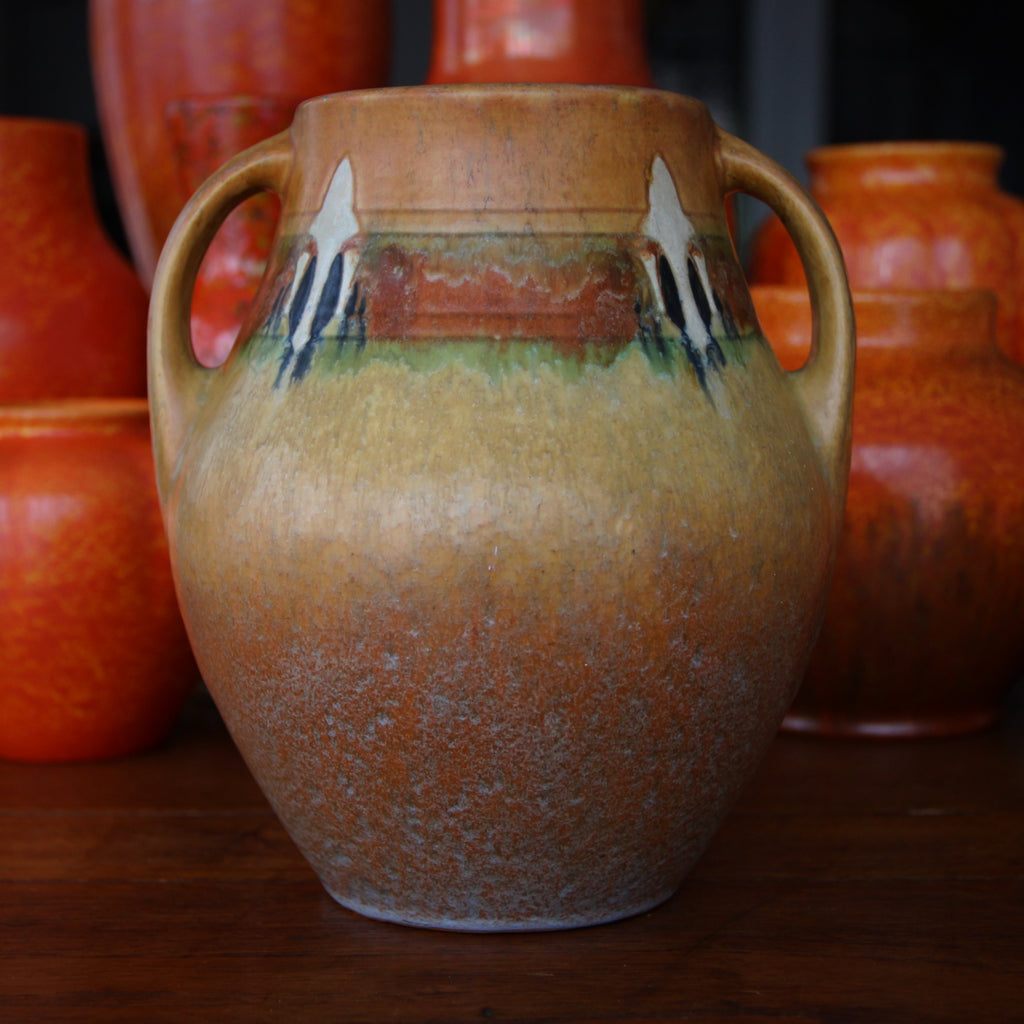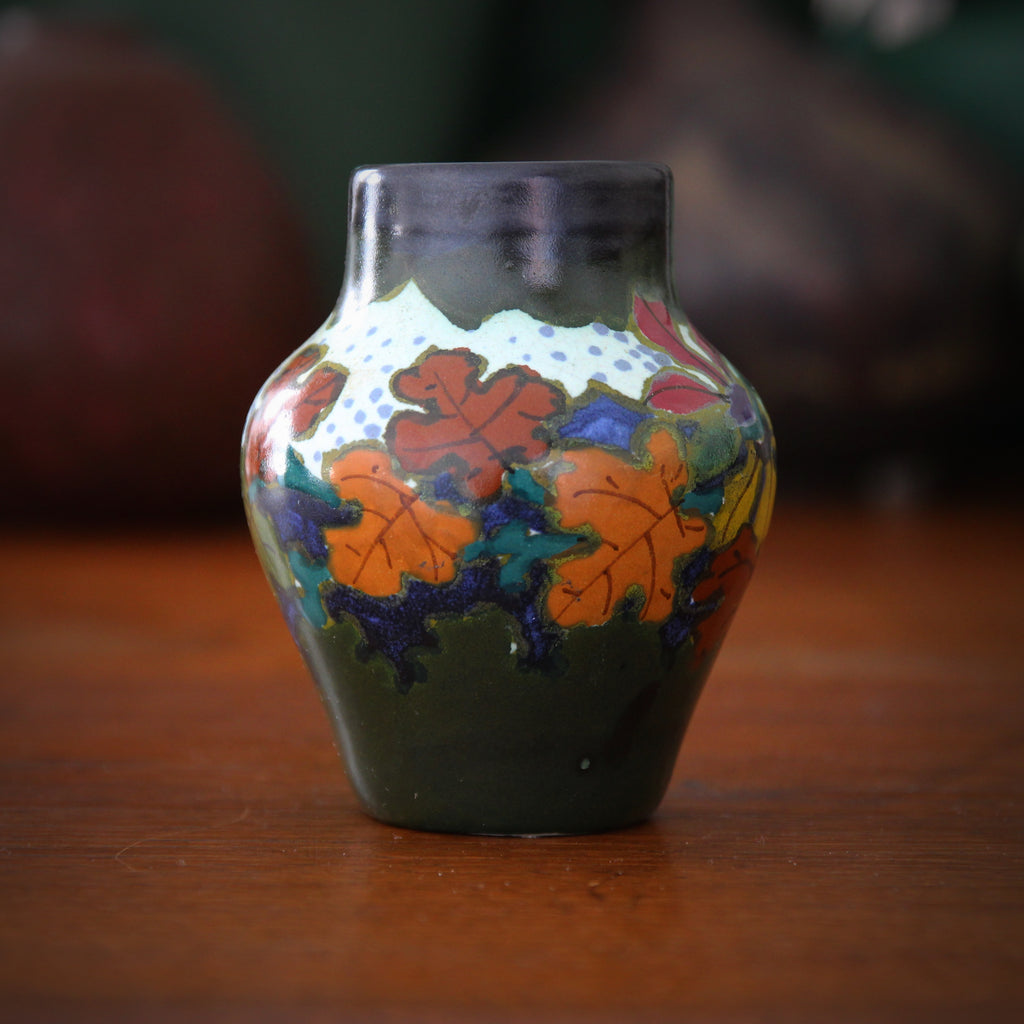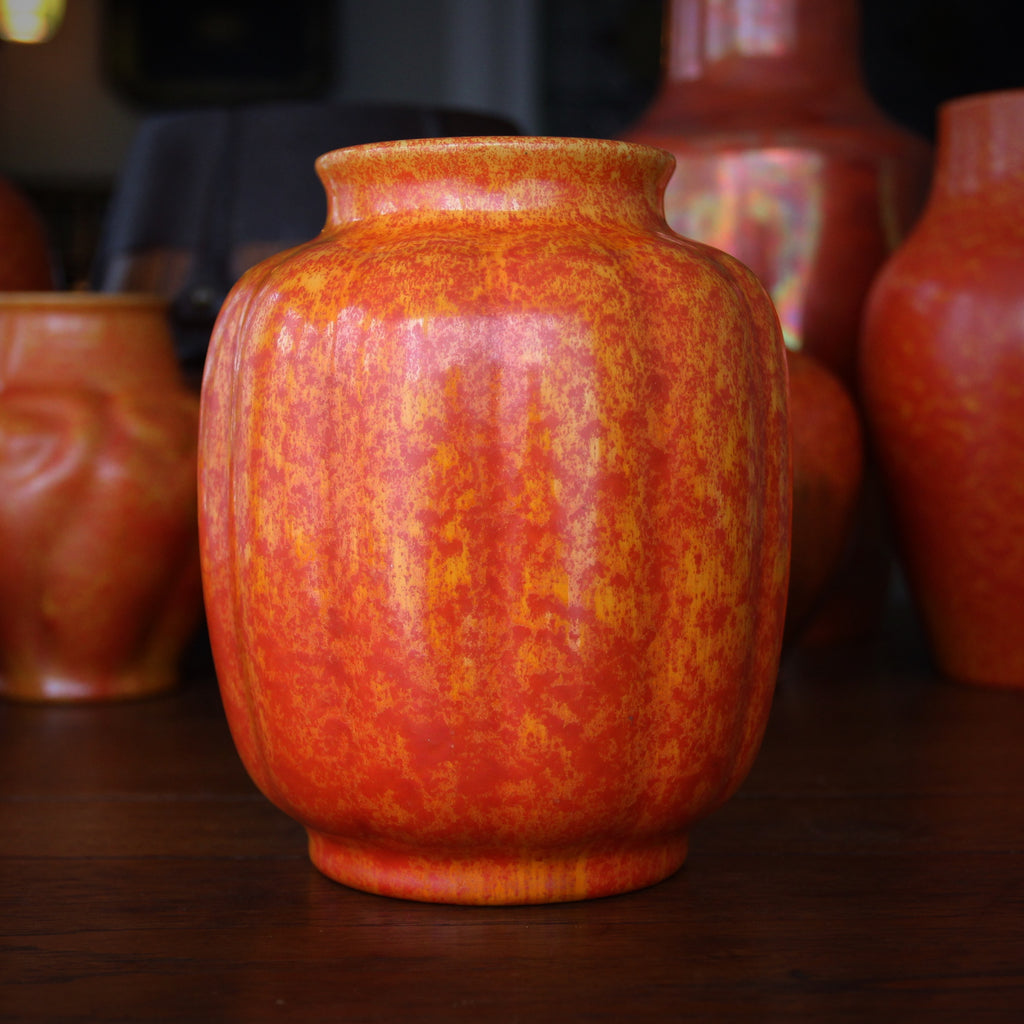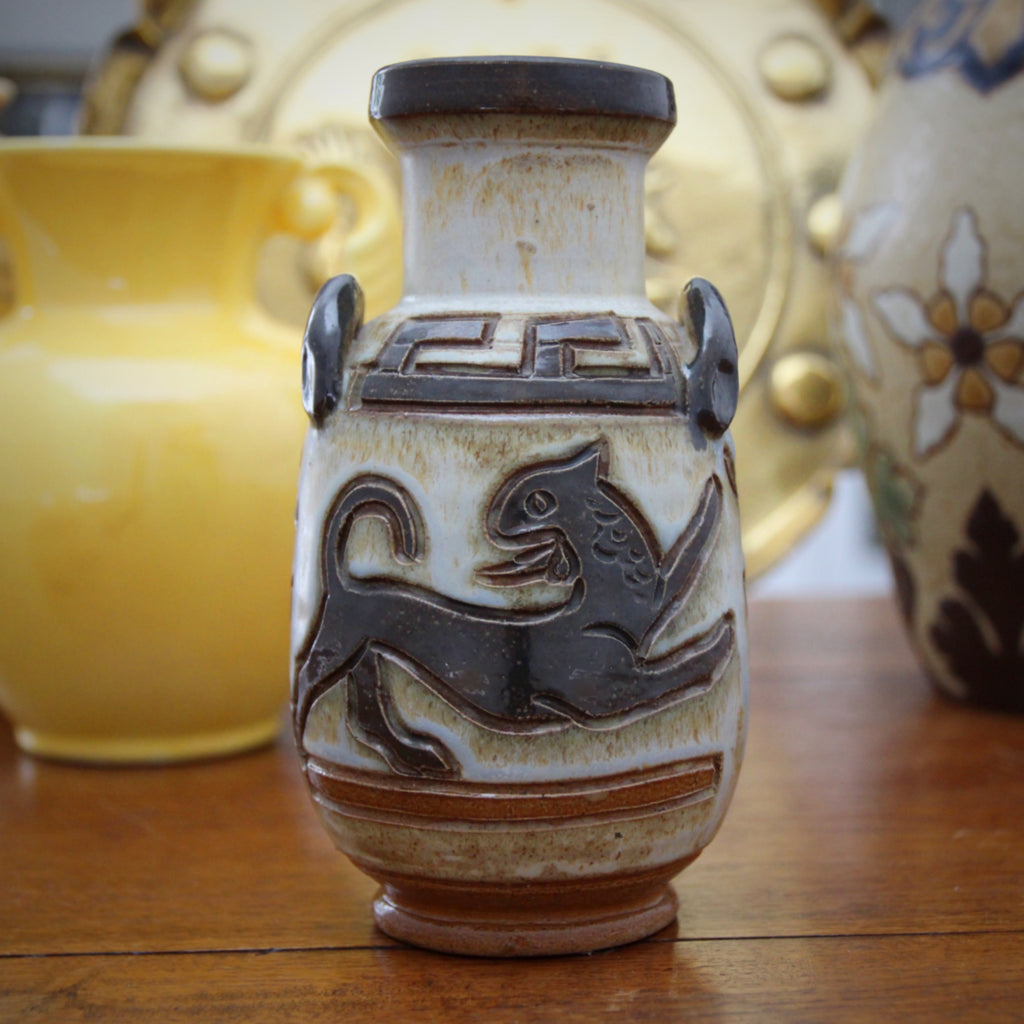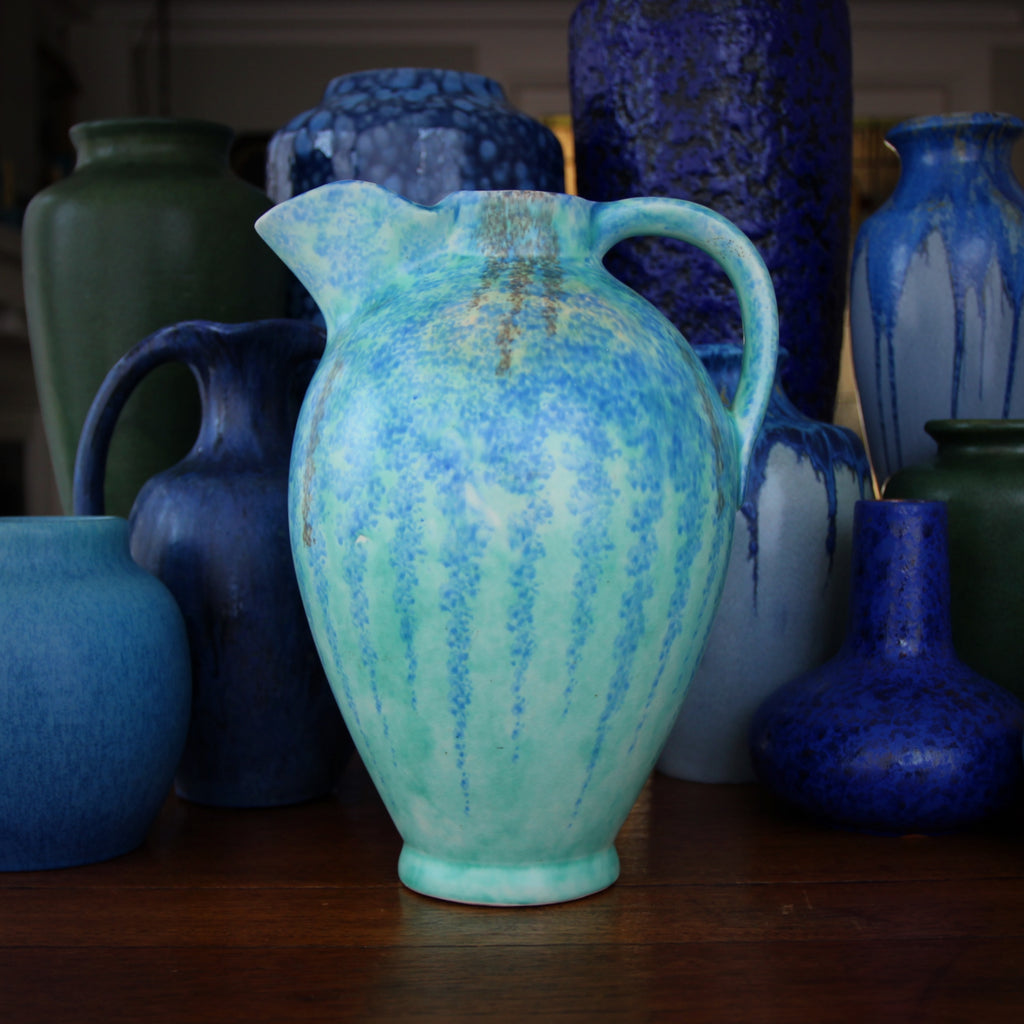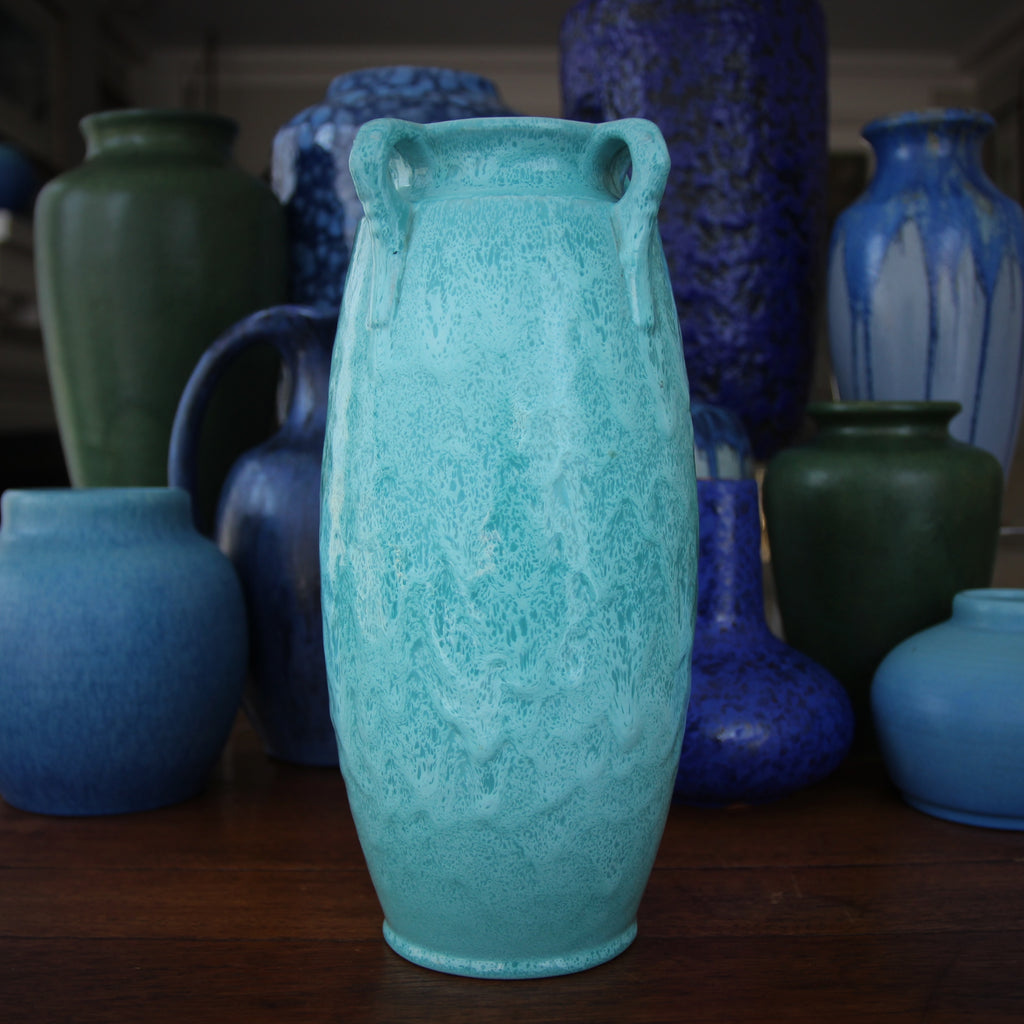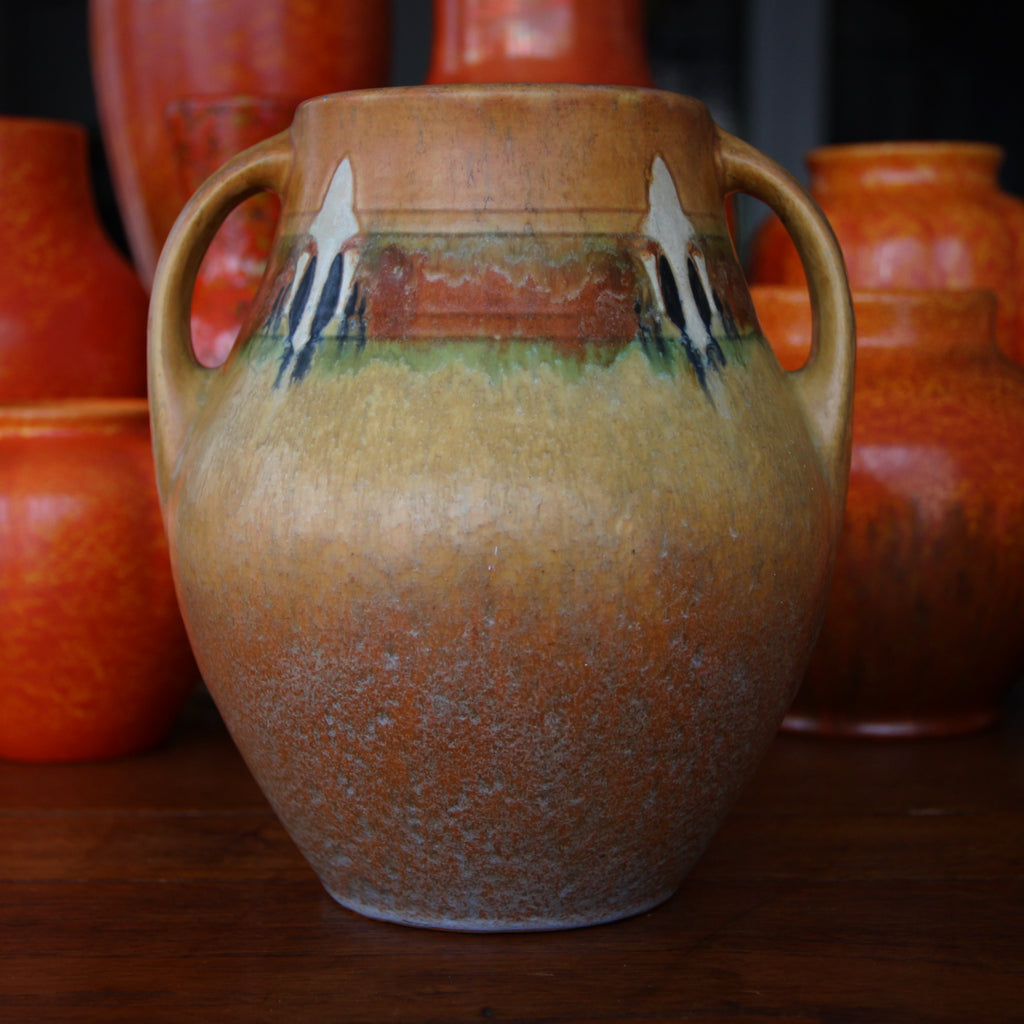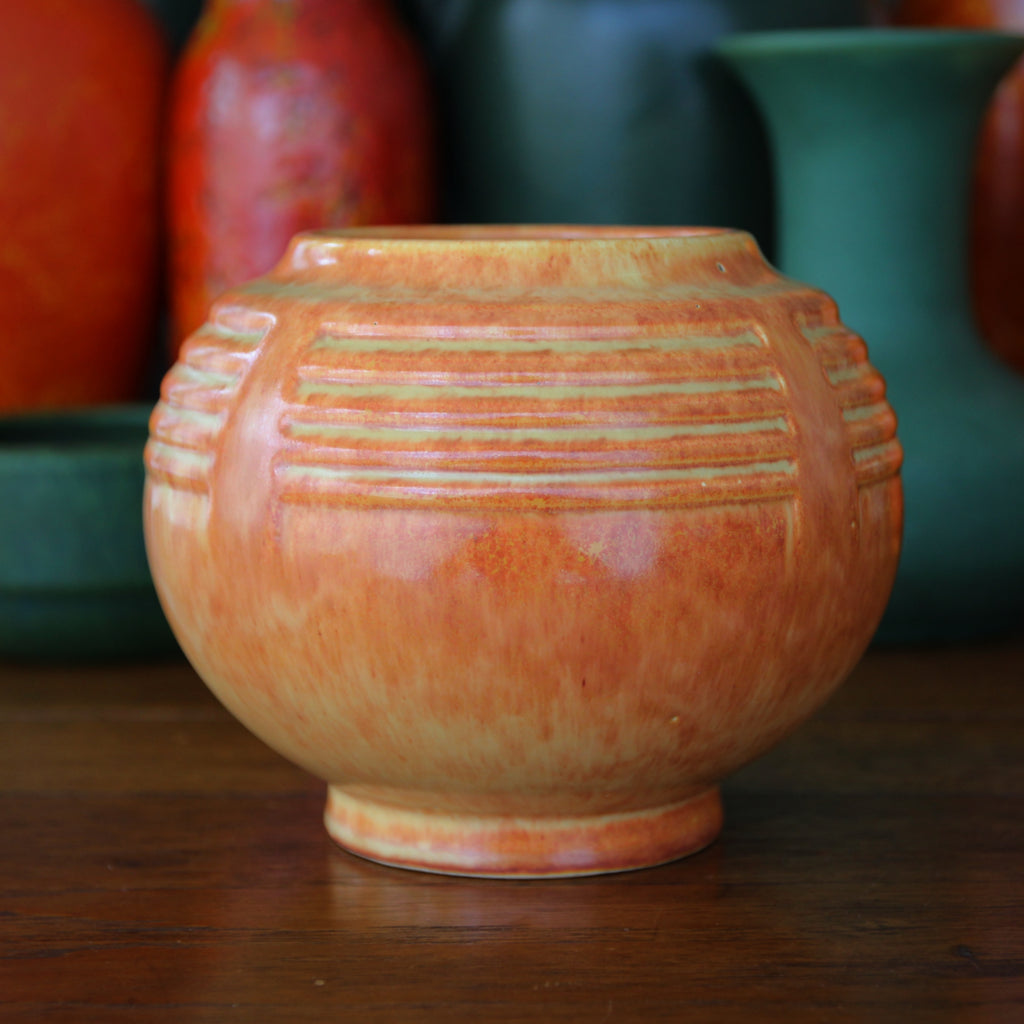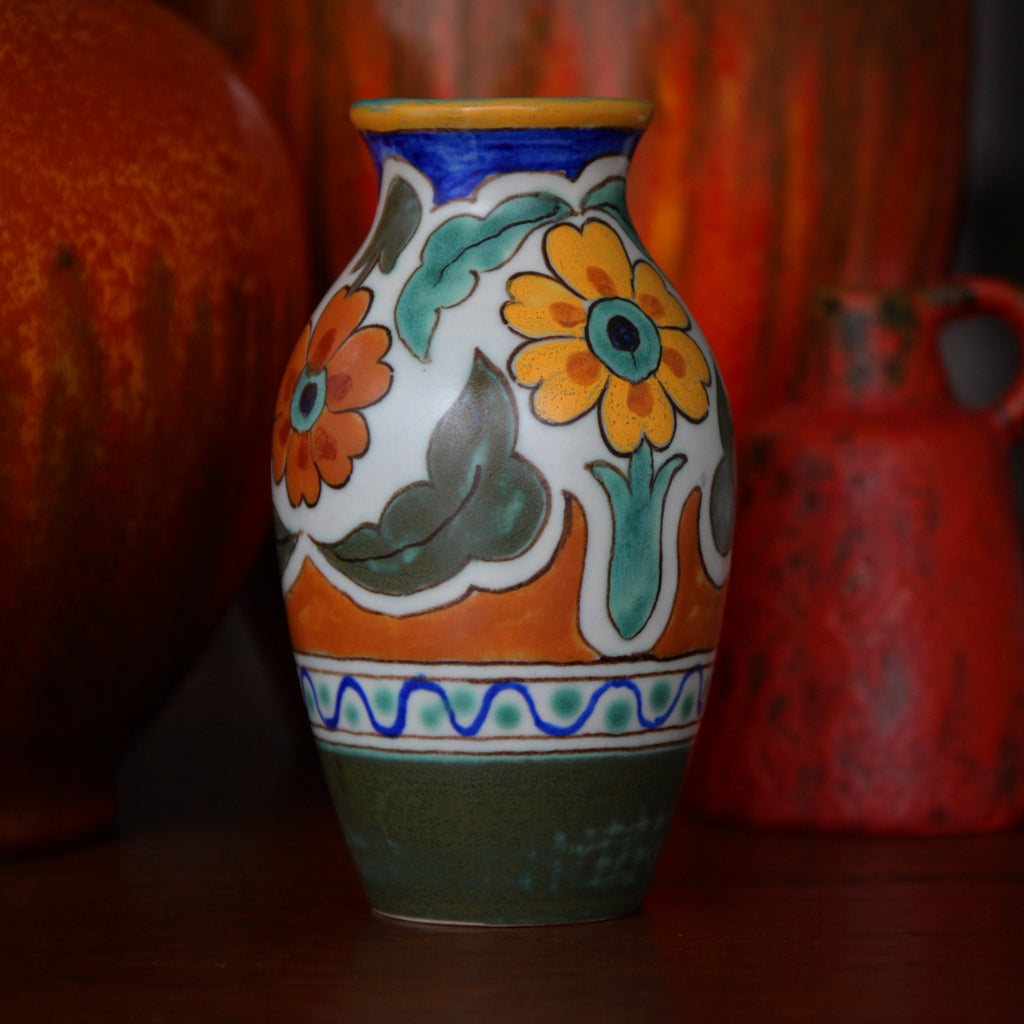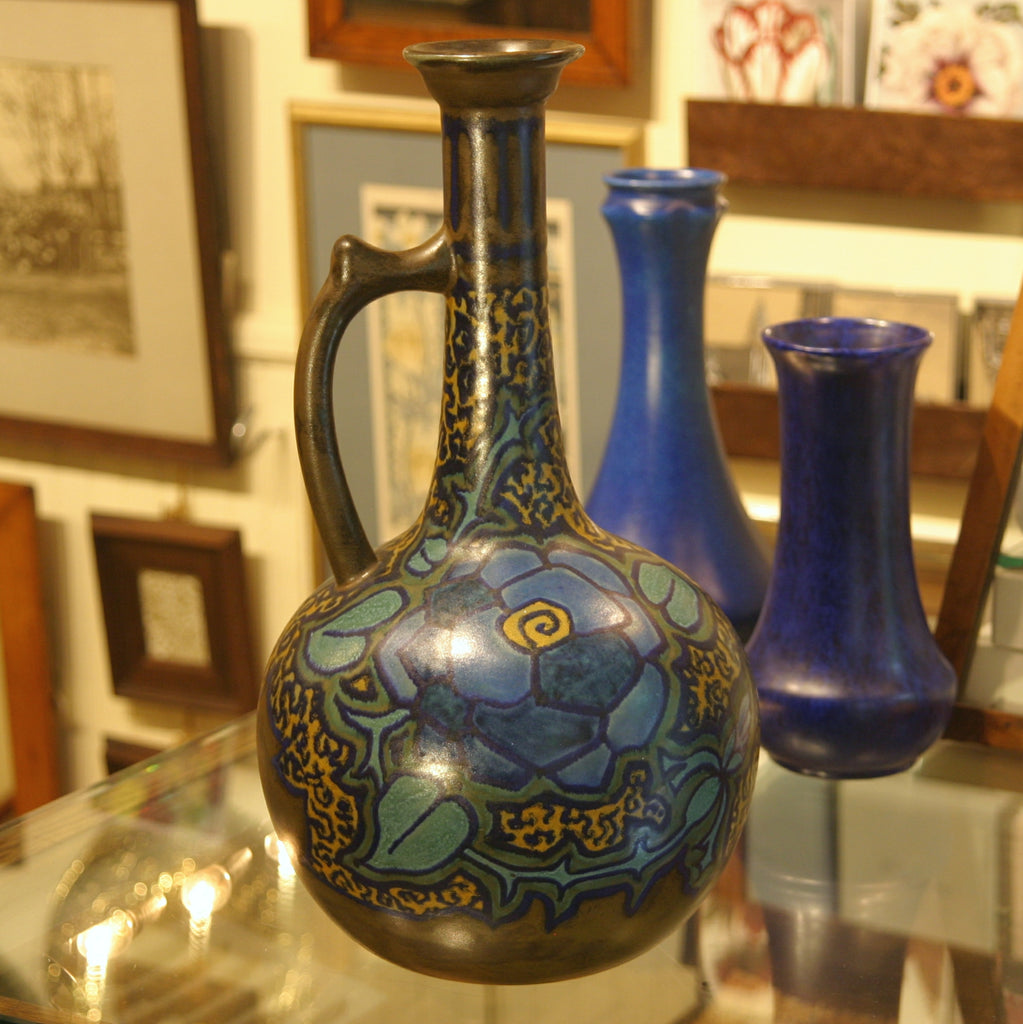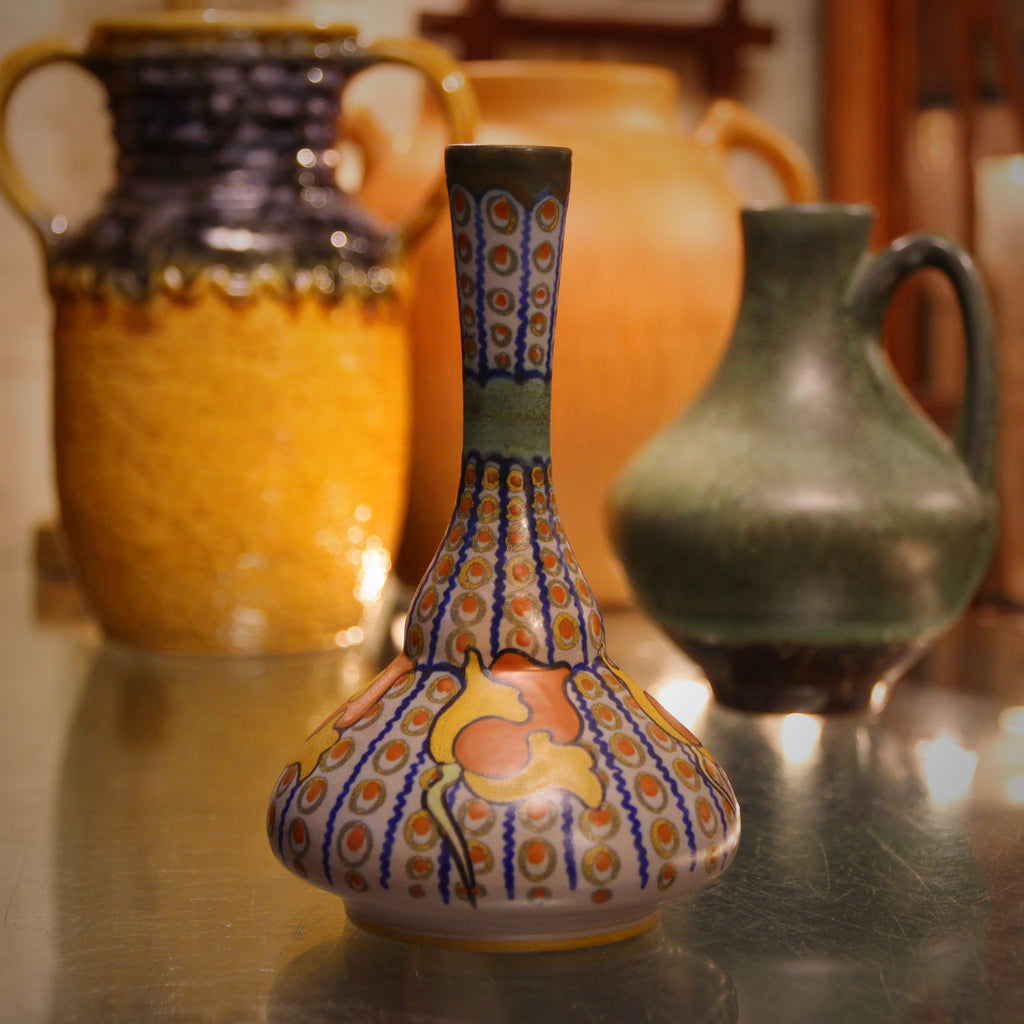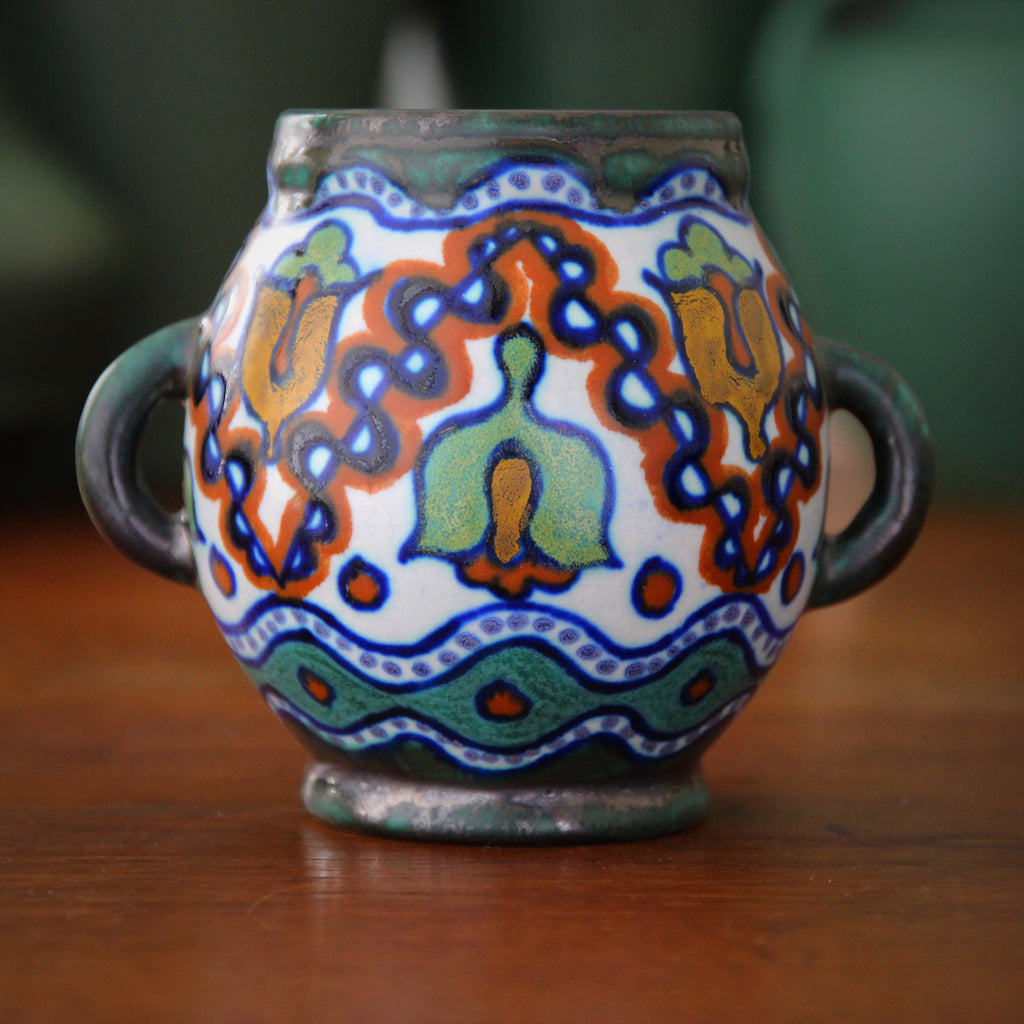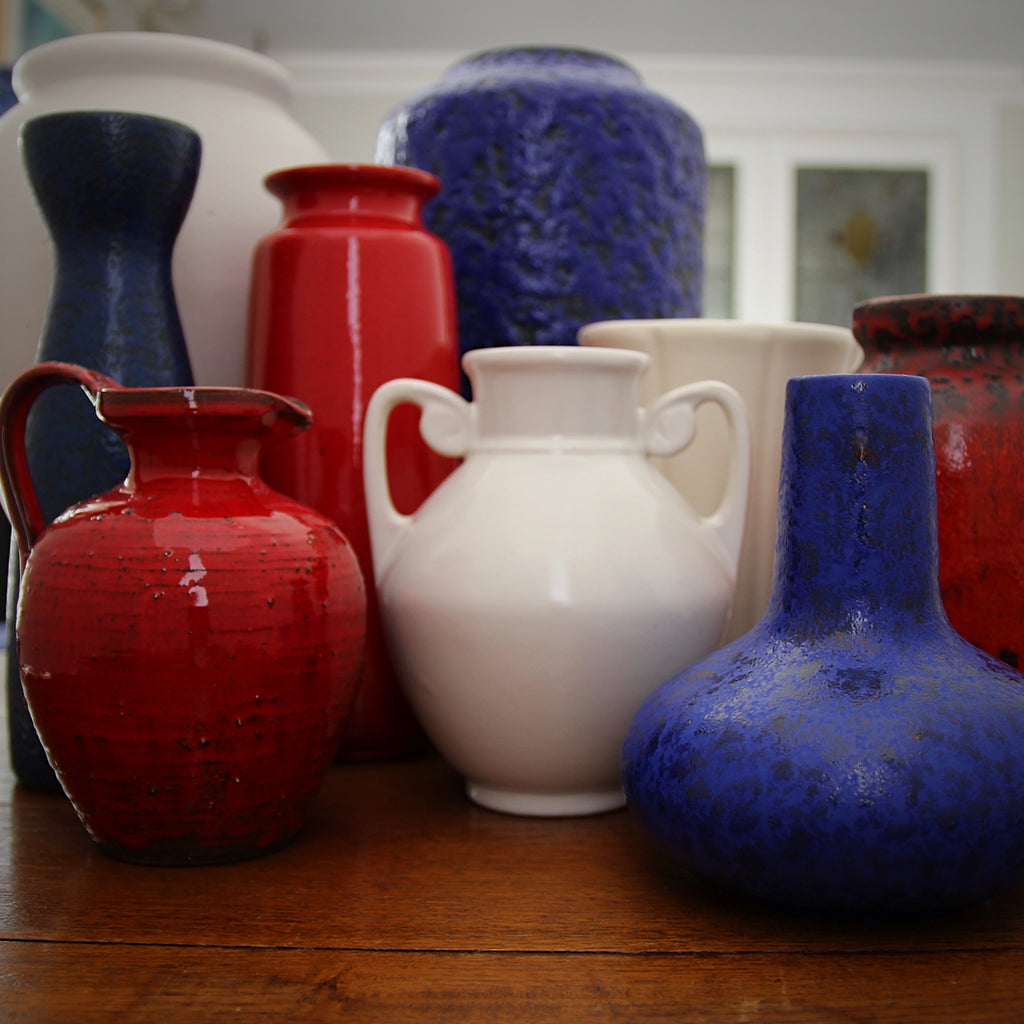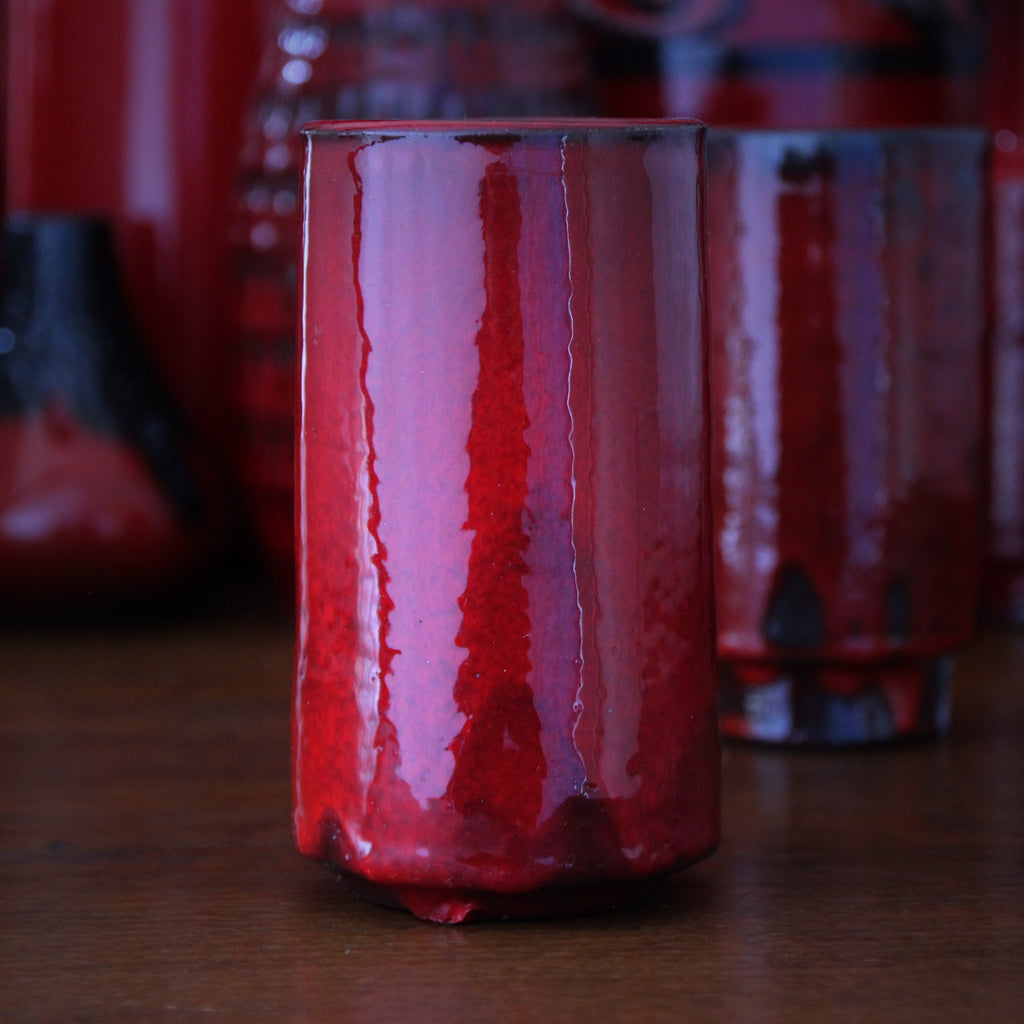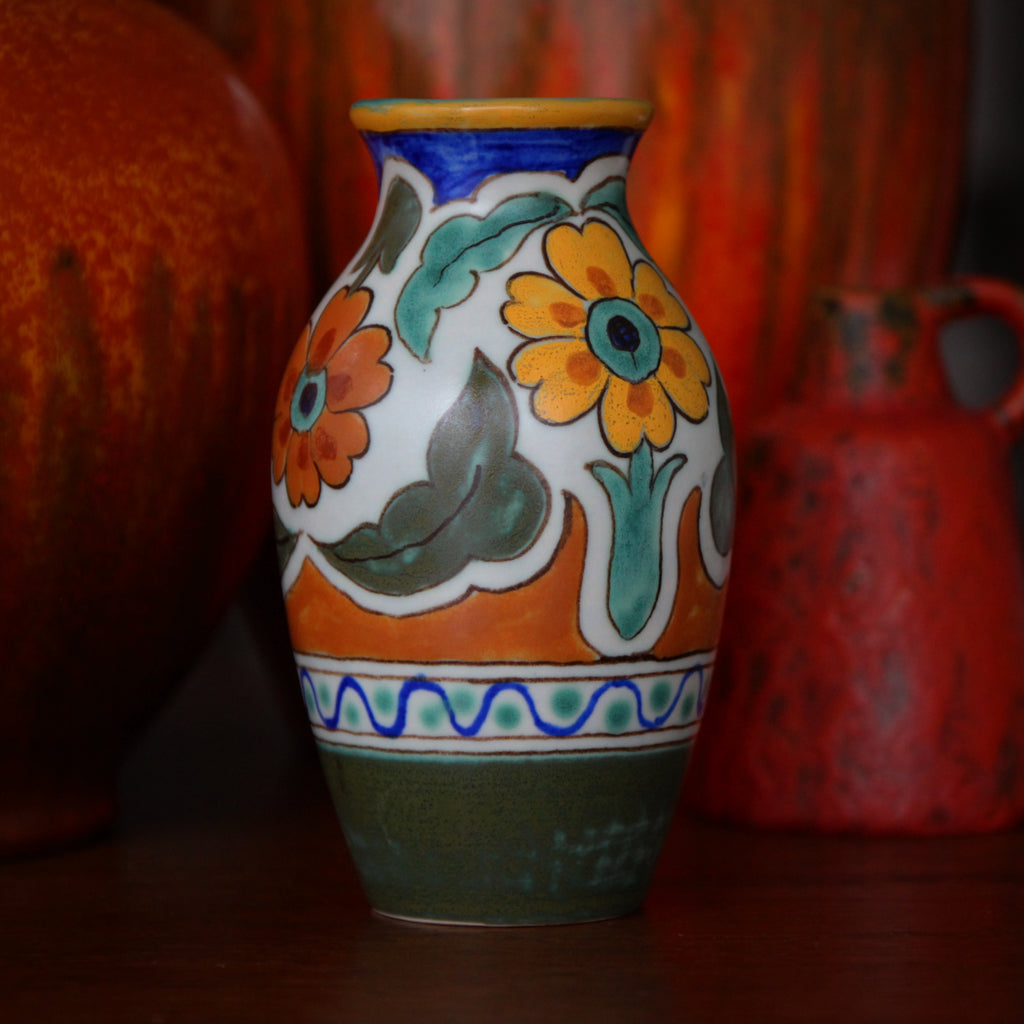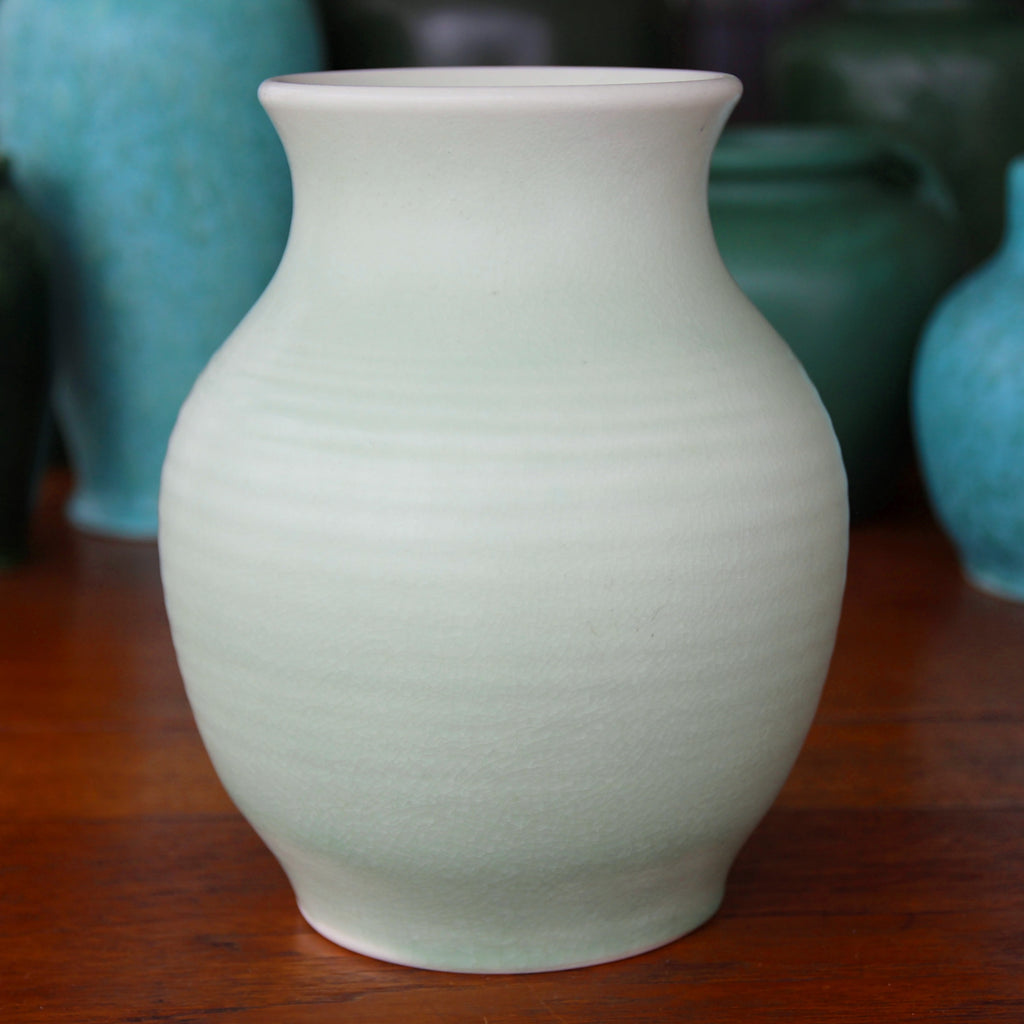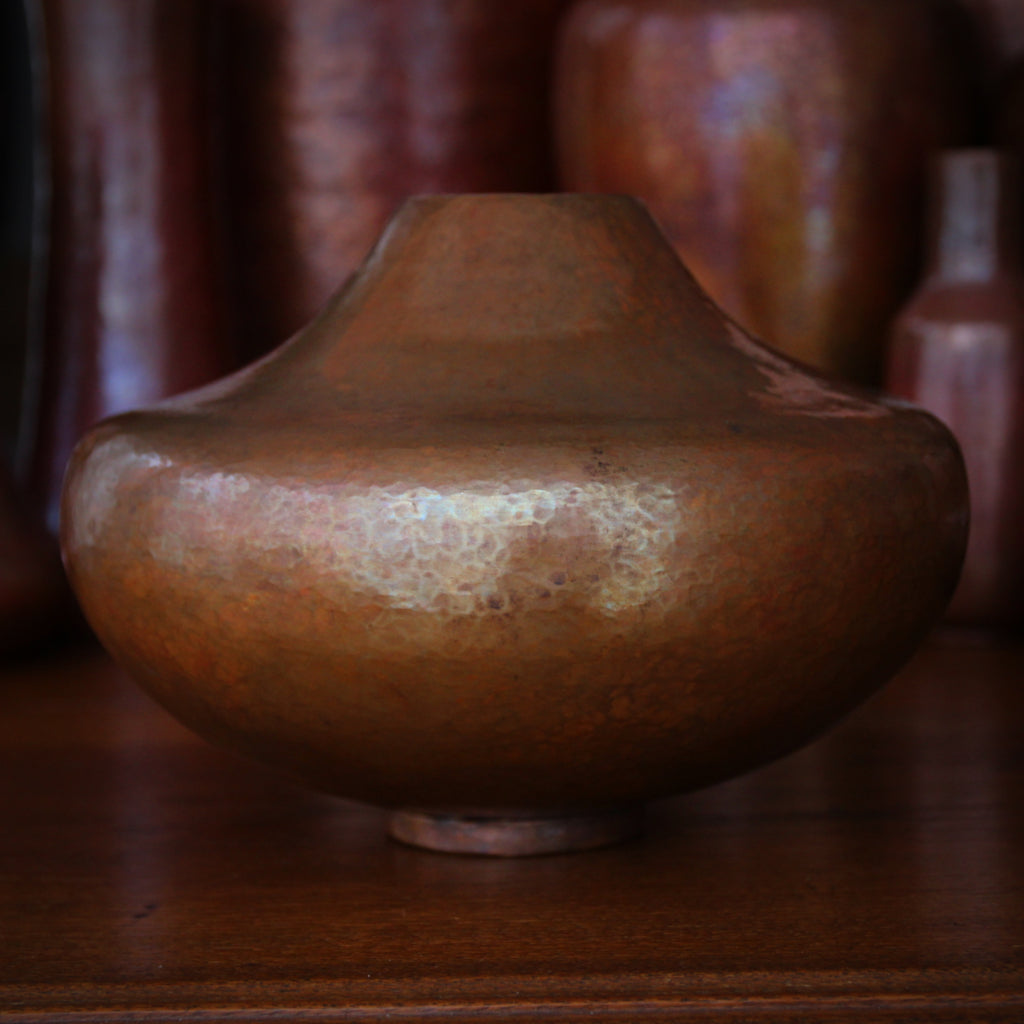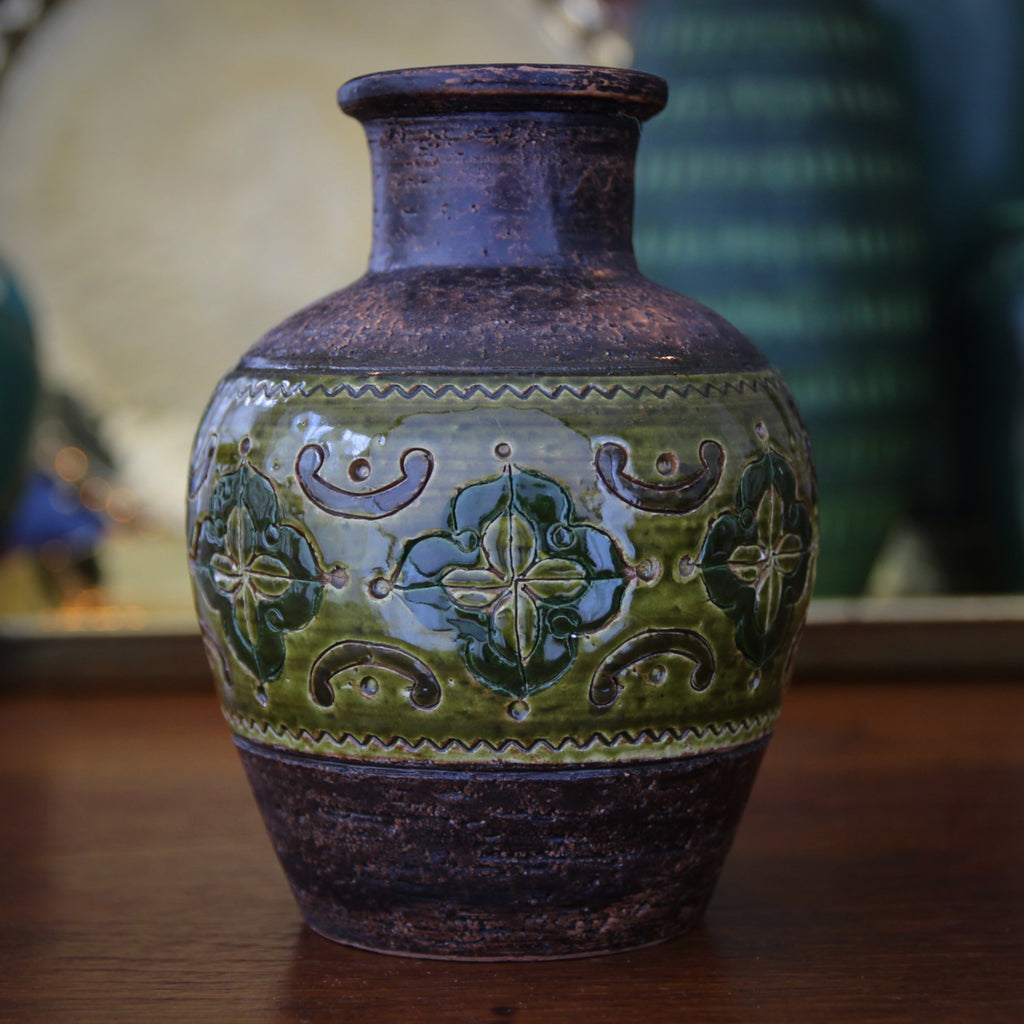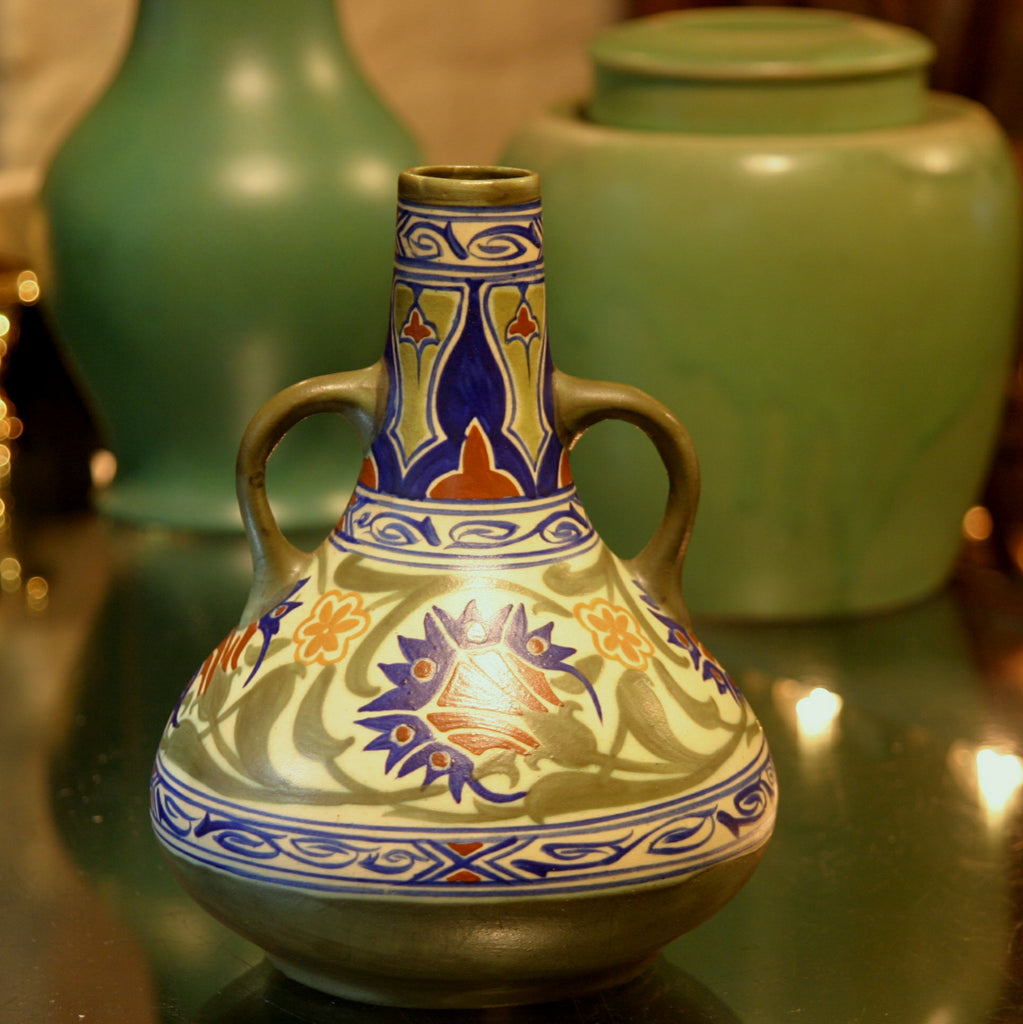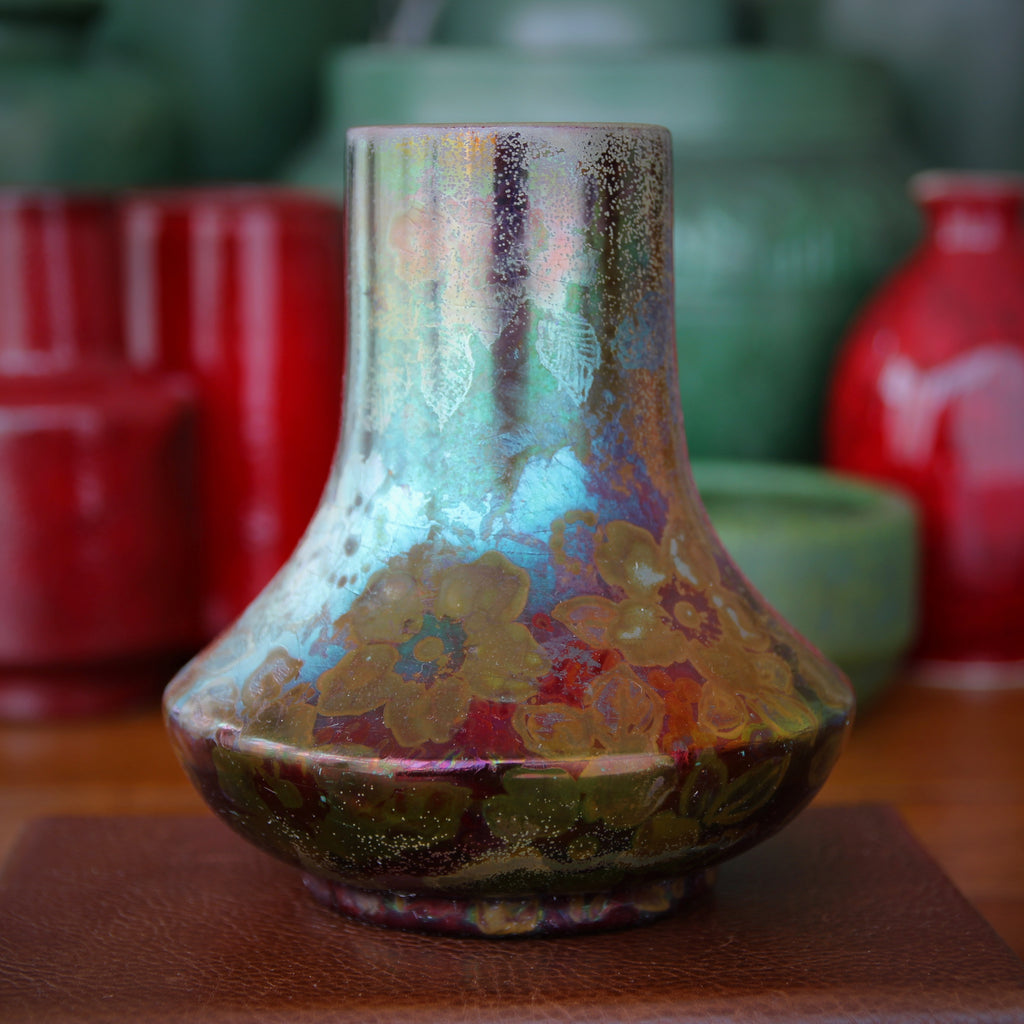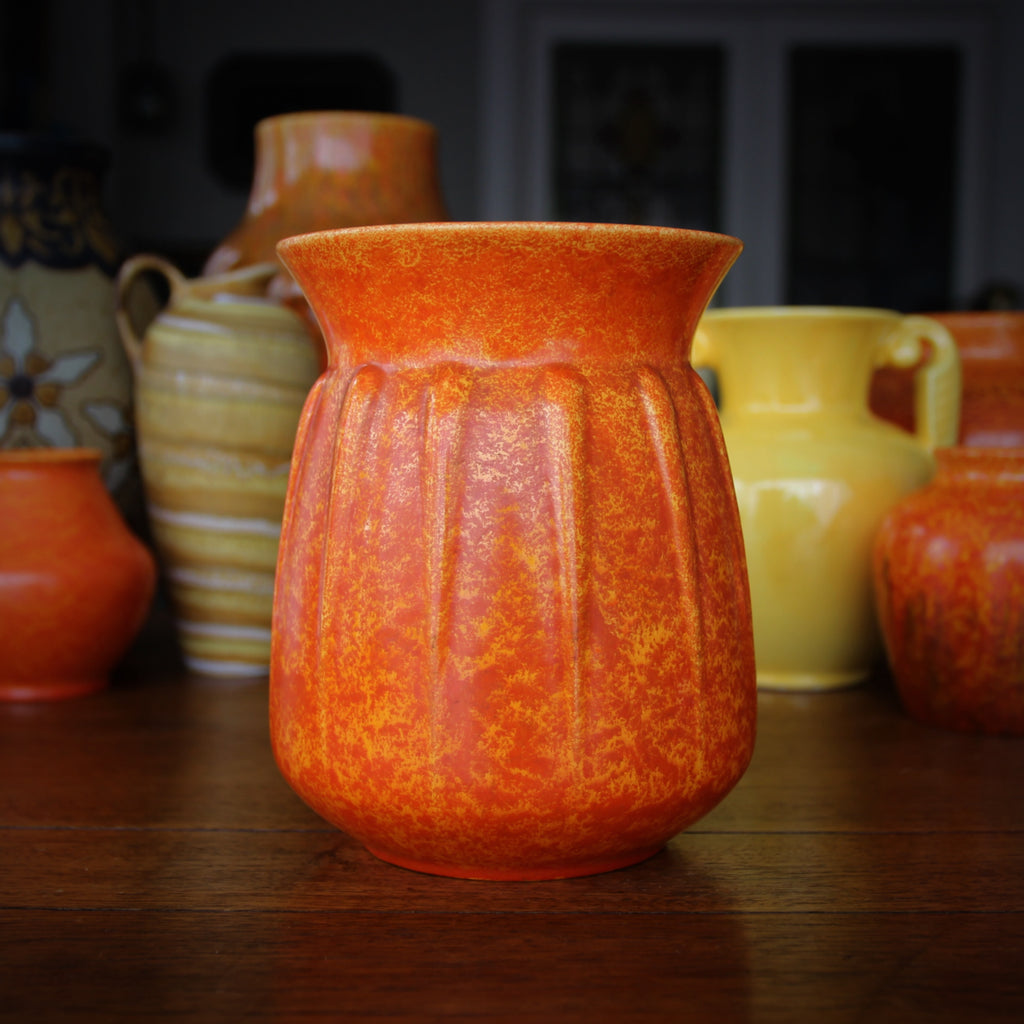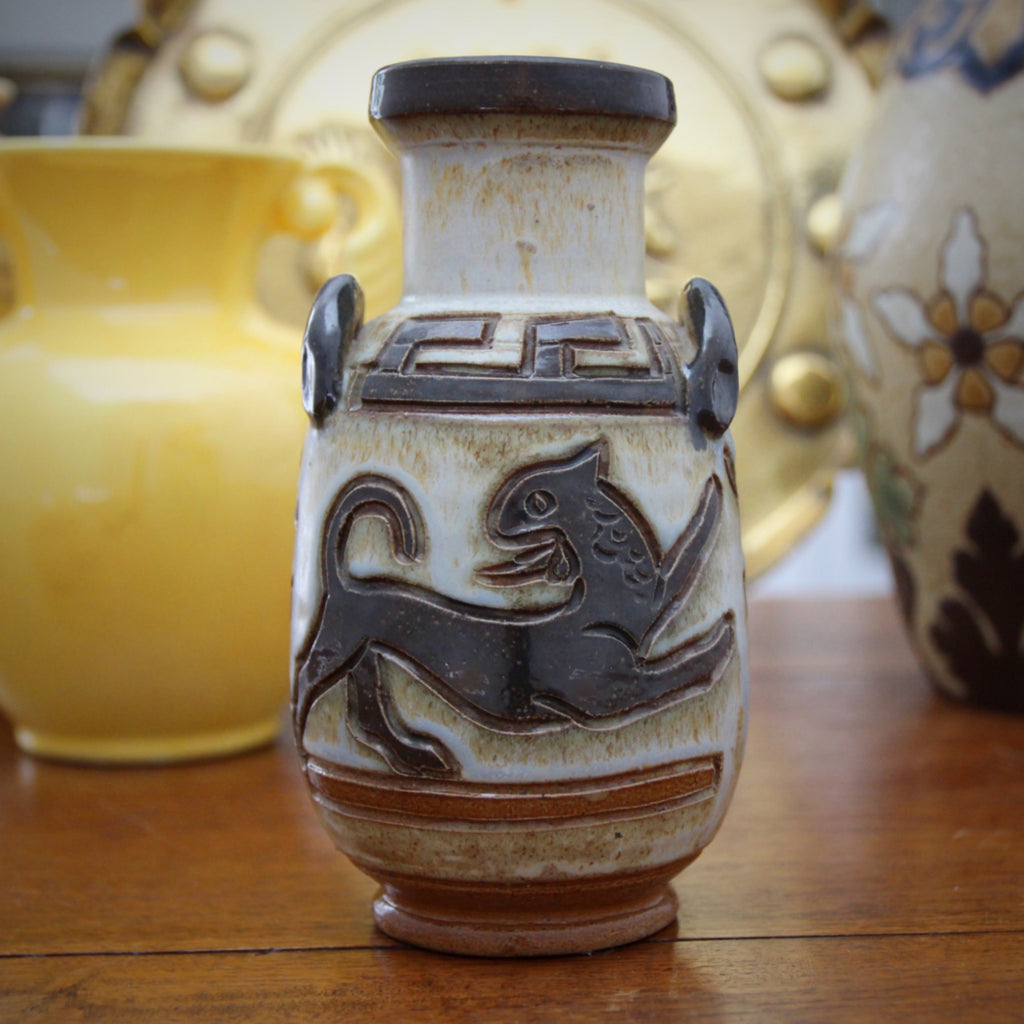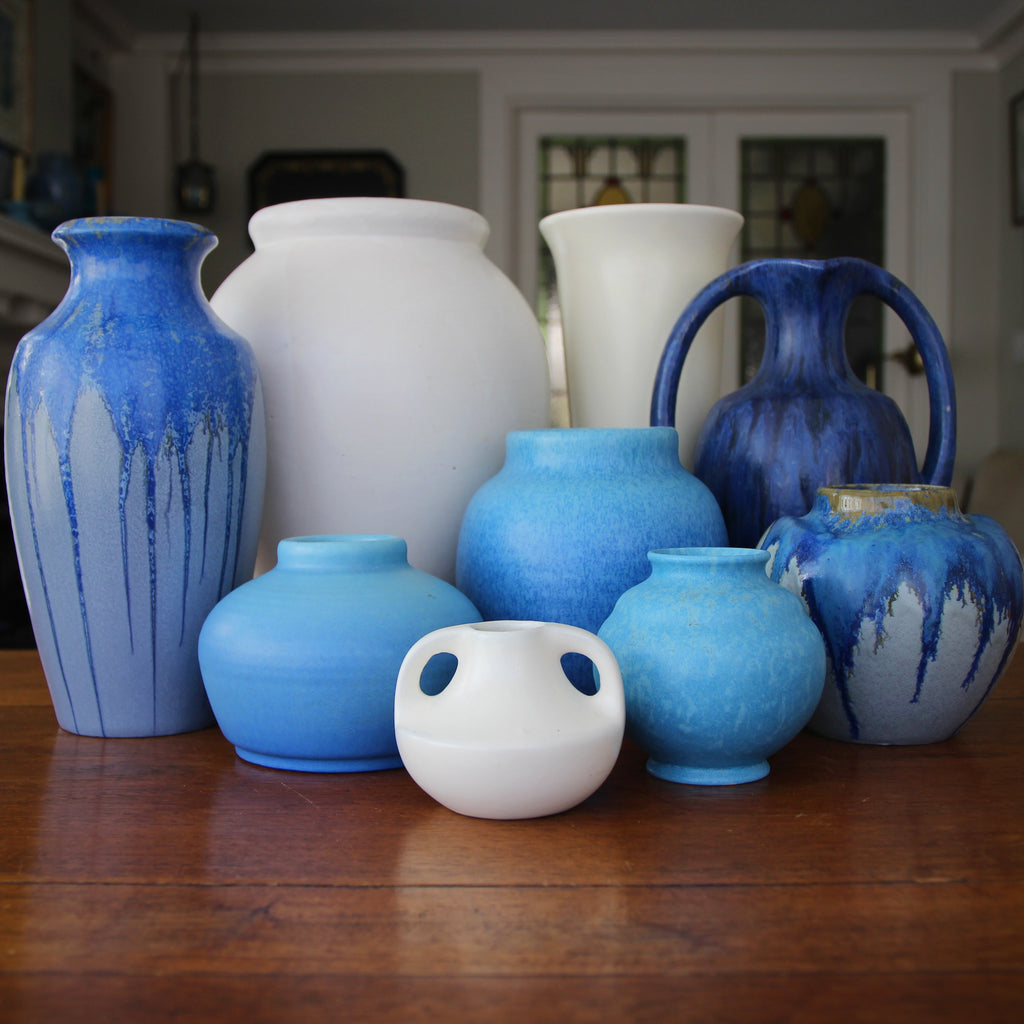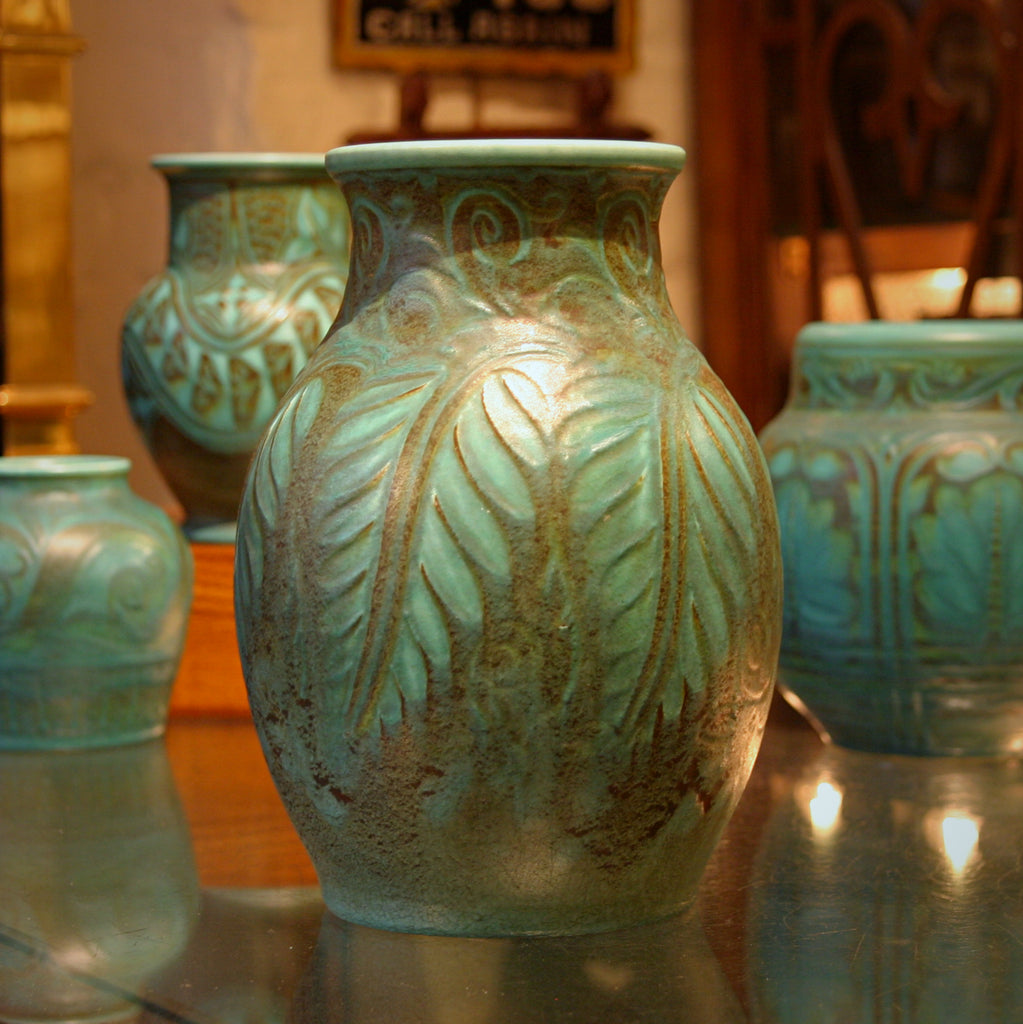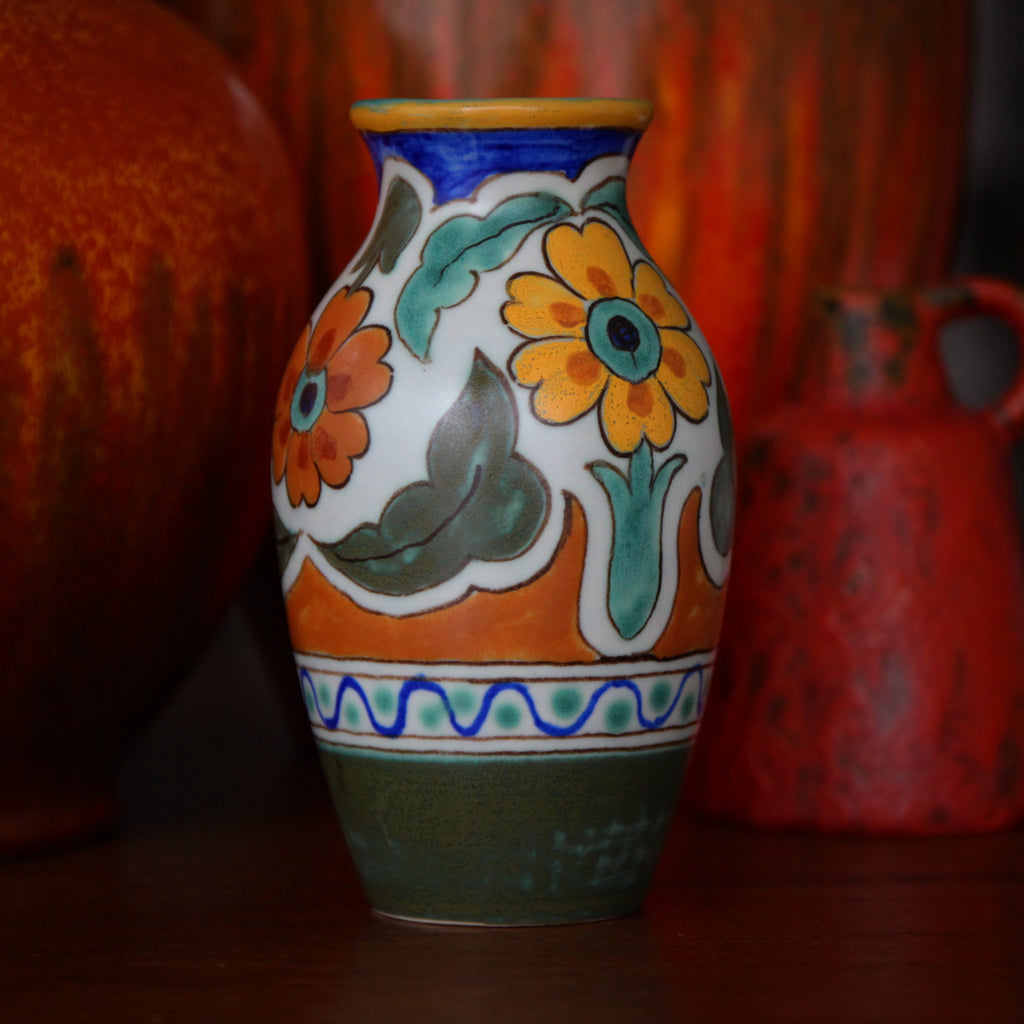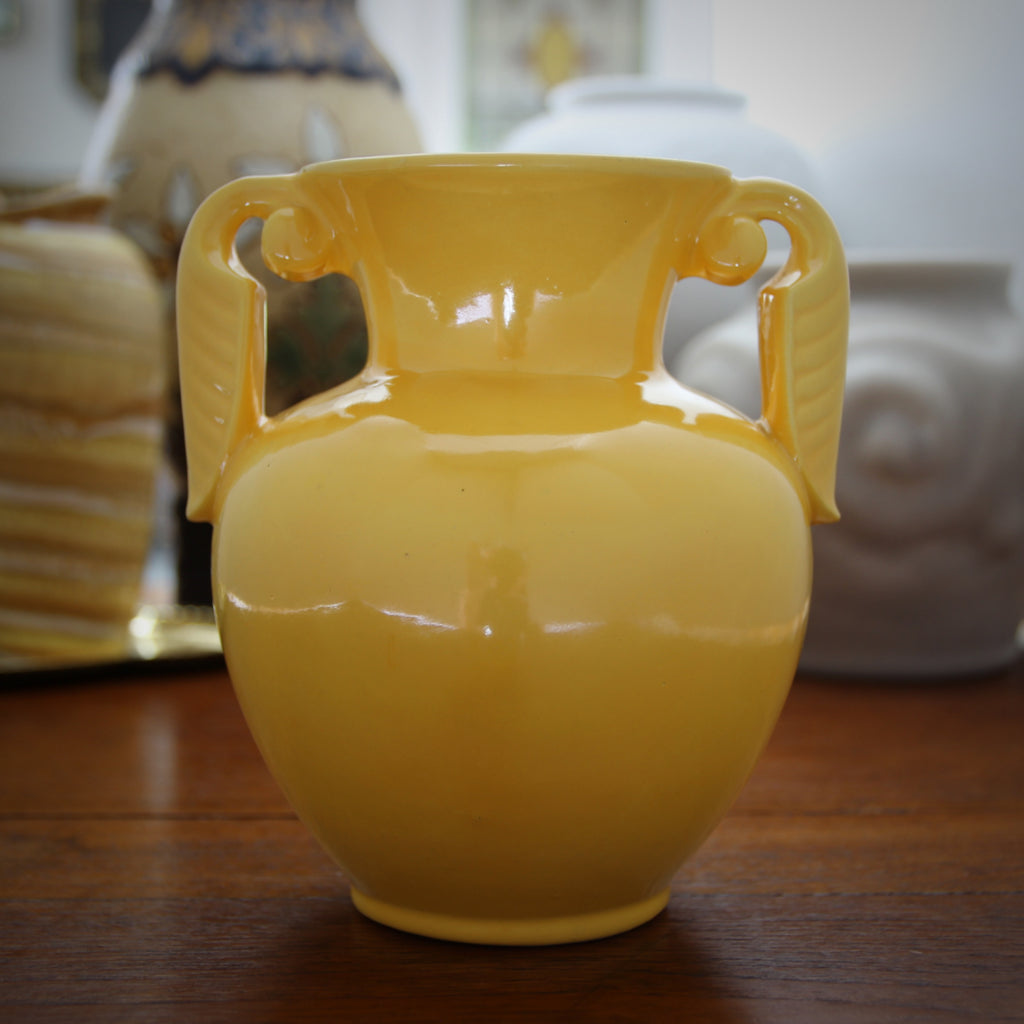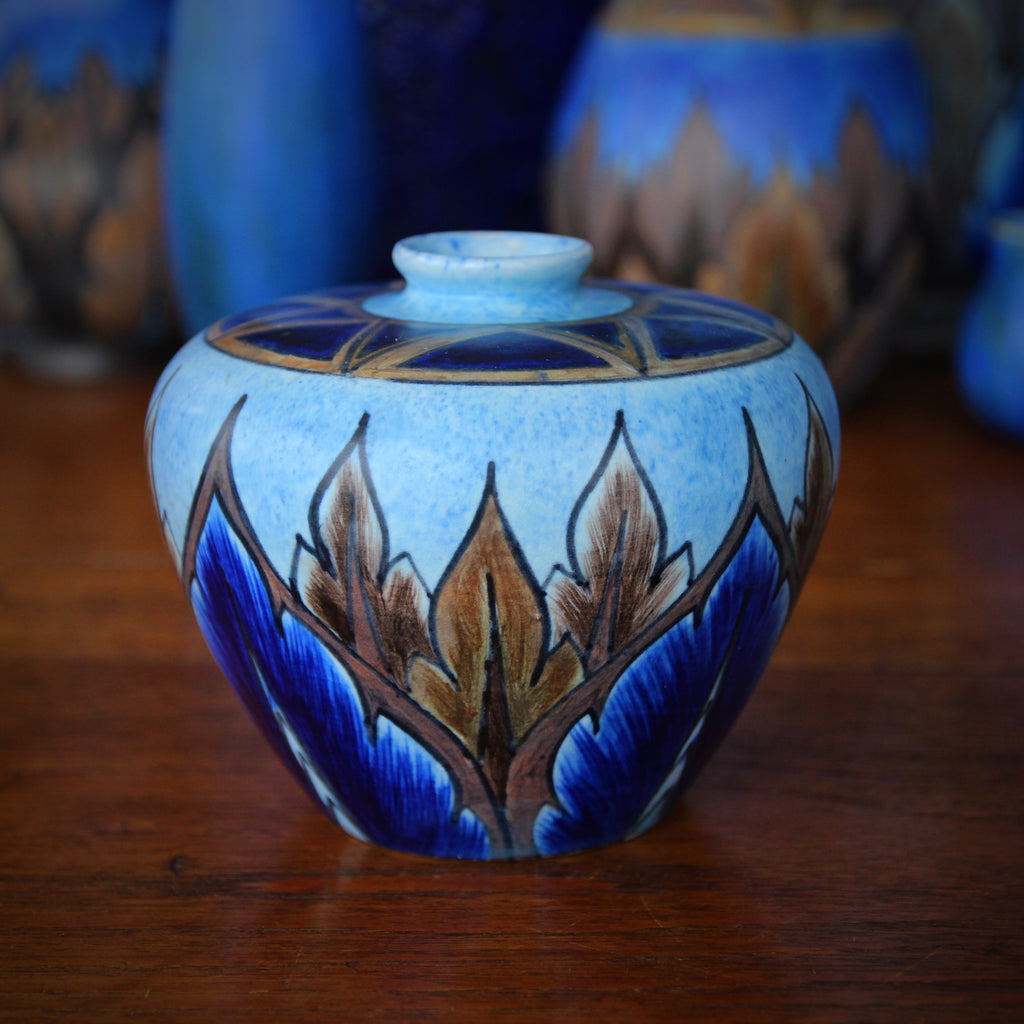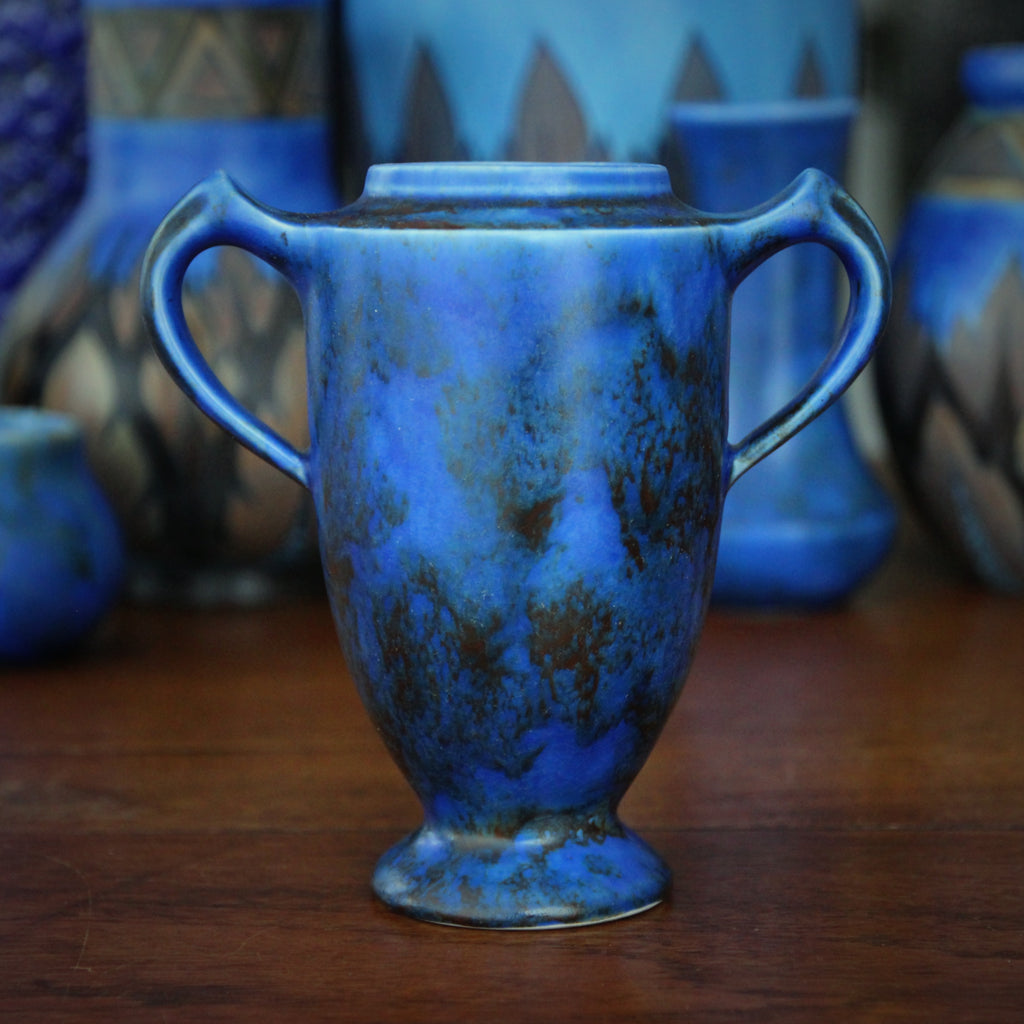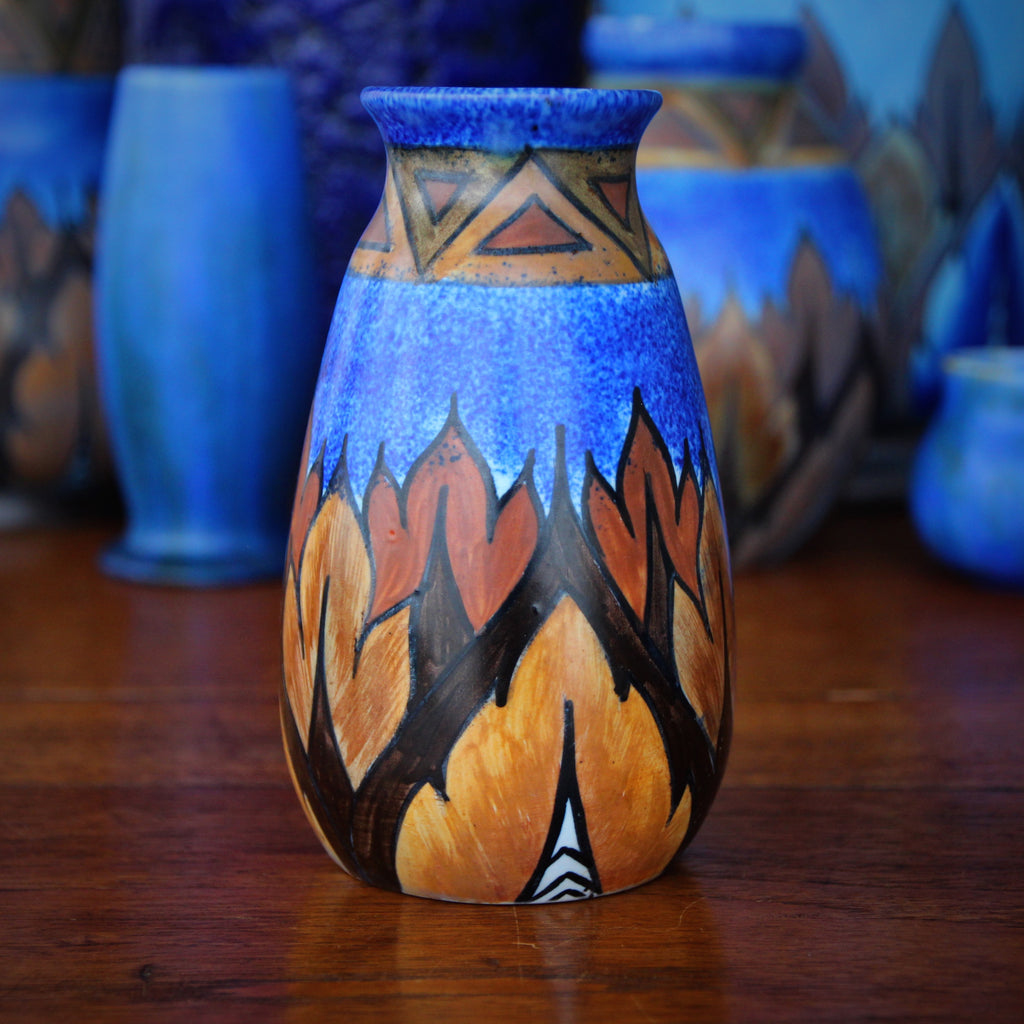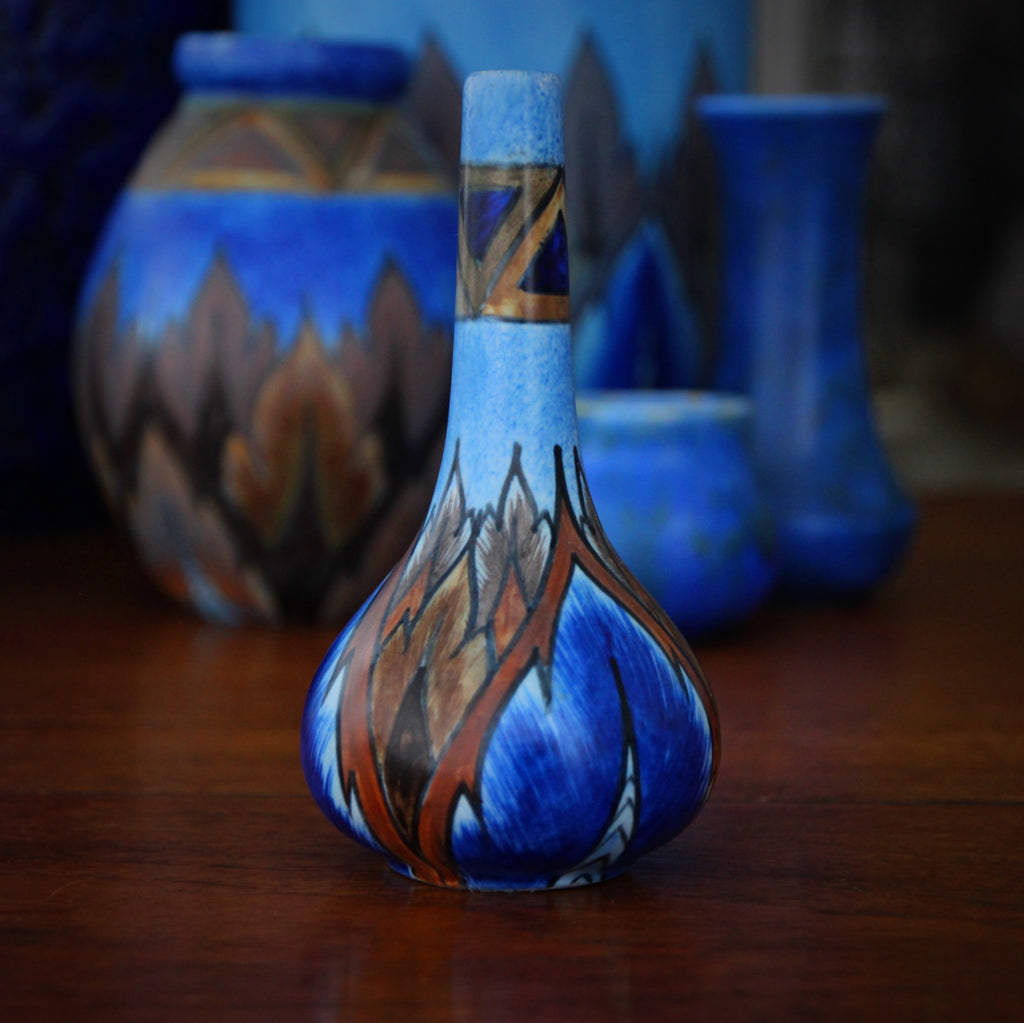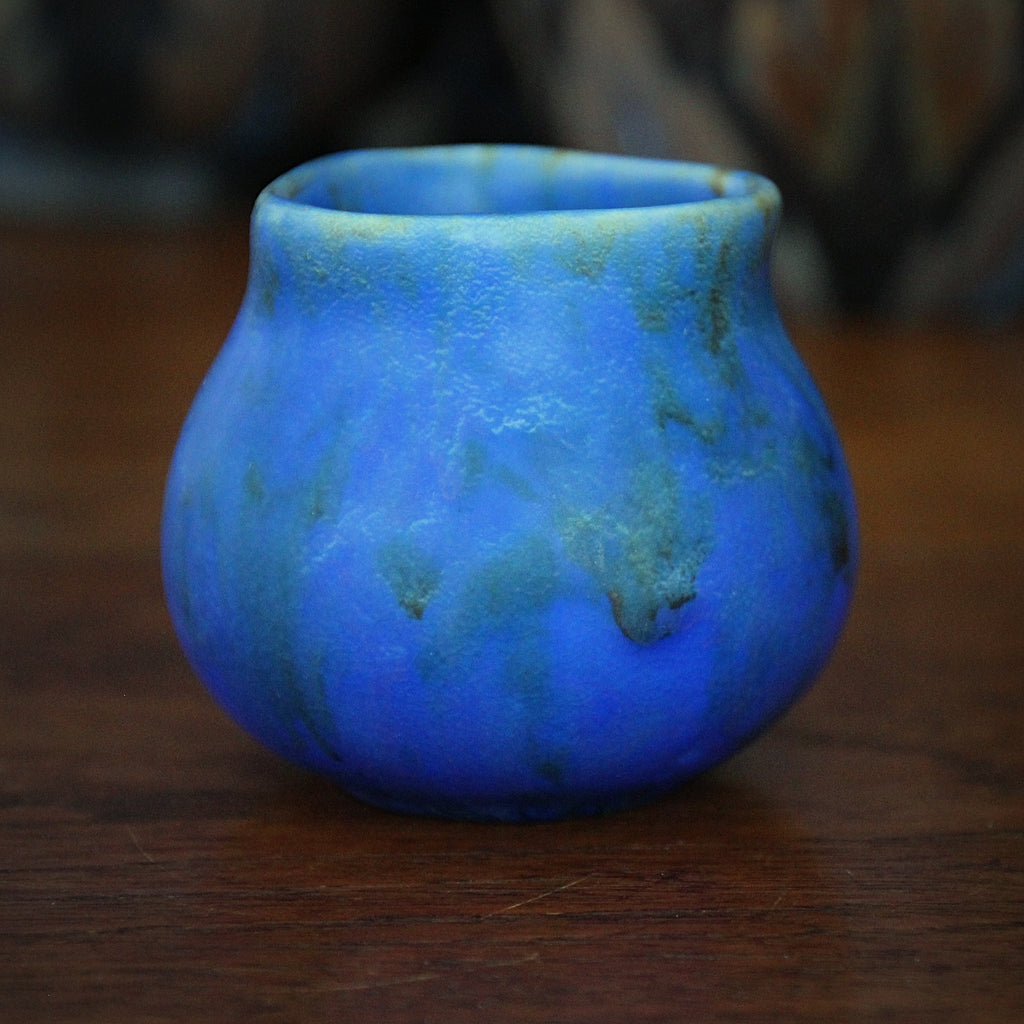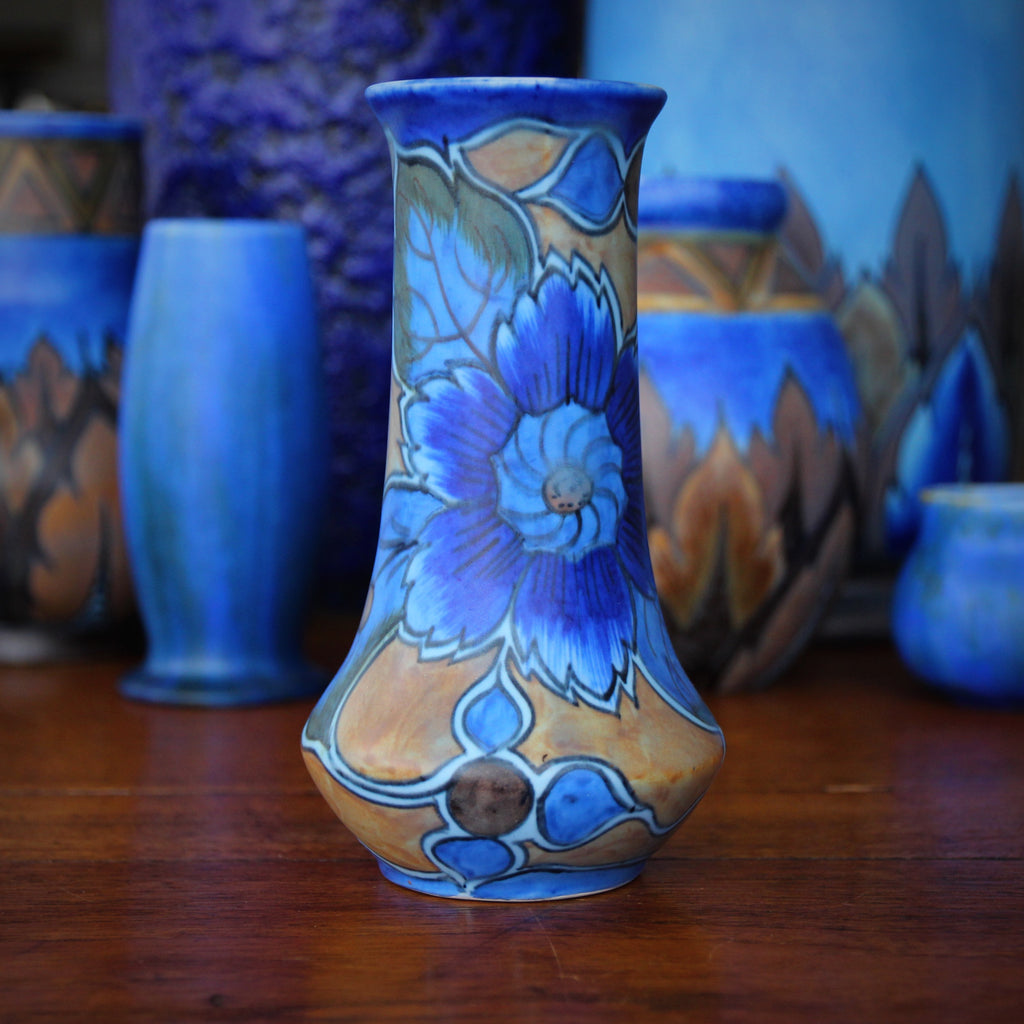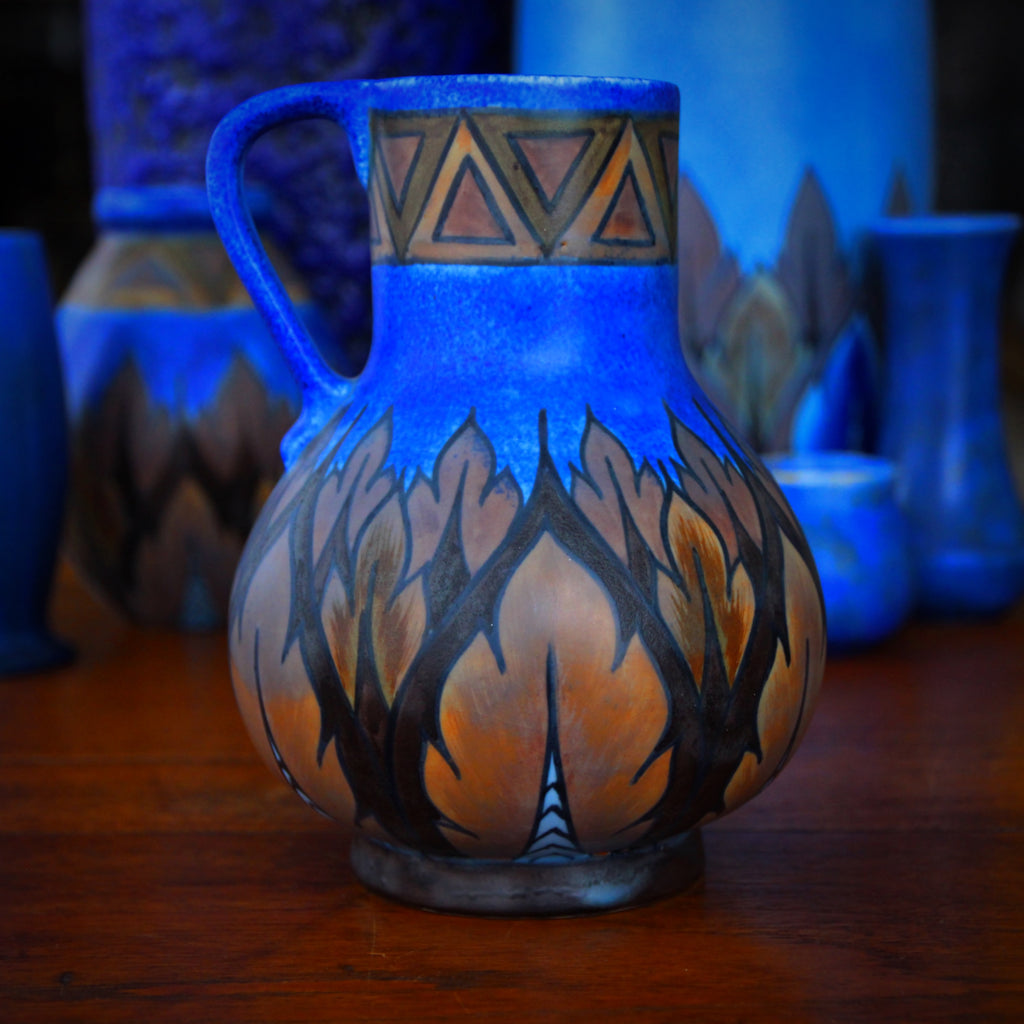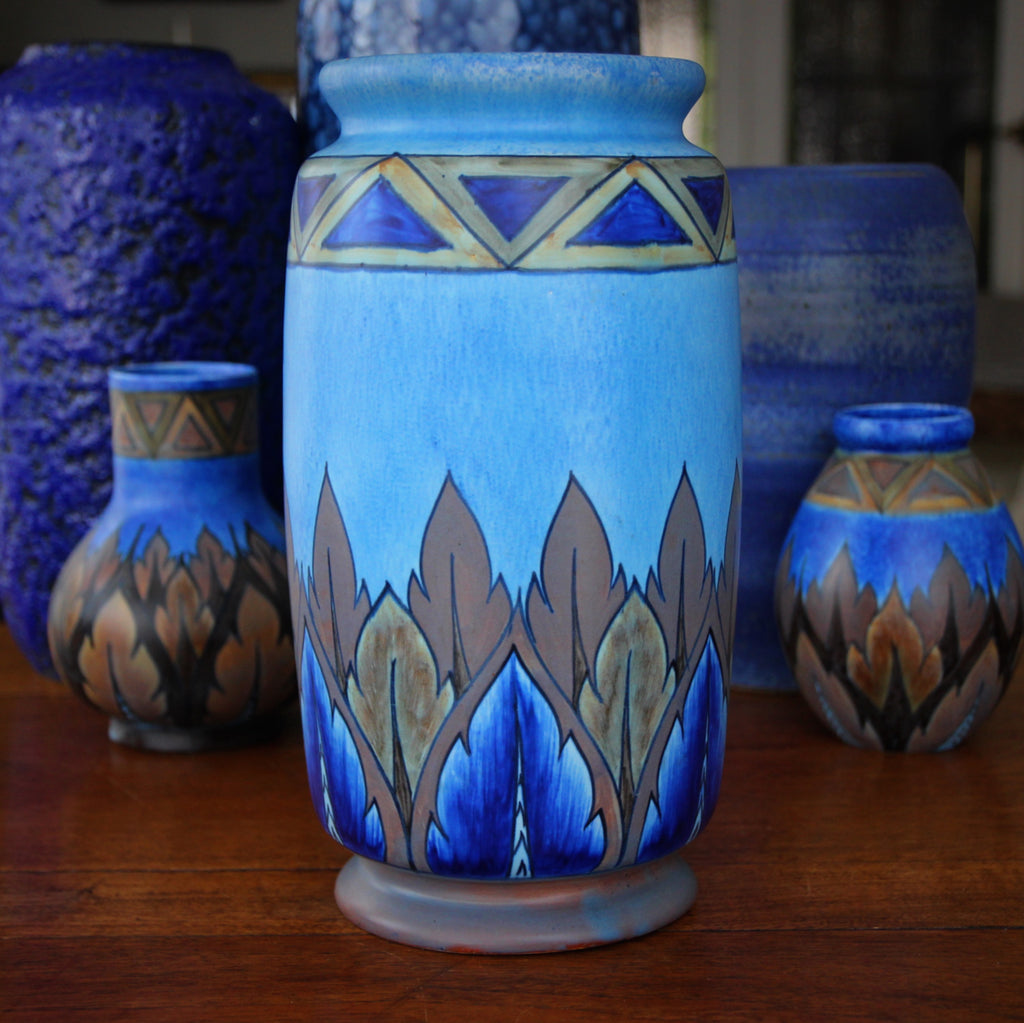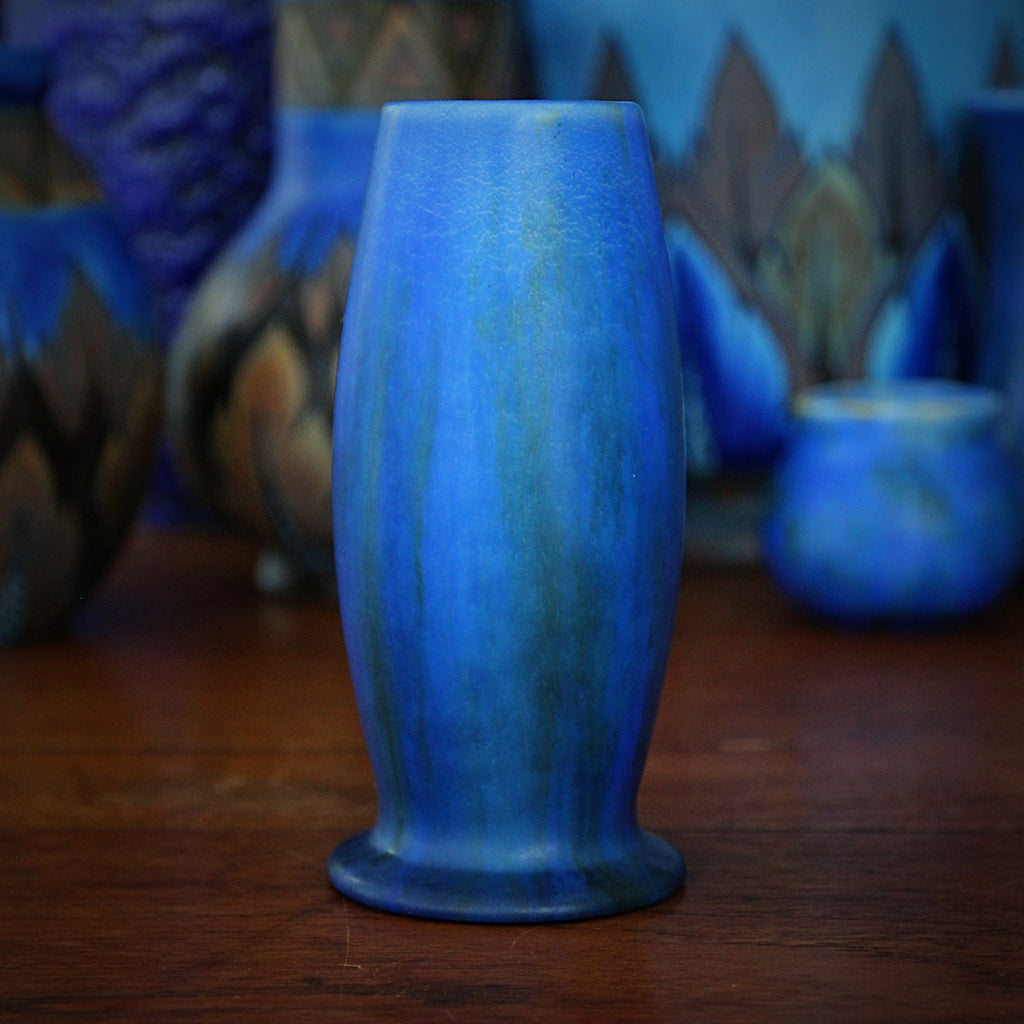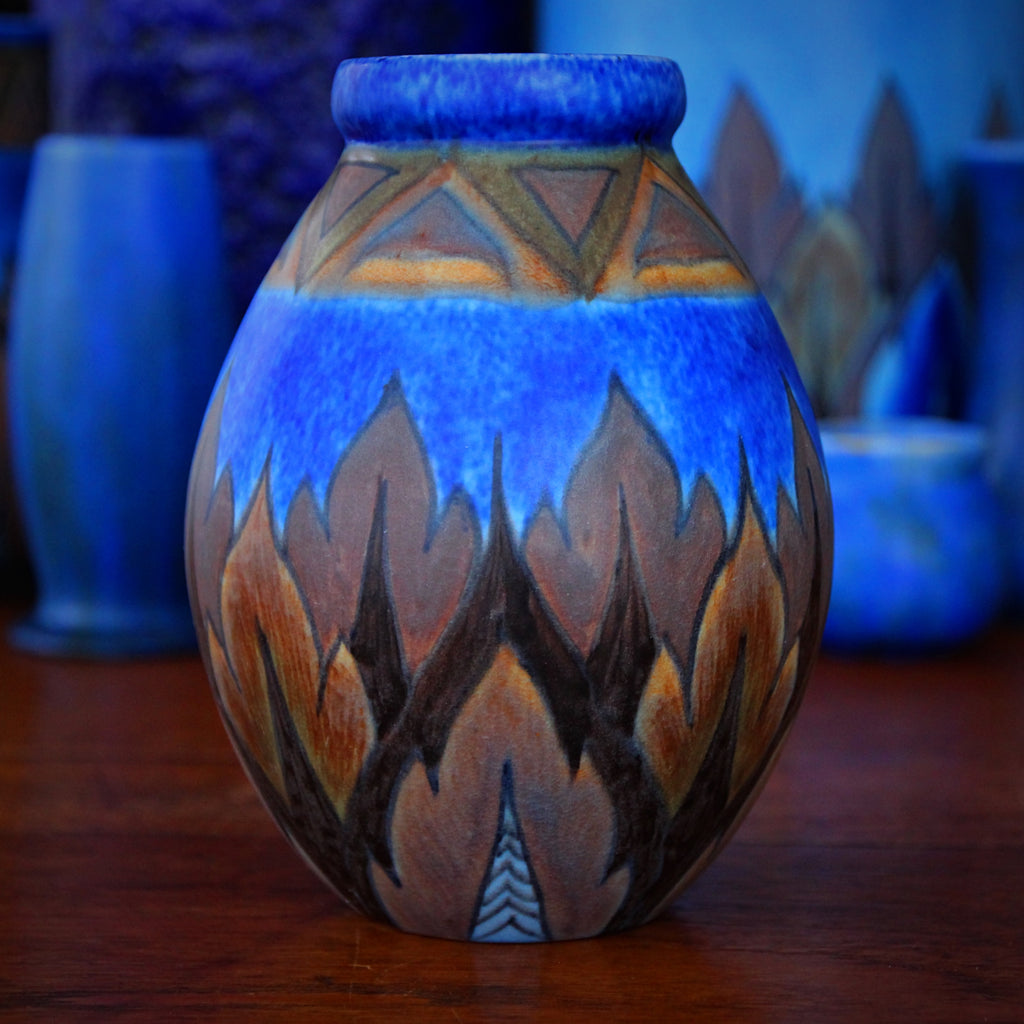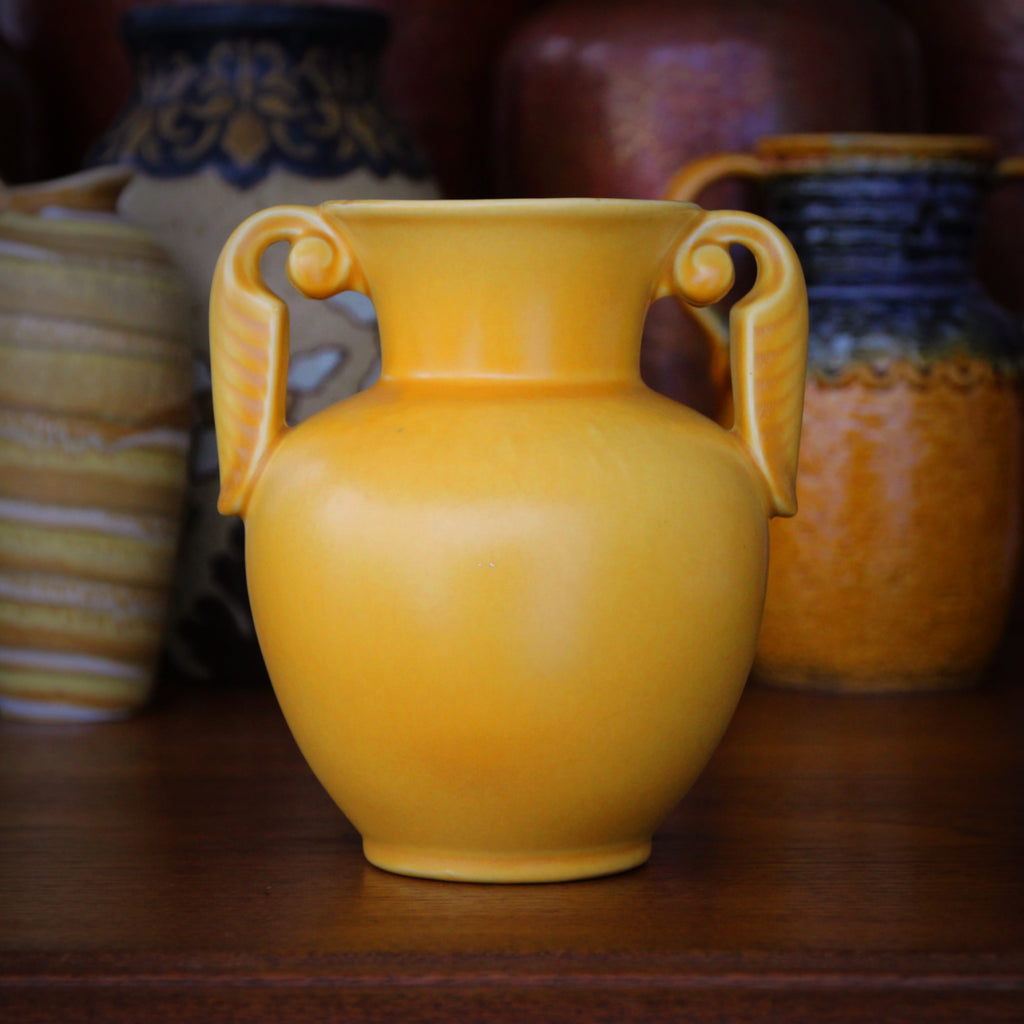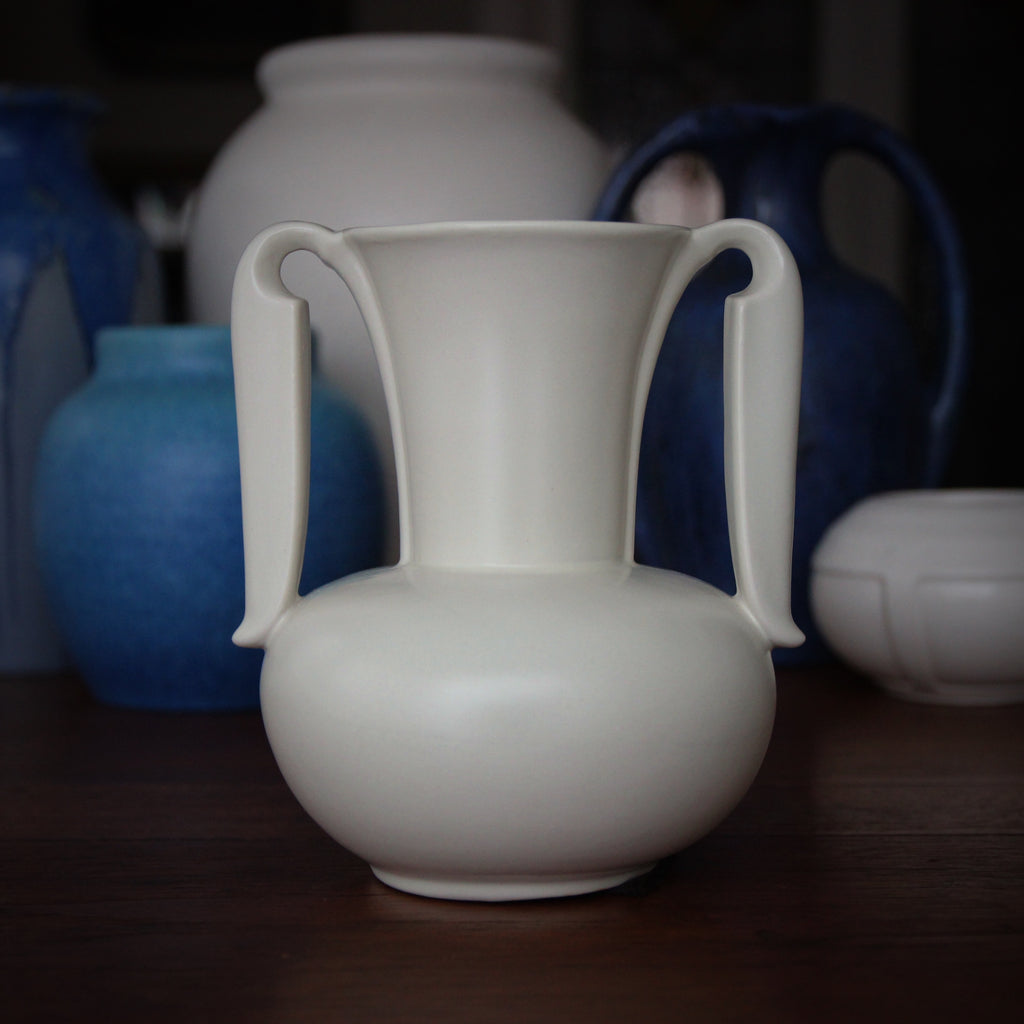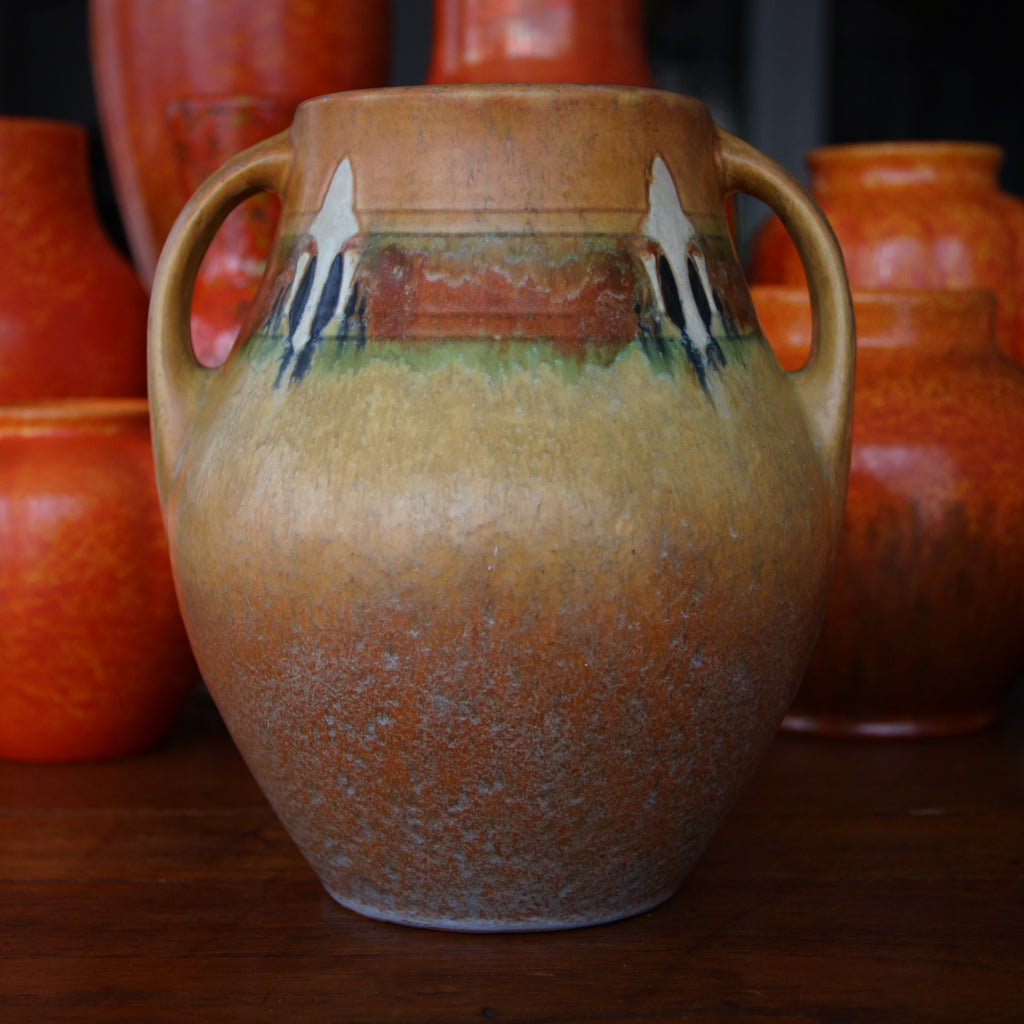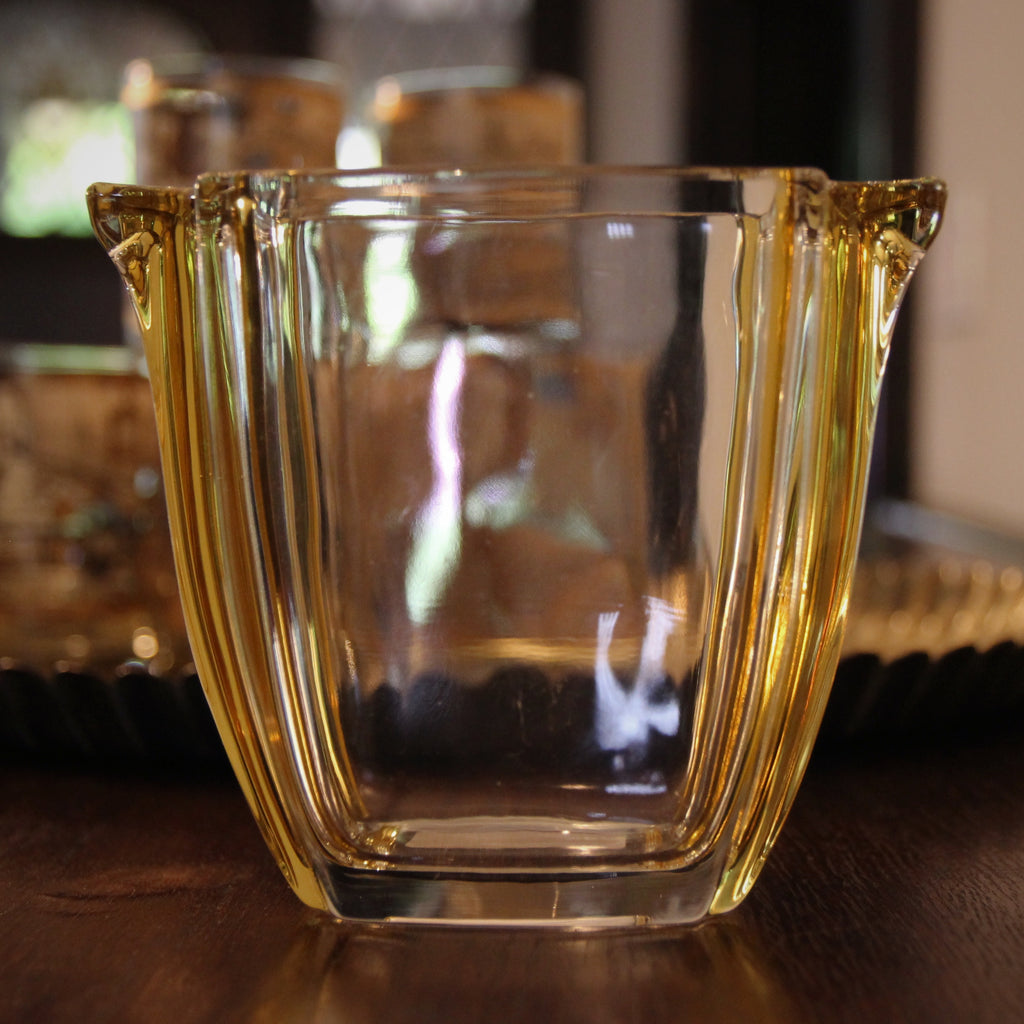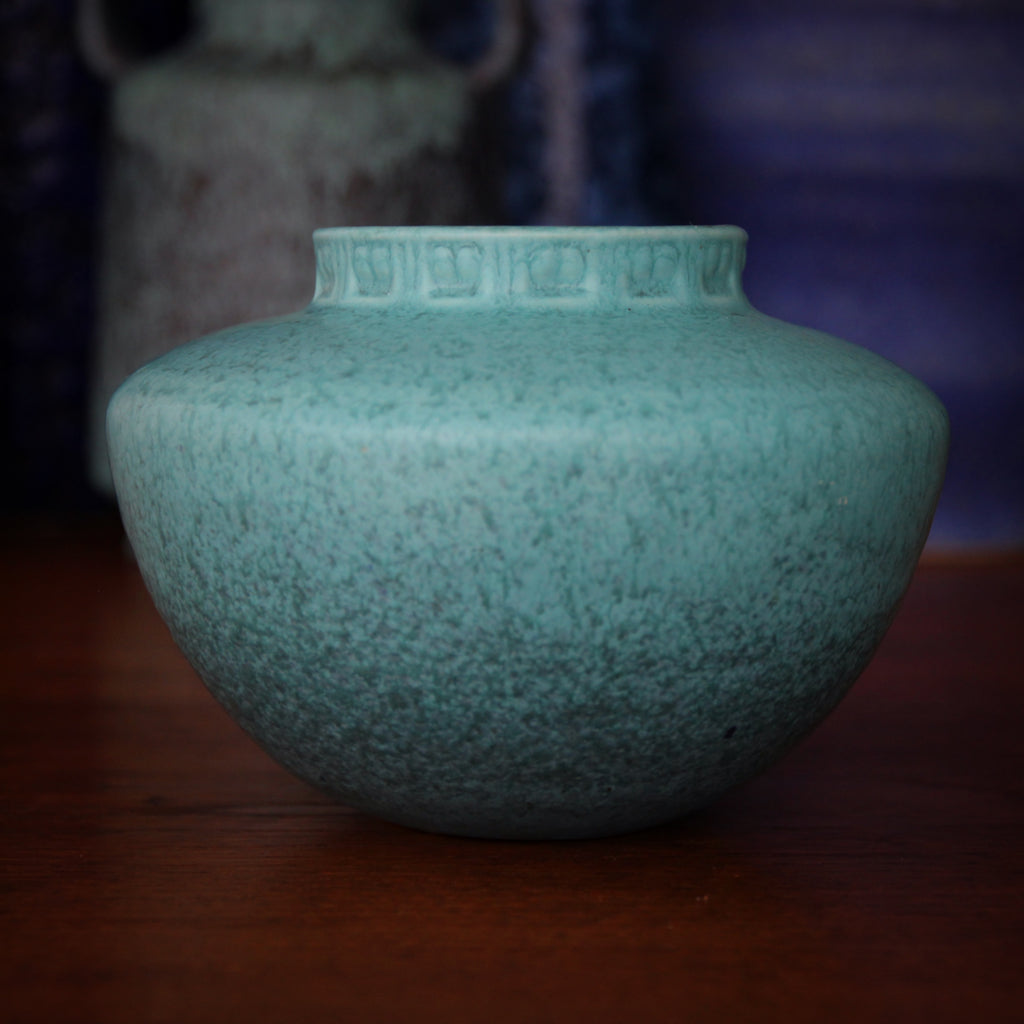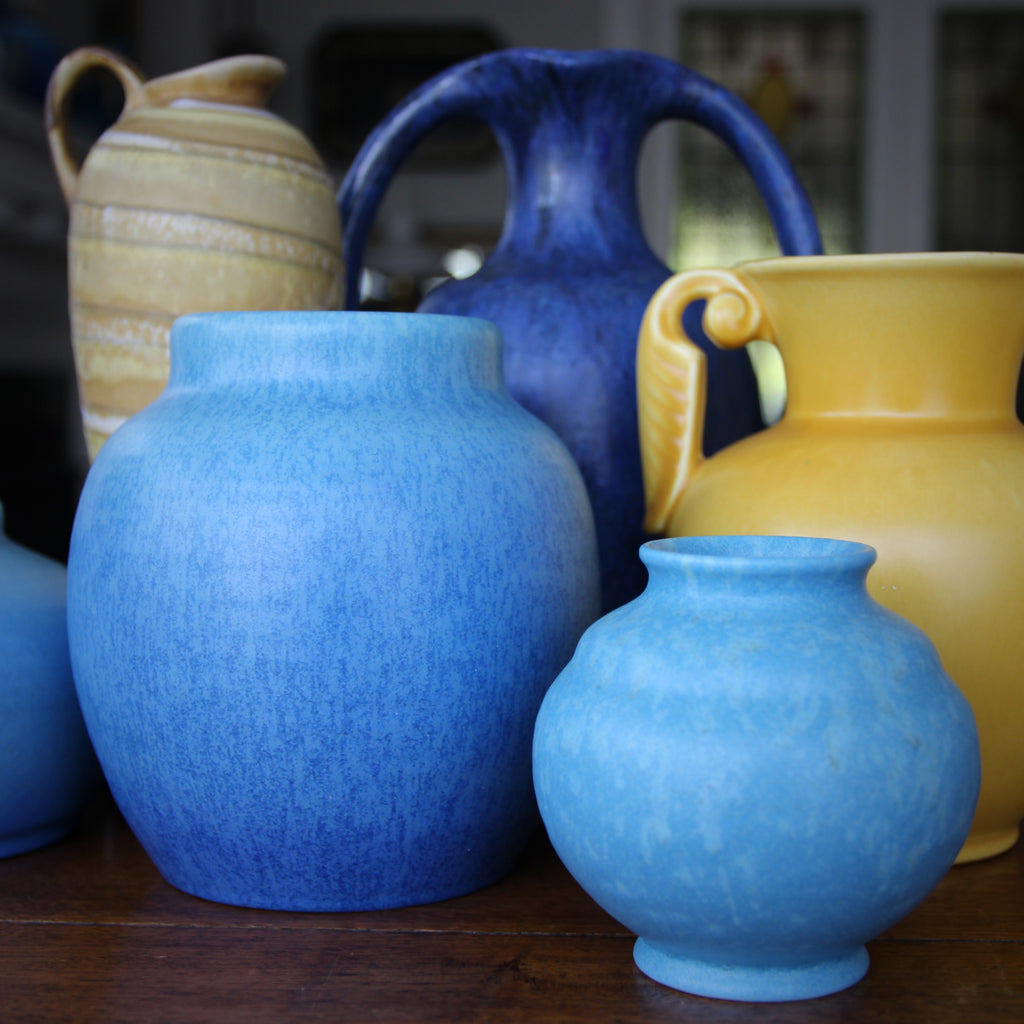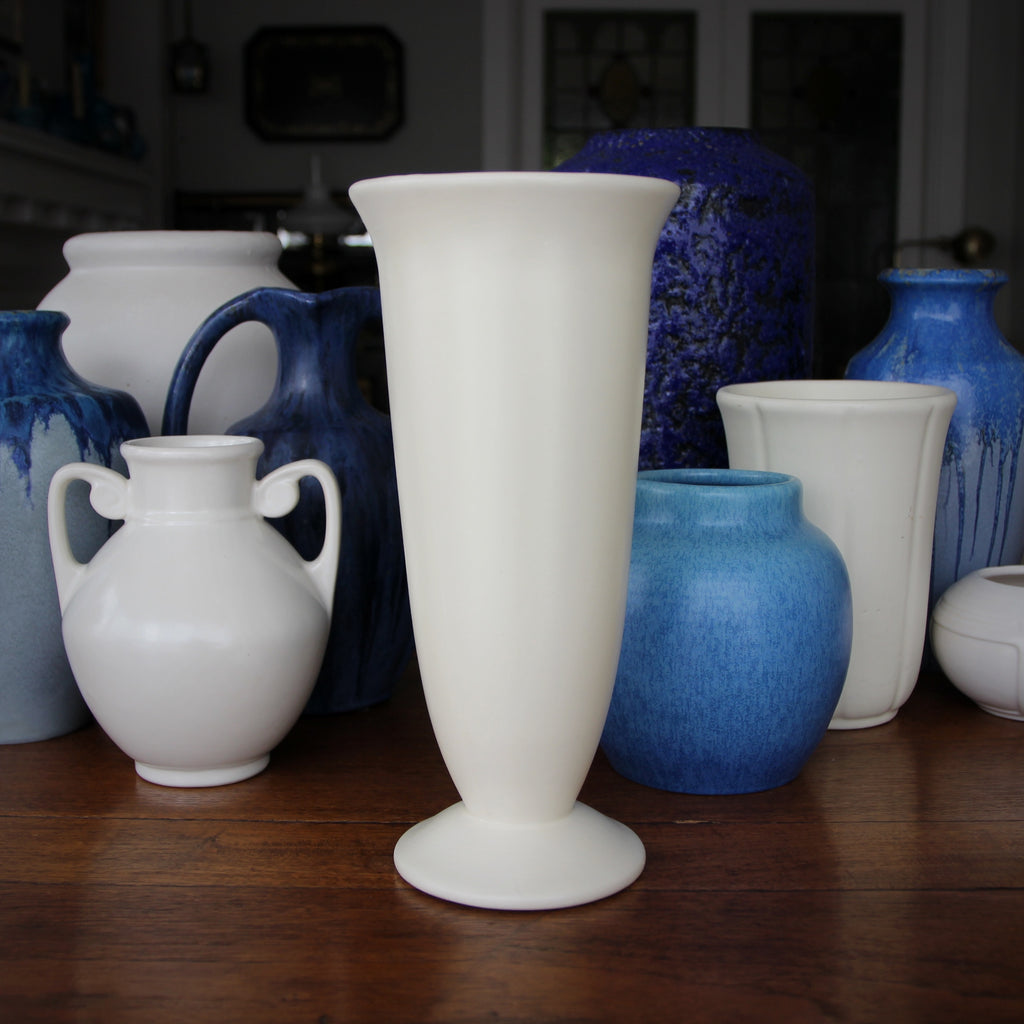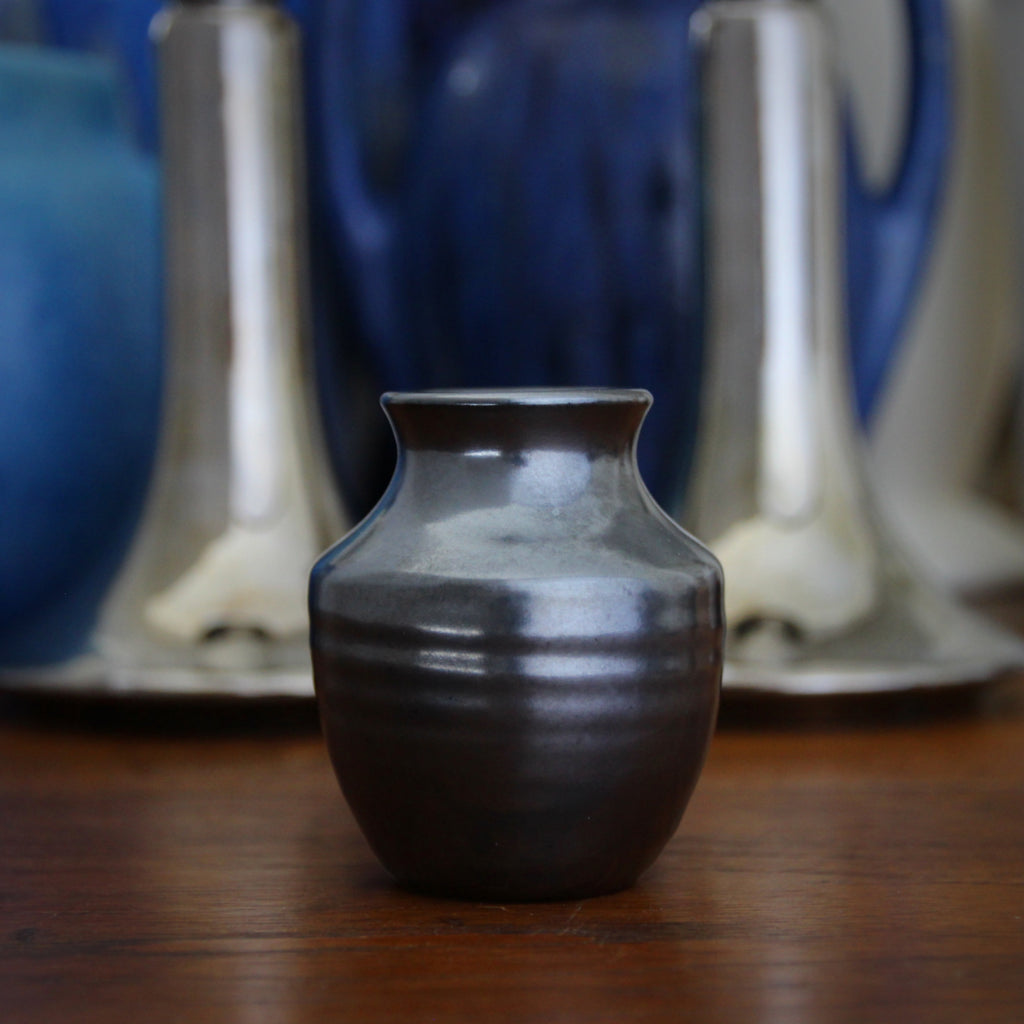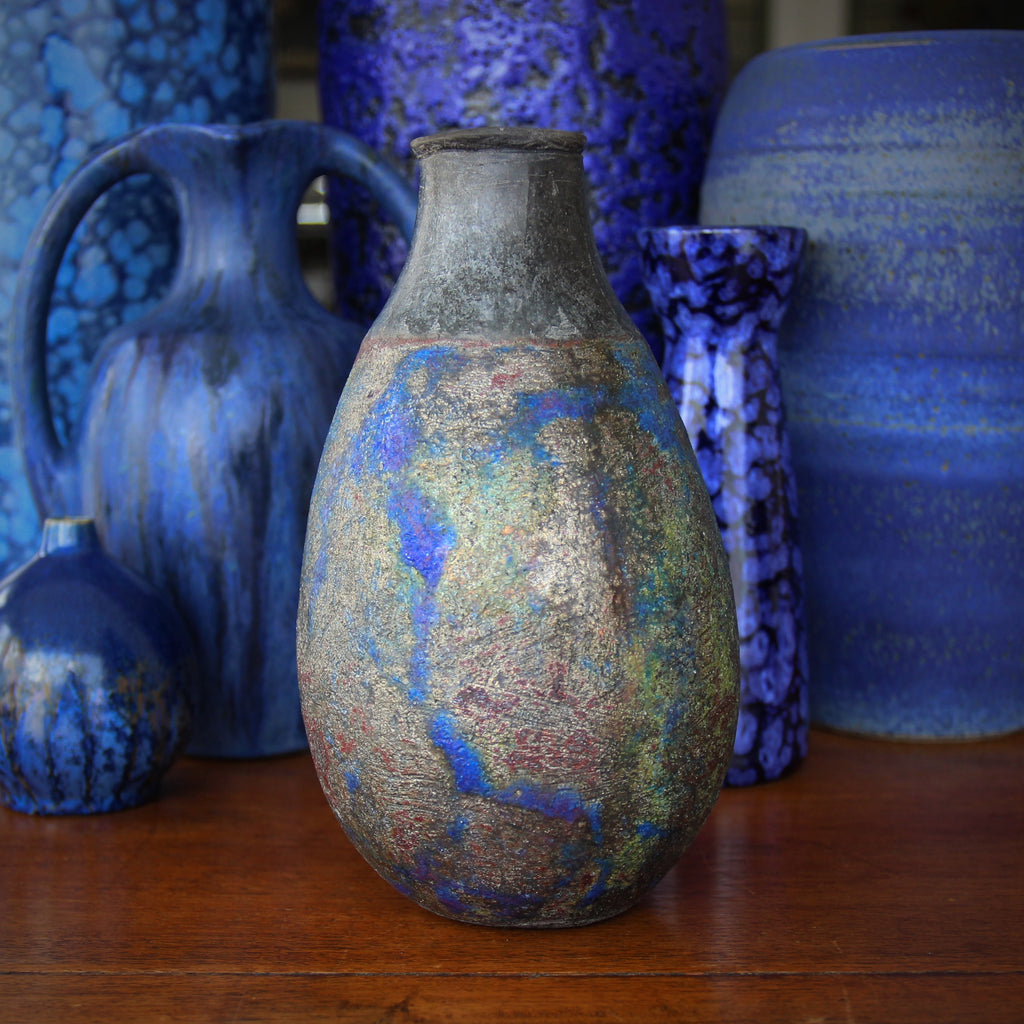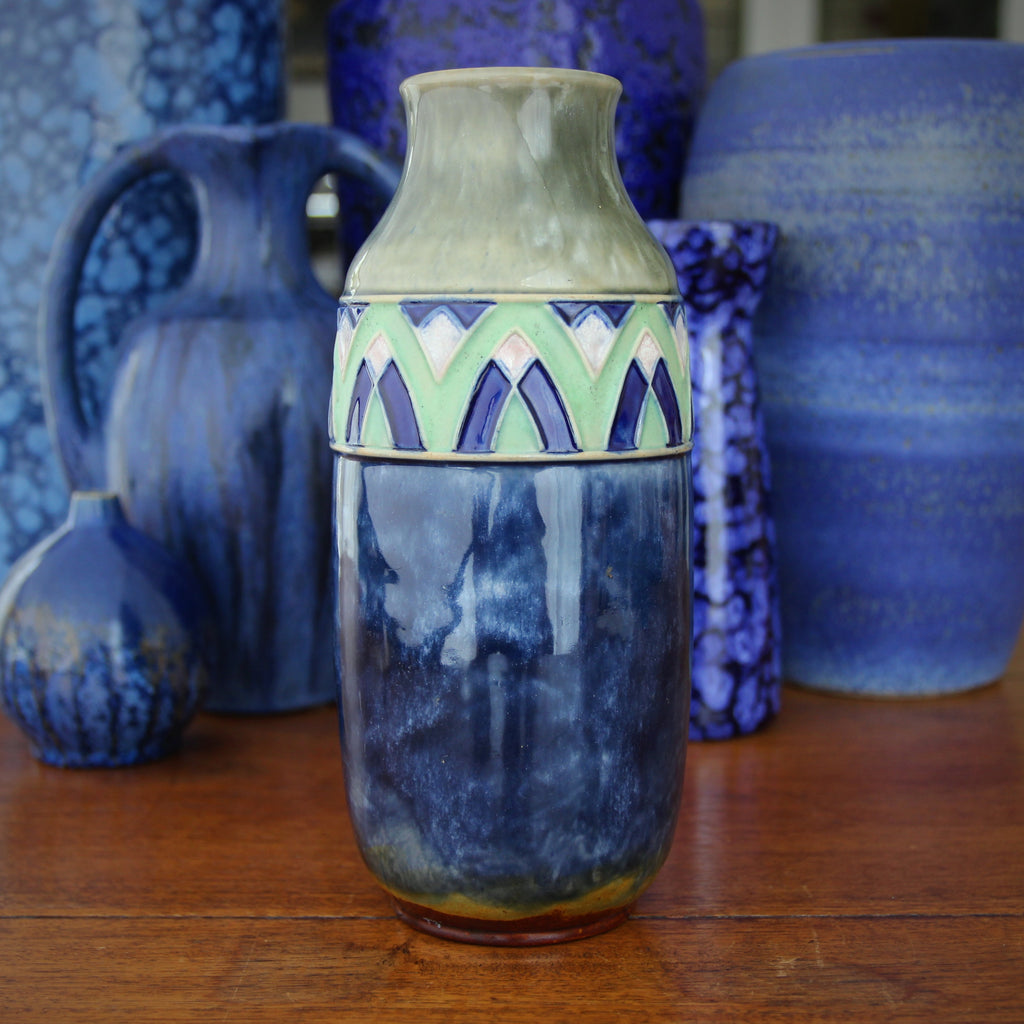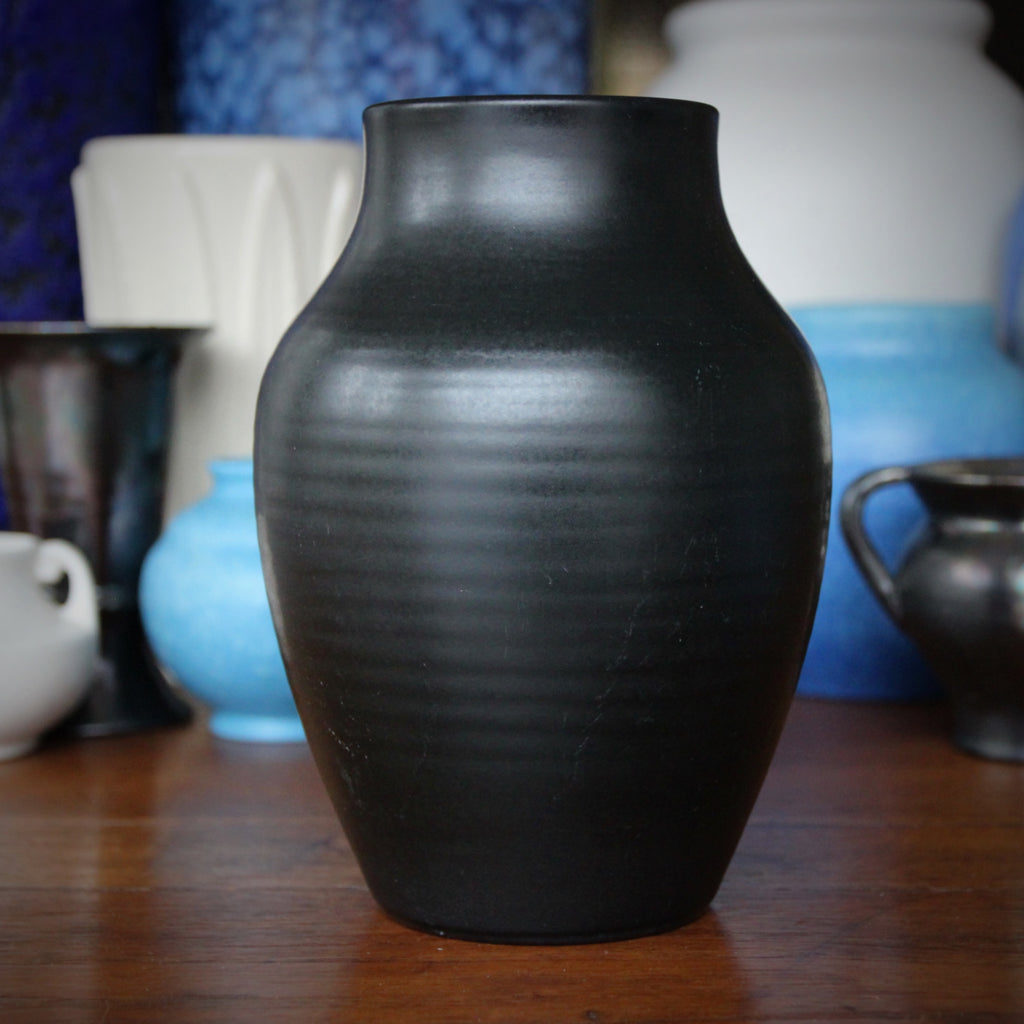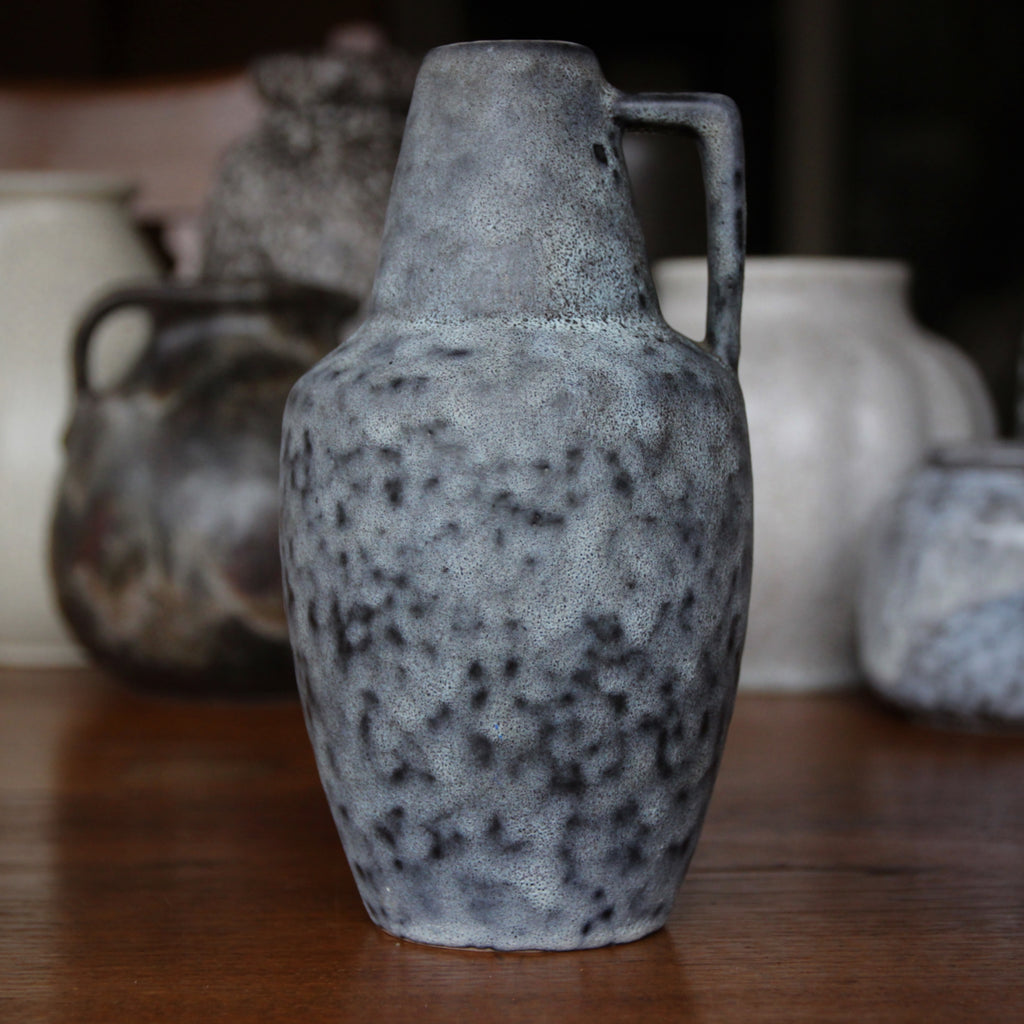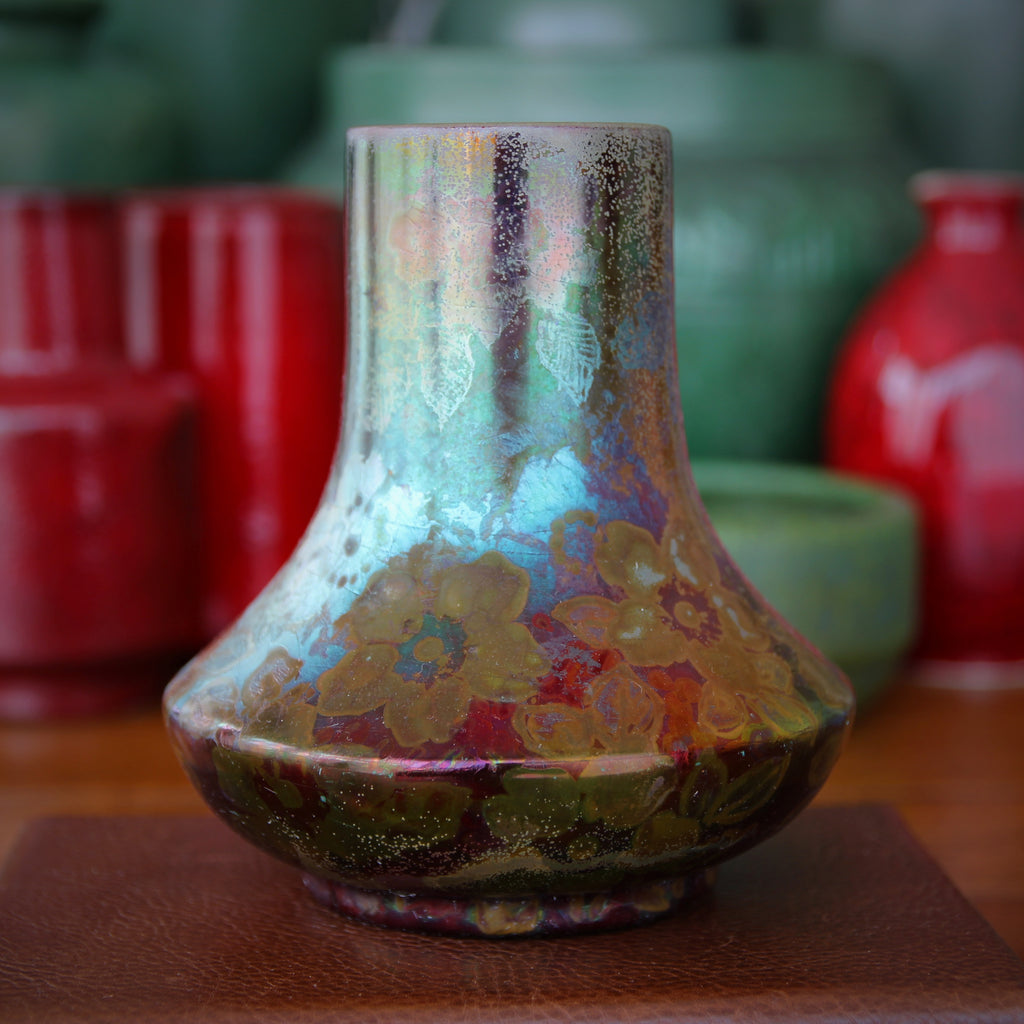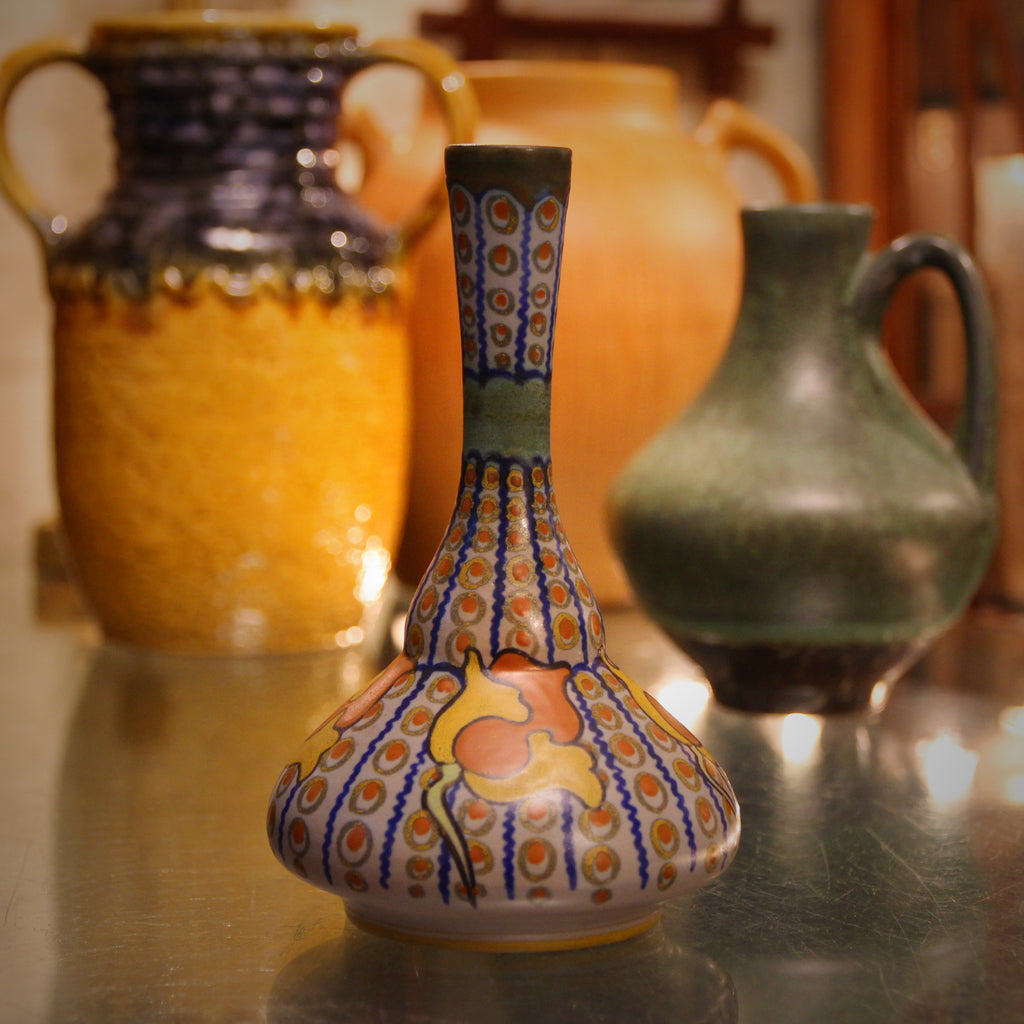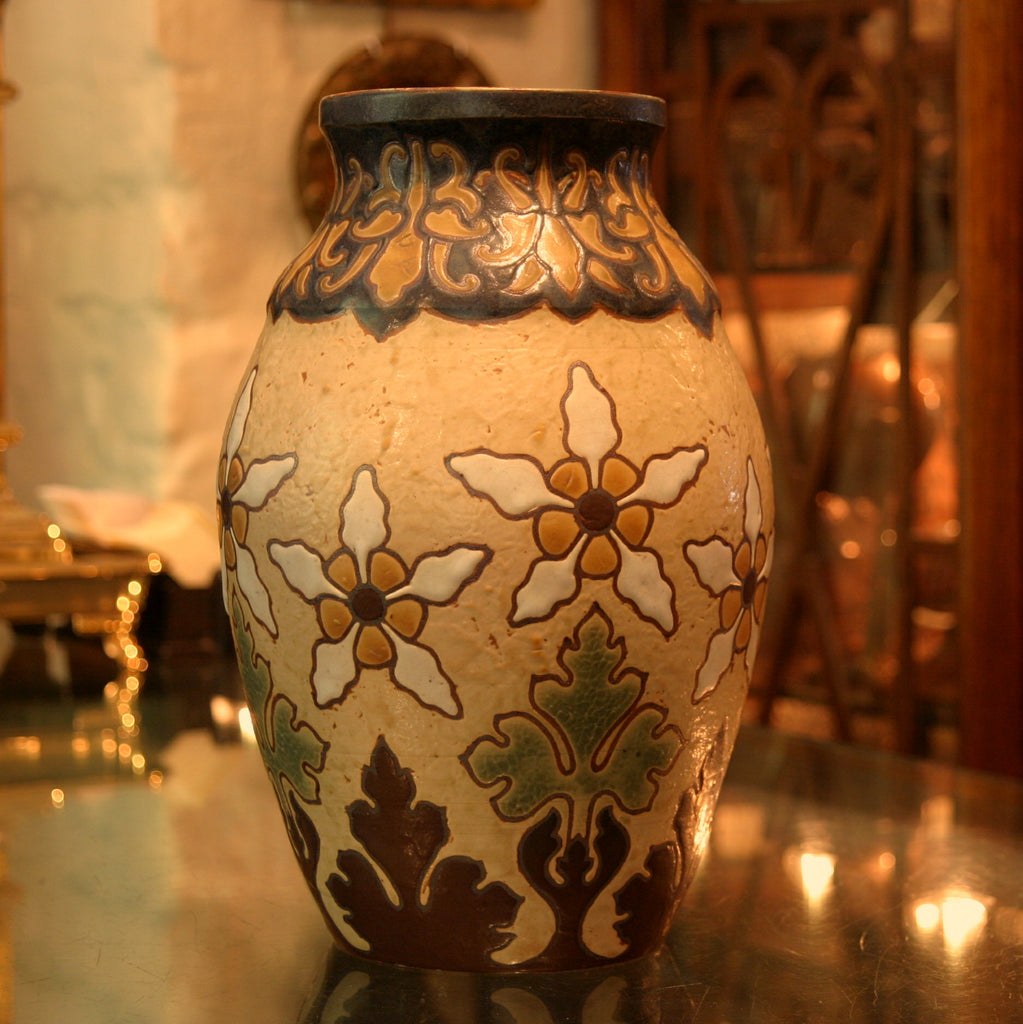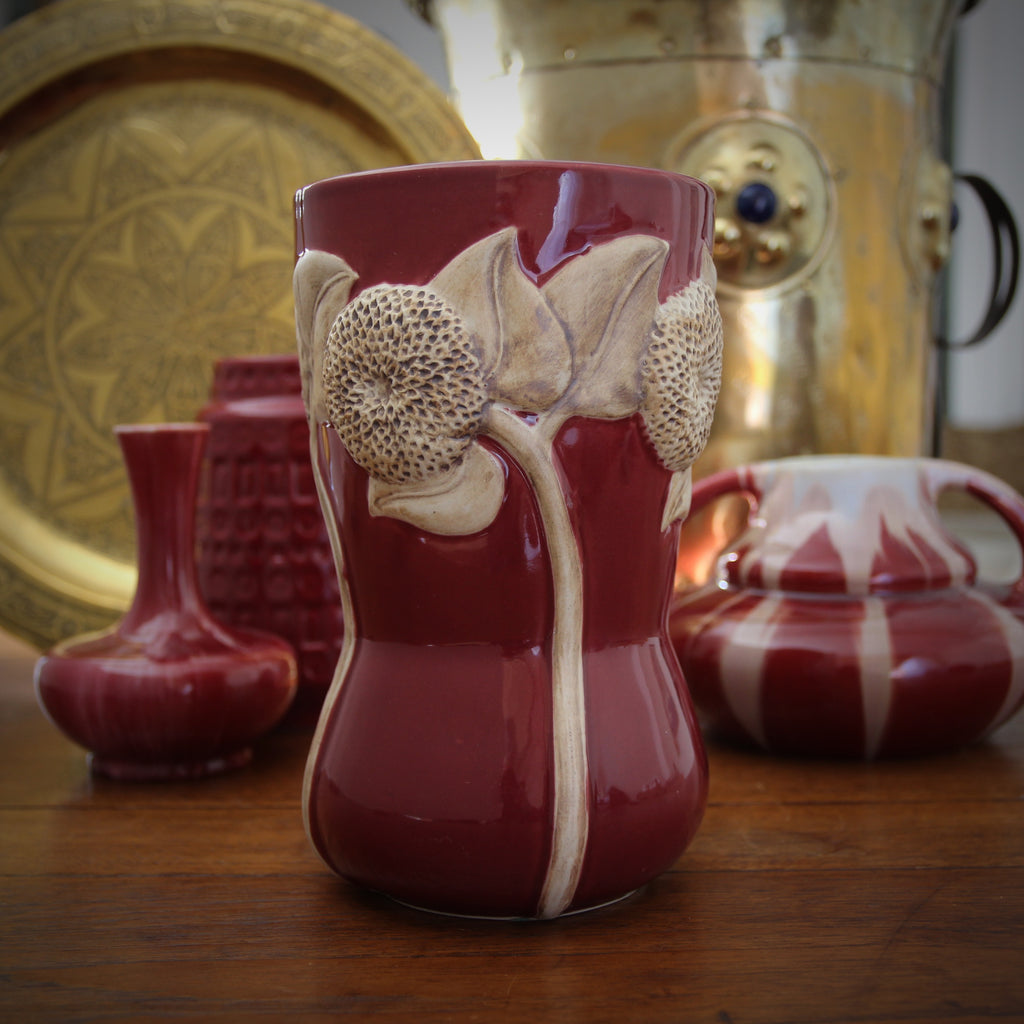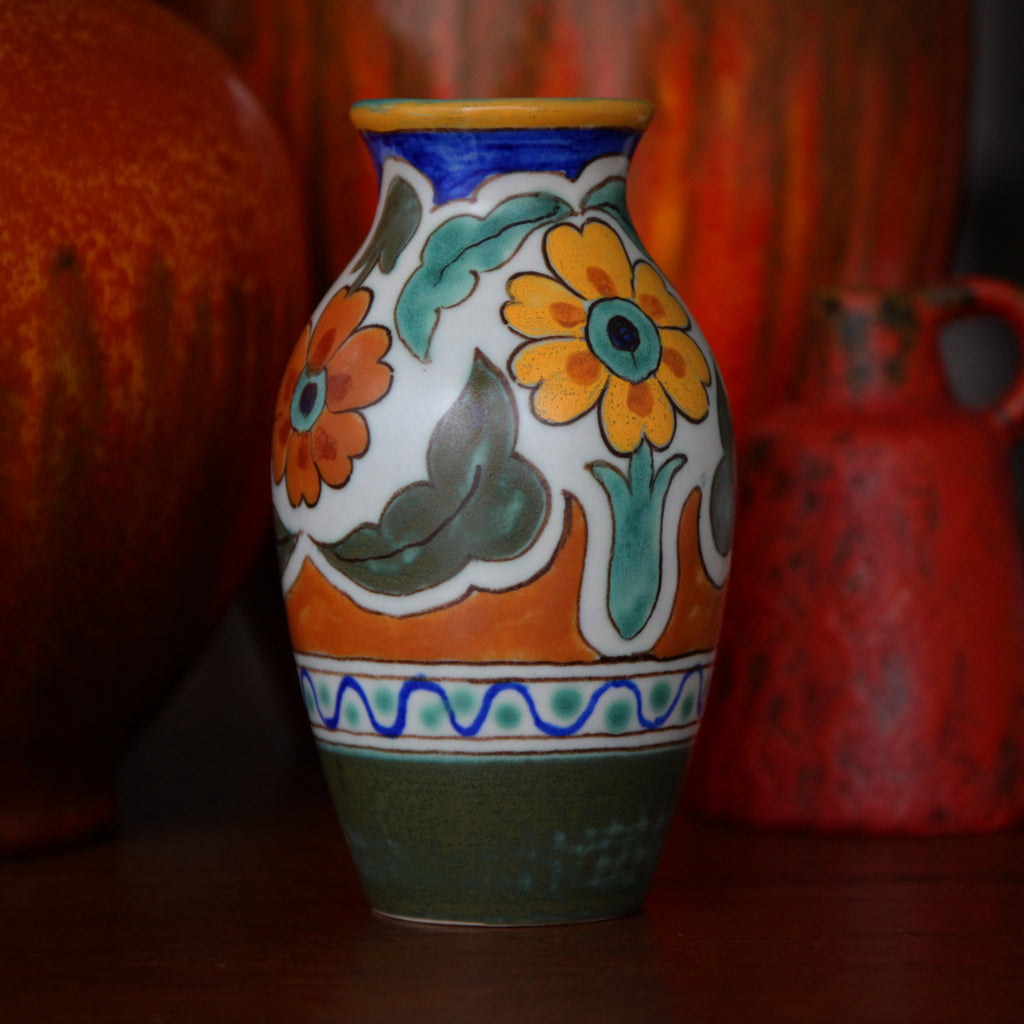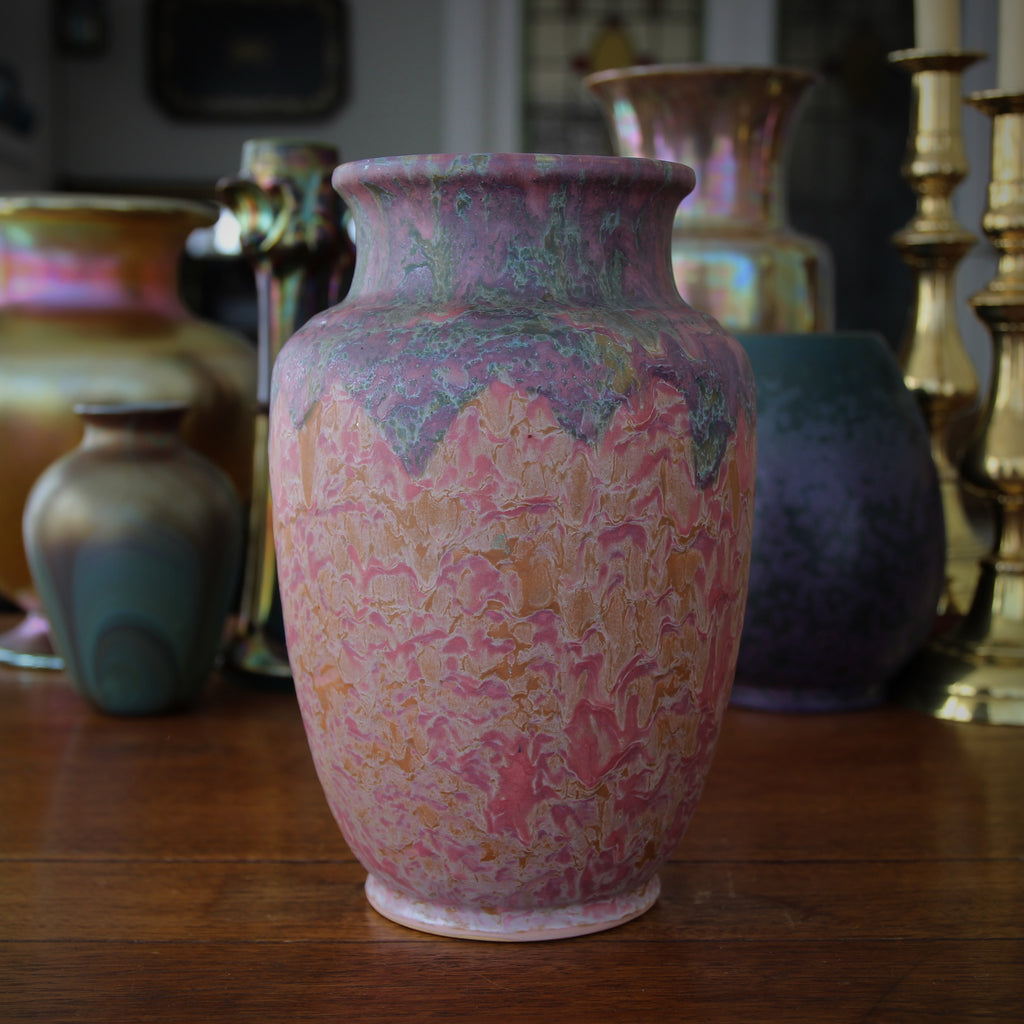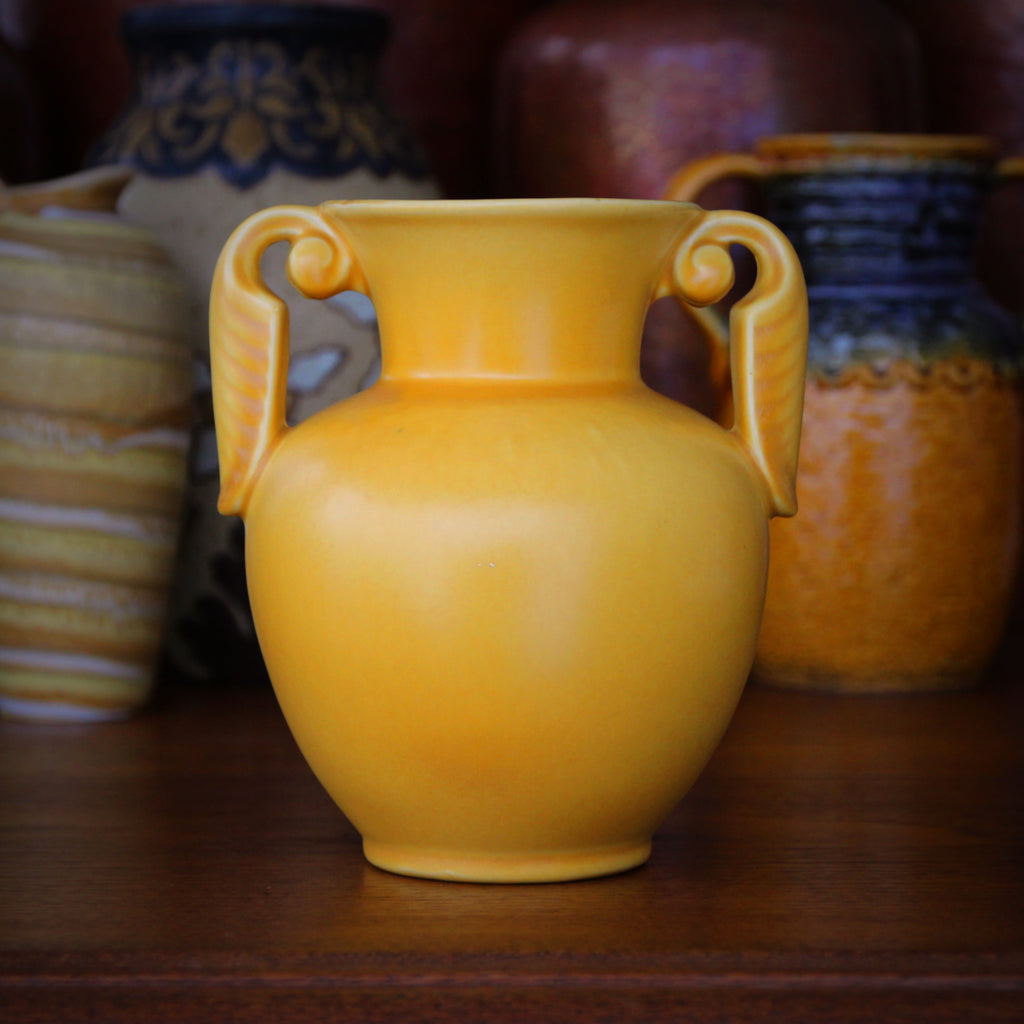JOURNAL — Vases RSS
On 5 May 1862, Mexican troops successfully defended the forts of Loreto and Guadalupe from the larger, better-equipped French forces of Napoleon III. The two forts sit atop a hill overlooking the city of Puebla (about 75 miles Southeast of Mexico City). Although the French came back the following year—and took Puebla—the 5 May event served as a motivating rallying cry for Mexican troops.
Today, Cinco de Mayo is more-widely celebrated in the United States (as a celebration of pan-Mexican culture) than it is in Mexico. However, in Puebla, the day remains important and one can visit two forts which are now history museums.
Star Wars Day
It's "Star Wars Day"! May the Fourth be with You!
I have always been attracted to otherworldly, "planetary" ceramics glazes—dappled, lunar, extraterrestrial finishes, reminiscent of foreign planets (real or imagined). What they lack in bright color, they provide amply in texture and sophistication. I keep a collection of them displayed together (most to be found in the LEO Design on-line store) and enjoy the bold impact of contrasting shapes and organic surface patterns.
The German Modernist vase shown above, made in the Sixties or Seventies by Emons & Söhne, wears a dappled grey glaze over a chocolate brown under-color. It reminds me of the planet Mercury or some yet-to-be-discovered moon.
Matte Green Ceramics
Among the first Arts & Crafts antique pieces I purchased for my store was a piece of matte green ceramics. It was an extra-large jardiniere and it sold right away—in the first couple of days of business. Since then, I've had a particular fondness for matte green pottery. It has such a wonderful, natural, organic look. When displayed on wood, it is reminiscent of the leaves on a branch. I find the color and the finish restful.
Palm Sunday
Today is Palm Sunday—the day on which Christians commemorate the final week, hours, and moments of Christ's life on Earth. What starts with Christ's triumphant entry into Jerusalem ends with betrayal, brutal torture, execution and burial in a tomb. Of course, to Christians (mournful as this is), this final "Passion" is the unavoidable pathway to Christ's death and resurrection. Palms—especially palm branches—have enormous significance throughout the Middle East and around the Mediterranean. Of course, the date palm was an important source of sustenance in this hot and arid region: food, shade, and useful materials. The palm branch was sacred to Mesopotamians (c. 6000 BC), symbolized immortality to the Ancient Egyptians, and represented victory to the Ancient Greeks and the Romans....
William Salter Mycock
Pilkington Royal Lancastrian employed several notable ceramics designers and decorators including Charles Voysey, Walter Crane, Richard Joyce, Gordon Forsyth and Gwladys Rodgers. The artist with the longest career at Pilkington was William Salter Mycock. In fact, his years at Pilkington spanned the lifetime of art pottery production for the company.
William Mycock was born in 1872. His earliest working years were as a freelance "jobber" decorating pottery for various firms in the region. He also painted ceramics at Wedgwood while taking art courses at night. Mycock joined Pilkington in 1894, two short years after the company was founded. At this point, he was decorating Pilkington's ceramic tiles (the company's first product).
Oh, So English
Much of the time, Art Deco styling is expressed with streamlined shapes, sharp edges and dynamic color combinations. Art Deco was Modern, Futuristic, Ready-for-the-Space-Age. Rocket ships and airplanes symbolized this fast and forceful promise. And Art Deco was wildly popular—incorporated into all manner of design, from architecture to toaster plugs.
This vocabulary of Art Deco crispness certainly was employed in British design. But, over the years, I've noticed a distinct and specific version of English Art Deco—a sub category—which is a little gentler, a little rounder, a little more subtle than its typical American sibling. In this English variety, designers "softened" the typically crisp Art Deco features.
Bretby Orientalism
In the Nineteenth Century, imported Chinese ceramics were all the rage in Europe (especially England). But these costly treasures were beyond the reach of all but the wealthiest collectors. British ceramics workshops began to make goods "in the Oriental style," for the domestic market. Rarely were these pieces authentic. In fact, they were usually over-the-top. And they almost never reached the quality of true Chinese ceramics in form, glaze or handcraft. But they did allow customers of modest means to acquire a small dash of far-away style—a taste of someplace exotic, on the other side of the world, which they could never enjoy visiting in-person.
Edward Thomas Radford
British ceramicist Edward Thomas Radford (born 1860) was a master of wheel-thrown pottery. He began his career at Wedgwood, followed by stints at Linthorpe, Burmantofts, Doulton, then back to Wedgwood. He was recruited to a new pottery company, Pilkington, in 1903 (it began making pottery in 1904) and he stayed here for the rest of his career. Radford retired in 1936 and Pilkington discontinued art pottery in 1938 (though its ceramic tile manufacturing continued). Radford was a star at Pilkington. He could throw monstrously-sized pots or the tiniest of pieces (only 1.5 inches tall). And he could throw a pot and then fashion a perfectly-fitting lid by eye (and hand) alone. Although many of the pieces at Pilkington were cast,...
China and Darwin
This vase, probably English or French, ticks a couple of Nineteenth Century boxes: Asian Style and Darwinian Intrigue. Both of these dynamics were at play in the minds of Late Nineteenth Century Europeans. First, there was the Western fascination with "Oriental" art and design—especially Asian style as embodied by Chinese ceramics (which 95% of Europeans could not afford). For a few centuries, Western traders had been crossing vast seas, buying and selling with China, Japan and Southeast Asia. Chinese ceramics were an important (and valuable) part of this trading mix. The Chinese had mastered ceramics production techniques which blew the minds of the Europeans (this despite their fairly primitive kilns and other equipment). Red glazes (including oxblood, as shown in...
March, On!
Welcome, March, and your flower, the glorious Daffodil.
Is there any flower more hopeful, more optimistic, than the daffodil? It emerges during the chilly bleakness of winter—a sunny, bright, resilient reminder of beautiful days to come. Quite often, it is the only spot of color in an otherwise grey landscape. And what a color it is!
The Stangl Art Deco vase, shown above, is dressed in a saturated daffodil yellow glaze. The vase's form is inspired by a Classical Greek or Roman urn, embellished with a pair of foliate handles—which honor both the ancient aesthetic and the modernism of the Art Deco. And the rich yellow color practically vibrates with sunny optimism.
Earthy Green
Green is my favorite color of pottery. The reason? Perhaps because I really love wood—boxes, furniture, paneling, cabinetry—and what looks better with wood (trees) than leaves and grass (green)? I find the color green (at least most shades) calming, centering. Green relaxes me. It's the color of nature herself. And the deeper the green, the more I like it.
The Übelacker West German Modernist jug, shown above, is a home run! The earthy, green glaze, for starters, is deep, deep, deep—and just this side of muddy (without being drab). Plus, the glaze is a matte finish—another few points in its favor.
James Plant Ceramics - Part II
A few weeks ago, a British (Dutch-born) ceramics collector contacted me about my James Plant ceramics offerings, which he had seen on-line. He is writing a book on the influence of Gouda (Dutch) pottery on English ceramics design. James Plant's "Orientalist" wares—while they certainly have their own distinctive aesthetic—do share a similarity with Gouda's hand-painted pieces. He asked for more photos of my pieces and my permission to use my photos in his forthcoming book. I was happy to help—and happy to have acquired new-found motivation to re-shoot the photos of the two pieces (which had never been well-lit in their original photos).
James Plant Ceramics - Part I
The history of James Plant & Sons English ceramics is, shall we say, "contested." Although the vase designs and decoration are firmly rooted in the 19th Century—Christopher Dresser-inspired shapes, hand-painted "Persian Orientalist" decoration, and an 1890's Aesthetic Movement attitude—certain English collectors contend that such wares were created during World War I, when Liberty of London sought to find a replacement source for Gouda-type (Dutch) ceramics (which could no longer be imported, due to the war).
Here's what we do know about James Plant & Sons. There are records of multiple "James Plants" working in and around Hanley, England—the heart of "The Potteries," Stoke-on-Trent, Staffordshire.
At Swim-Three-Fish
A most handsome vase has "swum" our way: an English Art Deco beauty by Pilkington Royal Lancastrian. A repeating pattern—three carp-like species riding atop scrolling waves—is incised upon the body of the vase. A mottled orange and yellow "uranium" glaze pops against an earthy "kelp brown" background. This vase was made in the Twenties or Thirties, just outside of Manchester, England. It has enough presence to hold-its-own as a statement piece. And yet, I must admit, it does look good featured against a collection of other Royal Lancastrian pieces.
Zinc
Zinc is a metal and one of Earth's 118 elements—and useful in many ways. Combined with other metals, it adds strength, corrosion-resistance or other desirable features to an "alloy." Brass is an alloy of copper and zinc (3%-45%, depending on the variety of brass desired). Zinc is sometimes alloyed with copper and tin to make bronze. And nickel silver is an alloy of copper, nickel and zinc. Rolled sheets of zinc are used in roofing or atop the wooden countertops in bars. And U.S. pennies, since 1984, are principally plated zinc. In recent years, since the ill effects of lead have become widely-known, zinc has often been used as a replacement for lead (in fishing weights, tire balances and other...
Amazing Glaze
In the world of ceramics, I have always treasured wonderful glazes—even more than I value form. A great form, once sculpted, can be duplicated endlessly. And, in many cases, form is easy for someone else to copy. Art pottery companies in the Twentieth Century would frequently sell their old moulds—or their employees would be hired-away by competing firms. After the Coca-Cola bottle was design in 1915, it was produced in the millions (billions?) for worldwide distribution—and has become an iconic feature of the global Coca-Cola brand. But no artistry or reinvention is necessary to keep that wonderful form in the marketplace (besides aggressive lawyers who guard vigorously the bottle's trademarked shape).
For the Champion, 1935
This Dutch hand-hammered pewter trophy combines elements from the Art Nouveau and the Art Deco. The hammering of pewter was a classic Art Nouveau treatment. The vessel's flaring, trumpet-like shape is punctuated with a pair of feathery, classical handles—a certain Art Deco influence.
The piece is "touch-marked" with the maker's name, "Gero." The company was founded in 1912 in Zeist, Netherlands, near the city of Utrecht. Gero (which is still in-business today) was the first company in Holland to manufacture affordable cutlery. They also produced pewter ware, like the trophy cup shown above, until 1955. A succession of artists and creative directors over saw the company's design, though I am uncertain which artist designed this piece.
Winter's Chill - X
Let's end our parade of wintery pottery back in Pierrefonds, France—back in the shadows of the Medieval Chateau de Pierrefonds. It was here that Art Nouveau forms were dressed in sophisticated crystalline glazes, resulting in works which are unlike anything seen before or since. The French Art Nouveau vase, shown above, has an organic, egg-form body. It sits on a "platform foot" and is punctuated with two peaked, "bat wing" whiplash handles. As wonderful (and striking) as the form itself is, it's the sublime glaze that really takes this urn over the top. Multiple colors—blues, tans, greens—drip casually over the curved body of the vessel. Some of the glazes have crystallized in the kiln. And, because the vase wears a...
Winter's Chill - IX
The English ceramic pot shown above, hand-thrown by Edward Thomas Radford for Pilkington Royal Lancastrian, is finished with a gorgeous, sky blue glaze. And, if one looks carefully, one will see that the blue glazing displays the subtlest of ombre effects—slightly lighter at the top, slightly darker at the base—not unlike the graduations of color to be found in the actual winter sky. You also still can see (and feel) the delicate fingermarks on the sides of the vessel, left by the potter himself, on the day the pot was formed upon its spinning wheel. A vase like this can be used to display a striking, minimalist floral arrangement—think three sculptural stems. It would also look good with a full,...
Winter's Chill - VIII
Even in the coldest of weather, the ocean seems to remain liquified—at least as far north as I've ever traveled (New England). It's plenty cold, indeed, yet the waves continue to wash ashore and its salty foam bubbles, churns and slowly recedes back to the sea. This West German Modernist carafe-form vase is glazed in a sea-worthy blue, topped with a dripping, tempest-tossed white foam. The corseted neck of the vase provides a constricted opening at top—perfect for gathering a modest number of stems together, nice-and-tight. And the blue (and white) coloration provides a fresh backdrop for any manner of flowers: white carnations, yellow roses, green hydrangeas.
Winter's Chill - VII
We hop back to England, Stoke-on-Trent, to be specific. This conglomeration of six small towns in Staffordshire, England, was Ground Zero of British ceramics production in the Nineteenth and Early Twentieth Centuries. The region was frequently referred to as "The Potteries." Clay could be dug out of the ground. Coal was plentiful. Labor was cheap. And the region's glut of manufacturing ensured that train service (for shipping-out merchandise) was frequent and efficient. The George Clews pottery company was founded in 1906 in one of Stoke's towns, Burslem. In 1908, they moved to bigger facilities in the adjacent town of Tunstall. Although the company was named after the Clews family patriarch, George, the organization was actually run by his son, Percy Swinnerton Clews...
Winter's Chill - VI
Saturated blue glazes drip organically down the bold, two-handled form of this French Art Nouveau urn from the early Twentieth Century. It was made in the French village of Pierrefonds—some 55 miles North-East of Paris—in the shadow of the village's Medieval castle, Le Chateau de Pierrefonds. The deep blue glazes convey an ice-cold mien, perfect for the frozen, clean winter weather. The Pierrefonds pottery workshop was opened by a painter, a French nobleman, Comte Hallez d"Arros in 1903. He envisioned producing handsome tableware—plates, bowls, pitchers—painted with fancy aristocratic heraldry: shields, banners, noble crests. The village's castle, he thought, would be a perfect backdrop to such a romantic and aspirational product line. And the pottery's name, La Societe Faienciere Heraldique de Pierrefonds,...
Winter's Chill - V
This smallish vase—perfect for a stem or three—reminds me of a heavily clouded winter sky. Tightly-packed, fluffy clouds allow a bit of icy blue to peek-through. Or, perhaps, it looks like compressed ice on the surface of a frozen pond. As the water freezes and melts and freezes again, a dappled, irregular pattern emerges. The piece was made by Jopeko in West Germany in the Sixties or Seventies. Jopeko began its life, under a different name, in the mid-Nineteenth Century. Like so many Twentieth Century potteries, its earliest output was "sanitary ware"—pipes, crocks, kitchenware and water coolers—not fancy decorative objets. But, after World War II, Germany (and Japan, another "vanquished" country) found that it had a large labor force to put...
Winter's Chill - IV
Like a midnight sky, this West German vase is a play on shades of blue: inky, blackish blue with eerie streaks of penetrating brightness. It displays a simple—yet satisfyingly sensual—organic form and wears a random drip glaze which adds to its one-of-a-kind appearance. As the glaze courses over the soft curves of the vase, it creates an object filled with dynamism and movement and complexity. The ceramicist is Fridegart Glaztle who had a long and consequential career at the Karlsruhe West German ceramics studio. The Karlsruhe ceramics factory was founded at the Turn-of-the-Twentieth-Century to produce ceramics in the Italian Renaissance style. It underwent several changes of owners over the years, including private ownership by Villeroy & Boch and being state-run...
Winter's Chill - III
An icy season calls for an icy glaze. This handsome piece by Fulper (c. 1905, Flemington, New Jersey) is glazed in an organic Impressionist Winterscape of lustrous and crystalline glazes—frosty blues and just a hint of green. Think of a frozen, icy rock face or the hard, shiny surface of an icebound lake. Fulper was one of the true "art pottery" workshops in America during the Arts & Crafts period, attempting to emulate the coveted "Oriental" glazes which had eluded Western potters. Although the company had started its life (in the Nineteenth Century) by making utilitarian wares, by the Turn-of-the-Twenieth-Century, Fulper was hiring skilled artists and technicians to produce quality, expensive art pottery. Part of this high-minded mission may account for...
Winter's Chill - I
The Winter's Chill—bitter though it is—brings with it a sense of freshness, cleanliness, purity. The color white often symbolizes a snowy, cold expanse. But I also feel that blue—the color of sky, water and ice—can express beautifully the cleansing wintry freeze. For the next few days, we'd like to present an array of handsome blue ceramics, from many different countries, which might bring a little beauty to this otherwise frosty season. In 1889, brothers Edward and Alfred Pilkington were in the coal business. One of their new, prospective mining sites, in Clifton—on the outskirts of Manchester—proved to be a bust. Sited alongside Fletcher's Canal, the mineshafts only produced water and clay. But this clay was perfect for making decorative tiles...
December is Here!
Welcome, December, and your sublime birthstone, the turquoise. Turquoise is amongst the earliest of mined gemstones, collected by humans for over 5,000 years. The stone has been found in Persia, the Sinai Peninsula (Egypt), Afghanistan, China, India, Mexico and the American Southwest. Egyptians buried their dead with carved turquoise talismans carefully inserted within the deceased's body wraps. The stunning burial mask of King Tutankhamun was decorated with inlaid turquoise. The Book of Exodus refers to the High Priest's turquoise encrusted breastplate. In the Middle East, mosque domes were sometimes decorated with (or painted) turquoise to convey the notion of "Heaven on Earth." And, in the New World, archeologists have found ancient turquoise artifacts of the Zuni, Pueblo, Aztec and Mayans. To this day,...
Looks Like Snow - III
Let's wrap-up our parade of white, snow-inspired vases with this handsome urn by Roseville, circa 1930.
Classical ceramics—made in Greece, before the time of Christ—have provided inspiration to later potters for thousands of years. Shown above, a Classical Greek-form urn, adapted to the early Twentieth Century with Art Nouveau-inspired "whiplash" handles. When an ancient form is updated with a (then) modern accent, something new and interesting is created. When glazed in a clean, satin white finish, the resulting piece is timeless and endlessly beautiful.
Looks Like Snow - II
This week we're commemorating the season's "sense of snow." Although Winter has yet to begin, it feels like it may snow at any time. Clean, white vases will help us prepare for the blanketing to come. Shown above, an Art Deco two-handled vase from the Thirties. It was made by Stangl in Trenton, New Jersey. But the Stangl company took a long and winding path to the Thirties. Samuel Hill opened the Samuel Hill Pottery in Flemington, New Jersey, in 1814. They made functional, fairly primitive items: red clay water/sewage pipes and stoneware crocks (for food storage). Potter Abraham Fulper later joined the partnership and, in 1860, purchased the company outright (at which point he changed the name to Fulper...
Looks Like Snow - I
Though it is still late November—and Winter remains four weeks away—it's beginning to feel like snow. I have seen a flake or two twisting earthward in the last few days. So let's clean our palette, after Thanksgiving, with an assortment of snow white urns, now in stock at LEO Design. Think of this as a preview of the clean, white landscapes which will soon shimmer around us. Shown above is a Czech Art Nouveau period vase, crowned with three crisp, angular handles. It was made in Norther Czechoslovakia between 1918 and 1921. The maker is Ditmar-Urbach in Teplitz-Turn, Czechoslovakia, and it was imported to the US by Ebeling & Reuss (Philadelphia, Pennsylvania). Theodore Ebeling and Frederick Reuss, two German immigrants to...
A Family Affair
In 1892, in Turn-Teplitz, Bohemia (now called Tronvany, Czech Republic), a family group of ceramicists and other artists formed the ceramics studio Riessner, Stellmacher & Kessel (sometimes called by its nickname, Amphora). Alfred Stellmacher (born in Thuringia, Central Germany) had developed an improved clay material which allowed him to create porcelain flowers—even better than the French, winning him a Gold Medal at the 1889 Paris Worlds Fair. Stellmacher formed RSK with his son, Eduard Stellmacher, and three sons-in-law: Karl Riessner, Hans Riessner, and Rudolf Kessel (most of them trained artists). The workshop's location in Northern Bohemia, close to the German border, gave the studio access to newly-minted ceramicists from The Imperial Technical School for Ceramics & Associated Applied Arts in Dresden...
Futurist Form
Form, color and function coalesce handsomely in this Roseville Art Deco two-handled vase, circa 1935. Its space aged design—like an improbable Jules Verne flying saucer—offers a "throwback Modernism" to "A Futurism that Never Was." Like a Jetson's subcompact, actual flight is less important than the suggestion of aero-dynamism. The color is wonderful, too: a satiny white, not quite matte-dry, but with just a hint of shine. And I've learned over the years, a vase with a constricted neck will always make the flower arranging easier and better-looking. The narrow opening helps to support and gather the flower stems; fewer flowers won't look quite as paltry as they might when spreading across the opening of a wide-mouthed vase.
November is Here!
Welcome, November, and your birthstone the Citrine.
The Citrine is a pale yellow variety of quartz. Its sunny color is thanks to the iron content within the chemical structure of the gemstone. And Citrine's sunniness was not lost on Greeks—who first used the stone around 300 BC—who believed that the gemstone could help alleviate depression. At the time, Citrine was very rare, thus expensive, opulent and luxurious. As larger deposits were later discovered and mined (notably in Brazil), the gemstone became more common and fell within reach of more and more admirers.
All Hallows' Eve
Today is "All Hallows' Eve"—Hallowe'en—the night before the important Christian Holyday of All Saints' Day. All Saints' Day began in the Fourth Century as a commemoration of Christian martyrs. By the Ninth Century, Christian communities in England were celebrating All Saints' Day on 1 November—a practice which was soon thereafter mandated worldwide by Pope Gregory IV. All Saints' Day (a Holy Day of Obligation for Roman Catholics) is the solemnity at which all saints—known or unknown—are commemorated. In the Christian faith, a saint is simply any soul which has reached Heaven (and is with God). Although we (mere mortals) don't always know who has already reached Heaven or not, the Church has designated certain souls as having "made it"—based on...
Bleu Français - Trois
As inventive as every generation aims to be, sometimes the past just cannot be improved upon. Such is the case with Chinese ceramics design (whom the Western World had been trying to copy for centuries). Thus, ceramicists, in every place and time, pay occasional homage to the Chinese masters of the past—and their forms which have proved classically enduring.
The Pierrefonds French Art Nouveau vase, shown above, is of classic Chinese form. But the glaze treatment is all Art Nouveau. A steely blue-grey underglaze wears a cape of dripping, organic glazes on its high shoulders. Light crystals are encrusted along the shoulders while tendrils of glaze drip languorously down the sides of the vessel
Bleu Français - Deux
The upscale ceramics workshop Societe Faiencière Heraldique de Pierrefonds was founded in 1903 by the painter Olivier de Sorra, the Count Hallez d'Arros. He was enchanted by the picturesque village of Pierrefonds, about 50 miles Northeast of Paris. He built a pottery in the shadows of the commune's handsome chateau—decorated as it was with plenty of turrets and gargoyles. The Count's original plan was to make handsome dinnerware—plates, bowls, tureens—bearing painted heraldic decoration. The plan didn't fly and soon Art Nouveau sculptor, Émile Bouillon, came-in to try something new. Bouillon's highly-sculptural works, beautifully-glazed (sometimes with crystalline finishes), scratched the world's Art Nouveau itch—and business took off. Soon Pierrefonds was selling in the smartest Paris shops (as well as in London, New...
Bleu Français - Un
Amongst my favorite trio of vases—in my LEO Design collection—is this set of three French Art Nouveau vessels, which I shall share over three days, made by Pierrefonds in the early Twentieth Century. Classic forms of heavy ceramic stoneware are glazed with a steely blue-grey underglaze, then capped with an organic, dripping blend of blue glazes: cornflower, royal, cobalt blue. The crisp, classical forms are juxtaposed against the random, uncontrolled embellishment—creating an artistic, dynamic tension.
This high-shouldered vase is a classic—even an ancient—form. The dripping glazes pool and curdle within the eddies of the flat ridge encircling the neck.
Autumn is Here - part XIV
Squirrels aren't the only wildlife wreaking havoc in my urban garden. Deer—over-populated and starving in the forested, nearby Schenley Park—have begun to cross into the city streets in-search of food. Since the mountain lions (which once roamed the area) are now gone, the deer population has exploded and they have stripped their wooded domain of grass, leaves and bark. As they venture out of the forest, they bring numerous problems with them. Automobiles hit them. Ticks (possibly bearing Lyme Disease) drop-off the deer, lying-in-wait for the next dog or human to pass-by. (A colleague of mine is currently battling the devastating effects of Lyme Disease—and not well.) And the starving creatures devour my lovingly-tended plants, sometimes just as they emerge...
Autumn is Here - part XI
The Art Deco ceramic rosebowl, shown here, made by Roseville in the Thirties, is an amalgamation—an artful melding—of two very different aesthetic sensibilities. First there is the form: a high-concept, industrio-mechanical sculpture, reminiscent of the vents on a piece of machinery (if not the gills on a robotic, Jules Verne shark). It's a hard, cold structure—practical, technical, efficient. (And a little scary, like a piece of equipment on the Star Wars Death Star.) Laid upon that is the second factor, the glaze. Its soft, mottled, earthy and organic coloration belies the hard, industrial form beneath. This juxtaposition of the gentle and the stern provides a wonderful contrast—a tension—in the final piece. And, as one can see, the glaze...
Autumn is Here - part VIII
October is here! And with it comes the marigold—birth flower for the month of October.
Marigolds originated in Mexico and eventually spread South into Central and South America. This pungently-scented plant has been used medicinally, sometimes drunk as a tea, and it is also employed as a culinary herb. In South Asia, marigolds are used decoratively—strung into garlands or arranged as a carpet—for celebrations and Hindu religious ceremonies.
Over many years, the marigold has been developed into an easy-to-grow garden plant. Its fragrance, which some find unpleasant, is repellant to certain insects (thus marigolds are sometimes planted alongside other plants which require protection from infestation). And many varieties of marigolds have been produced by specialist gardeners.
Autumn is Here - part V
Arts & Crafts movements—around the world—sought to "revive" (or "pay homage to") the ancient cultures, histories, art or literature of their particular countries. It was a way of "going back to the older, better times" which haunted the memories of contemporary people. The Brits referenced Medieval literary figures in their Arts & Crafts creations: knights, maidens, monarchs and heraldry. The Germans revived their Gothic folklore and fairy tales. The Celts restored their ancient, Viking-inspired decorative elements (knots, crosses, dragons and hearts). While in America, Arts & Crafts designers paid homage to the ancient, native cultures which populated the country before the arrival of Europeans: Native Americans.
Autumn is Here - part II
Autumn leaves are the surest (visual) sign of the Fall season. Hilltops blush—first with a tinge, then with a flame of color. Sidewalks, eventually, are blanketed with crispy, desiccated leaves. Before long, the skeletal "arms" of trees—trunks, branches, twigs—will lay bare against the silvery winter sky. It's all part of the seasonal cycle of trees, and their leaves, which reminds us that the year moves-on, with or without our consent. But not to worry; the soft green buds of spring will be back in a matter of months. And the whole cycle will begin again.
Autumn Equinox
This morning at 2:50 Eastern Daylight Time, the Earth will undergo the Autumnal Equinox. The Earth spins on an axis which runs through the center of the Earth, from the North Pole to the South Pole. This imaginary "stick," on which the Earth spins, tilts toward and then away from the Sun over the course of its annual cycle. When the Northern Hemisphere of the Earth is tilting toward the Sun (as it does during the Spring and Summer), the days in the North are longer and warmer. When the Northern Hemisphere of the Earth leans away from the Sun (as it does during the Autumn and Winter), the days in the North are shorter and colder. This cycle of...
Last Days of LEO - Part II
The Minoan Civilization—centered on the Mediterranean island of Crete—is considered the first civilization in Europe, which coalesced some 5,000 years ago. Around 1450 BC, they came under the domination of the Mycenaeans (Ancient Greeks) and a hybrid culture developed. But the art and society of the Minoans (as can be seen at the Palace of Knossos) was lively, energetic and wonderful. The island boasts a small but terrific museum. The vase above, made in Art Nouveau Belgium by potter Antoine DuBois, is inspired by ancient ceramics such as those found in Crete. A Minoan or Greek-inspired lion leaps beneath a band of Greek Key fretwork. On the reverse, a Greek stylized palm leaf can be found, similar to those found...
. . . And a Sublime Summery Sky
We're sharing selections from our collection of art pottery, now in-stock at LEO Design, which reminds us of the Summer: the sea, the sky. This English Art Deco piece, made by Beswick in the Thirties, is a delicious combination of aqua glaze, topped with sponged-on cornflower "tendrils." The bright, optimistic coloration can only mean Summer. And the form—reminiscent of a fat penguin—adds to the piece's happy mien. It's large enough to make a statement on its own. It would also look wonderful anchoring a collection of aqueous ceramic vessels.
Summer's Last Tide . . .
The Summer ends six weeks from today—on Saturday 23 September. While six weeks of Summer sounds like a good, long time, in fact, the kids will be heading back to school in a matter of days (if they're not in-class already). The snap of Autumn (along with apples, sweaters and pumpkin spice) will be with us before you know it. So, let's bask in the glory of Summer warmth for a few more days. This impressive West German Modernist vase is tall, topped with four "strap-ring" handles, and is dressed in a foamy, aqueous glaze—like turquoise seawater churned with traces of foam. Its bright, optimistic color certainly reminds me of Summer. Perhaps it will take us back to those wonderful,...
Earlier Aesthetics
In the world of design and aesthetics, rarely is anything truly new. Designers, staring at their empty sketchbooks (and, perhaps on-deadline) have been "borrowing" other artists' good ideas since the Mesopotamians (and maybe before that). And this is not a bad thing. In my book, novelty is never as important as taste, beauty and craftsmanship. Appropriation—of dress, cuisine, architecture or artwork—is acknowledgement of someone's else's good choices. In the Arts & Crafts period, for example, designers and artists around the world sought local references from the artists (and the culture) which came before. Part of this was to honor the culture in which the (contemporary) artists were working. Additionally, Arts & Crafts designers were attempting to "go-back" to an...
A Desert Drive
At about this time last year I visited my mother in the Southwest, where she lives. Though she inhabits a fairly large town, which is part of a larger cluster of towns, her community remains "amenity-free"—meaning, in this case, that the nearest operating airport is 4 hours away by car. (By the way, there also are no arthouse cinemas or comprehensive bookstores in her town, either). I surmise that few people in her region of 100,000 people ever go anywhere by plane (or see foreign films or read secular books). So I flew to the nearest airport, rented a car, and drove the additional 4 hours to join her. Despite my annoyance (and travel exhaustion), it was a beautiful...
Going Dutch - Part V
Let's end our summer tour of Gouda with this sunny, summery piece made in the 1920's. With just a whisper of Mediterranean chic, this Dutch vase is embellished with bold flowers and leaves in marigold, burnt orange, mossy green, aqua blue and white. A serpentine border provides a meandering edge to the painting. This happy vase will certainly take you back to sunny days during the coldest weeks of the Winter.
Going Dutch - Part IV
Of all the Gouda pieces I've bought, sold and collected over the years, this one may be my all time favorite. The size is impressive. The shape sublime. And the hand-painted Art Nouveau florals are boldly handsome. But it's the color that delights me the most: a sophisticated blend of varied, saturated blues set against an earthy olive green (with small pops of golden embellishment). The color palette is an exercise of sophisticated restraint. It's date-marked 1922, a few years after the Great War, during the waning days of the Art Nouveau movement. In a couple of years, the Art Deco movement will coalesce. (Though the movement will go by a different name for a while, "L'Art Moderne." The term...
Going Dutch - Part II
This week we are sharing a collection of nice Dutch pottery from Gouda, the inland city in the Netherlands. I have always liked these hand-painted ceramics, especially those Art Nouveau pieces which seem to be inspired from Oriental ceramics (in this case, pottery and tiles from the Near East: Persia and the Arab lands). Such "exotic" ceramics, made in Holland, would be more accessible and less costly to middle class consumers in Europe. While the carriage trade could afford real Persian ceramics (or, better yet, vases from China or Japan), working people—desiring a little taste of Orientalism—could better afford something less rare, made closer to home. The genie bottle, shown above, has the feeling of Persian ceramics work—with the inclusion...
Going Dutch - Part I
Gouda (pronounced "How-dah") is a Dutch inland city—known for its local cheeses, bisque clay pipes, Stroopwafel and hand-painted ceramics from the Art Nouveau and Art Deco eras. Built on marshlands in the Medieval era, Gouda had all the things needed for ceramics production: clay, a heat source for firing (peat), a manner of transport (waterways, then railways), and labor for crafting the objects. Although some solid-colored pottery was made in Gouda, local potters are best know for the detailed, fanciful, hand-painted designs which ran the gamut from folk art to the sophisticated. The Golden Age of Gouda pottery was from the 1880's to the 1920's. Like many Gouda products (including pipes, cheese and Stroopwafel), Gouda pottery soon developed a worldwide...
Independence Day
Happy Independence Day! On this day in 1995 (I remember it well), I was on my hands-and-knees, belt-sanding the floor in my first shop, 413 Bleecker Street. The shop was to open in a month—and there was no time for a day off. But it didn't matter: I was independent, I was my own boss, I was taking the first few steps off of an interesting and fulfilling career as a shopkeeper. This year—twenty-eight years later—I probably still will spend (at least) a little time at work. I'm leaving on vacation in five day's time and need to make use of the time. I guess some things don't change! As in 1995, I still live a life on-deadline. But...
Time for Rubies
Welcome, July, and your birthstone, the Ruby. The ruby—called "The King of Gemstones"—is one of the four "cardinal" gemstones (alongside diamonds, emeralds and sapphires). It is a variety of Corundum, as is the sapphire (the blue variety of the same stone). Rubies get their color from chromium and the deepest, darkest-red stones are the most valuable (called "pigeon's blood rubies"). Pink rubies can also be found, however, in the United States, they must be sold as "Pink Sapphires" (not rubies). The ruby is also the third hardest gemstone (after diamonds and moissanite). All natural rubies have imperfections called "rutile needles" which give the appearance of threads or silk fibers within the stone. Such imperfections can be reduced through heating—though an...
The First of Summer!
Today is the First Day of Summer! It is also called "The Summer Solstice"—the "longest day of the year." Technically, the Summer Solstice occurs today at 10:57 am (Eastern Time)—the precise moment when the Northern half of the Earth is most-tilted toward the sun. Because of this maximum tilt, the Earth gets maximum sunlight (thus, it's the longest day). Going forward, the Northern axis will slowly tilt away from the Sun and each day will get a little shorter (until the Winter Solstice—the shortest day of the year—when the Northern axis begins to resume it's annual crawl-back toward the sun). Shown above, a summery Dutch vase. Made in Gouda, Netherlands, in the Twenties, it boasts a wonderfully-sunny hand-painted floral decor—a perpetual...
Spring Green
Spring treats us to a palette of wonderful soft green shades—from the yellowish to the bluish. And, as the seasons progresses, the colors deepen, become richer, stronger and "more serious."
This English Art Deco vase was hand-thrown by the potter Edward Thomas Radford for Pilkington Royal Lancastrian. A whisper of cool, pale celadon glazing recalls the tenderest of new spring leaves. Beneath this glaze, one can still see Radford's fingermarks, left permanently behind from the day the vase was turned on a wheel.
Such a soft green glaze looks best when juxtaposed against a complimentary (or contrasting) color. An aqueous wall or a collection of blue and green ceramics will bring-out the best in this handsome, delicate glazing.
Cinco de Mayo
Cinco de Mayo—the Fifth of May—commemorates Mexico's victory over the French at the Battle of Puebla in 1862. The celebration was short-lived, however. Within months, the French were back (with increased troop strength) and took Mexico City. In 1865, once the American Civil War was concluded, the United States began to support Mexican independents and pressured France to withdraw—which Napoleon III did in 1866.
Today, Cinco de Mayo has become a celebration of Mexican-American heritage, culture and cuisine. The feast actually is more popular in the United States than it is in Mexico itself. Though, today, other international locales are beginning to celebrate the holiday, too.
Emeralds for May
Welcome, May, and your majestic birthstone, the Emerald! Emeralds are one of the four "cardinal" gemstones, alongside diamonds, sapphires and rubies. Perfect emeralds are very rare. Because they are so susceptible to flaws, the industry allows them to be graded with the naked eye (that is, without magnification). This allows them a bit of a "reprieve" from the harsh standards of other rare gemstones—as almost no samples would pass muster under rigid scrutiny. It an Emerald looks perfect to the naked eye, it is considered flawless. The most valuable color is a deep green, but one that is very clear and bright. Emeralds are a variety of Beryl and its green coloration is due to chromium "impurities" trapped within the...
April Showers - Part Ten
During the British Aesthetic Movement and Arts & Crafts periods, designers sought inspiration in numerous places—including from the Middle East. Medieval Persian and Iznik (Turkish) tilework provided rich influence for Western designers who were looking for fresh and natural design which suited the Art Nouveau aesthetic. Middle Eastern ceramists incorporated botanical naturalism and graphic energy in their works, two elements well-suited to the Arts & Crafts. Westerners favored the distinctive historicism of Middle Eastern design, not to mention an "Orientalist" exoticism which was extremely popular in Eighteenth and Nineteenth Century Europe.
April Showers - Part Eight
In the earliest days of the French Art Nouveau movement, Clément Massier opened his ceramics workshop in the South of France, in Golfe-Juan along the Côte d'Azur. Even as a young boy, he was intrigued by the ceramics of Ancient Egypt, Greece and Rome. And, by hiring the best ceramicists and glaze masters, he was able to revolutionize the world of Turn-of-the-Century ceramics. He (and his staff) developed wonderful metallic lustre glazes—and enjoyed strong sales amongst the smart set who visited the French Riviera's seaside resorts. Artists, aristocrats and European royalty patronized his gallery. And soon his work was being sold in the most exclusive shops in Paris and New York. Today, Massier's work can be found in museums such...
April Showers - Part Two
In honor of the Spring, we are sharing some of our florally-inspired items over the next several days. Enjoy the season—including the flowers which delightfully distinguish the Spring. This has always been one of my favorite vases. Stylized dandelions are carved and hand-painted upon the classic body of this heavy, stoneware vase. The Aesthetic Movement decoration provides a glimpse of the Art Nouveau movement to come. It was made in 1896 by the little ceramics workshop, Revernay, in Digoin, France. Revernay seems to be an "offshoot" of the older Alsace (France) ceramics workshop, Utzschneider & Cie. Utzschneider had been founded in the Eighteenth Century and counted Napoleon I amongst its customers. Alas, not much is known about the Revernay ceramics firm—except for...
Pilkington Royal Lancastrian
This is one handsome vase! A robust shape, punctuated with bold, tapering vertical ribbing, and finished with a mottled vermillion glaze—this piece is a knockout whether standing alone or as part of a larger collection. It was made by Pilkington Royal Lancastrian during the Art Deco Thirties. Pilkington's, the company, had planned to go into the coal mining business in Lancashire, England. But the company owners found very little coal while digging—all they managed to turn-up was clay! So Pilkington began to make ceramic tiles in 1893—a time when decorated tiles were much needed in the building trades. Before long, Pilkington added ceramic vessels to its production: bowls and vases. Pilkington received international acclaim for its works as well as recognition...
The Font of Civilization
Even today, the civilizations surrounding the Mediterranean Sea are astounding: the food, the cultures, the art and craftworks. But the Mediterranean's rich heritage extends back for millennia: the Mesopotamians, Egyptians, Phoenicians, Minoans, Greeks, Etruscans, and Romans—just to name a few of them. Even today, the art and antiquities of the Mare Nostrum are inspiring artists and all who love beauty. This Belgian vase, made by Antoine DuBois in the 1920's, is decorated with an incised "rampant lion" who looks like he may have leaped off the frescoed wall (or mosaic floor) of an ancient Mediterranean palace. On the reverse side, a stylized incised palm leaf continues the Greco-Mediterranean aesthetic. That this motif inspired an Art Nouveau ceramic artist shows...
Bright Monday
The day after Easter—called "Easter Monday" or "Bright Monday"—is a national holiday in many Western countries (though not in the United States). Banks and government offices are closed and families relax together or participate in customary activities specific to their locale. Many of these celebrations involve eating special foods, often out-of-doors. Italians and Spaniards picnic in the countryside or barbecue outside. Coptic Christians in Egypt eat fermented mullet (also outdoors!). Sporting activities are popular elsewhere. In Australia, horseraces and rugby games predominate. Germans play egg-rolling games (Catholics joining-in after Mass). And some Austrians organize walks called Emmausgang—recreating the walk of the disciples along the Road to Emmaus (on which two of the disciples recognized the resurrected Jesus when he appeared...
Happy Passover!
Chad Pesach Sameach! Happy Passover!
Passover is the annual Jewish celebration commemorating the Israelites' escape from enslavement in Egypt. In the Book of Exodus, God sends the "Angel of Death" over Egypt, directed to kill every firstborn child and animal. But the captive Israelites were instructed to mark the lintels of their dwellings with lamb's blood, thus marking their homes for preservation. The Angel of Death would then "pass-over" the homes of the Jewish believers, thus sparing them.
Like many Jewish festivals, it begins at Sundown on the previous evening—today, 5 April. This year, Passover concludes on the evening of Thursday 13 April.
Palm Sunday
Palm Sunday—one week before Easter Sunday—marks the start of the Christian "Holy Week" which culminates with Easter, the most important day of the Christian calendar. In the Gospels, Jesus entered Jerusalem to great celebration, welcome and fanfare. Many of the revelers waved palm branches, laying them on the ground before Jesus. Within days, He would be condemned by the authorities, tortured and crucified. This rollercoaster of adoration and renunciation provides the dramatic prelude to Jesus's death—a tragic but necessary passage which had to happen before the Resurrection. Why palms? Palms have a long history of importance and symbolism in many cultures. In the arid climes surrounding the Mediterranean, palms provided life-sustaining food, shade and building materials. In Ancient Egypt, the...
Spring, Soon
Spring is here. With luck, the Spring weather will follow shortly. Until then, a cheery reminder of the seasons to come: Spring, Summer and Autumn. This Dutch vase, from Gouda, Holland, was made in the Twenties. Hand-painted decoration includes flowers, leaves and graphic embellishments—all in rich shades of marigold, rust, greens and blues.
Welcome, March
March is here—and he brings with him the month's birth flower, the Daffodil. March is derived from the name "Martius," the first month of the Ancient Roman calendar. Martius was named after Mars, the hot-blooded God of War. Daffodils are a member of the large Narcissus family which also includes paperwhites, jonquils and a very wide range of narcissi. While there are numerous natural varieties, they have been vigorously cross-bred by humans, resulting in countless hybrid cultivars. Daffodils grow from bulbs, from which the flowers emerge—a trumpet-like "corona" surrounded by six petals—usually in the Spring. They are believed to have originated some 25 - 30 million years ago in Southwestern Europe: Spain, Portugal, Southern France, Italy and along the Mediterranean...
Clews Blues - XII
This week we have been sharing pieces from our collection of George Clews "Blue Chameleonware" Art Deco ceramics made in England in the Twenties and Thirties. Let's end our "parade of pottery" with this perfect pot—a handsome piece, just the right size, with broad shoulders, a little spout of a mouth, and an attractive, hand-painted "Indian Flame" design around its shapely body. Because of the color palette chosen by the decorator, this piece really leans-in to its Persian Iznik aesthetic roots. The color combination has a certain "freshness" to it—cool and clean, crisp and precise. And since the sidewalls "return" to the center (and the mouth), this piece looks wonderful whether viewed from the side, from the top down, or from...
Clews Blues - XI
This two-handled, trophy-form "loving cup" vase makes the perfect home for your tiny handful of flowers—perhaps three, five or seven stems. And the piece is an excellent addition to a collection of blue vases and bowls—for it gives unique variety of shape and size to a group of more traditional vases. The cornflower blue undercoat is mottled with an organic, dripping mossy green top glaze. The spontaneous, random glaze "softens" the otherwise crisply serious, ancient form. Made in the Twenties or Thirties by George Clews "Chameleonware" in Art Deco England.
Clews Blues - X
The classic, timeless form of this English Art Deco vase makes it a favorite of mine. "Pleasantly plump," this vase has a slightly distended look—as though the potter had blown a small gust of air into the vessel but not too much). And the hand-painted, "Indian Flame" pattern—in blues and browns—are laid perfectly upon the vase's body to complement its shape and show the graphic pattern to its greatest advantage.
Made by the George Clews Pottery in Tunstall, Stoke-on-Trent, England, it has graced some British home for nearly 100 years—that is, until it came back to the States with me.
Clews Blues - IX
Just before World War One, George Clews created their new, decorative Chameleonware line—whose roll-out had to be delayed due to the onset of the fighting. After the war, production resumed and proved enormously successful through the Twenties and Thirties. In fact, at times, Chameleionware represented 80% of George Clews's total sales. In the 1930's, the company added a line of sculpted ceramic animals including a frog and a chameleon (which is extra popular amongst collectors today). It was a war which delayed the Chameleonware line at the start. Alas, it was another war which killed Chameleonware altogether. When World War Two began in 1939, the production of discretionary items (like flamboyantly hand-painted vases) was restricted. George Clews was allowed to continue...
Clews Blues - VIII
In 1926—America's 150th birthday—Philadelphia held a Sesquicentennial Exposition, a World's Fair championed by Pennsylvania merchant-retailer John Wannamaker. Among the various historical, sporting, religious and artistic exhibitions, foreign nations, U.S. states, government offices and private companies were invited to sponsor a display, perhaps a pavilion, exhibiting their work, products, art, food and other cultural objets. The English were represented by (amongst other companies) the George Clews Pottery Works—who took-home a gold medal for "Originality of Design."
Vases such as the onion-form bud vase, shown above, were included in the award-winning Clews exhibition. The flamboyant, hand-painted designs created a sensation and helped broaden the Chameleonware product beyond the British Isles.
Clews Blues - VII
This week we are sharing pieces from our collection of George Clews "Blue Chameleonware" Art Deco ceramics made in England in the Twenties and Thirties. Not all of George Clews's production boasted ambitious, exotic and highly-decorated graphic design. A more understated, Modernist look was produced, too. In an attempt to emulate the expensive, hand-thrown studio pottery of the day (like Ruskin), David Capper developed simpler, organic glazes which looked random and spontaneous. The piece above, made in the Twenties or Thirties, has a triangular, "pinched-top" opening, like a handmade art piece might have. It is finished with dripping, organic glazes in cornflower blue and mossy green. This interesting glaze provides a unique, "studio pottery" look on a slip-cast form at...
Clews Blues - VI
From the time that Europeans and Asians first began crossing-paths—traveling the world and trading this for that—all parties along the trade routes had things that others wanted to buy and saw things that they wanted for themselves. To the Far East, Westerners supplied manufactured goods, steel objects, woolens, furs, cattle, honey, lots of gold & silver (not to mention slaves, opium and disease). In return, Europeans purchased silken textiles, tea, certain spices and lots (and lots) of porcelain and ceramics. Not only did the "Oriental Style" ceramics intrigue the Europeans, but the technical proficiency of their pottery-making was a compelling mystery to the Westerners (especially considering the rather primitive kilns and technology that was available in the East at the...
Clews Blues - IV
We've spoken about David Capper before, the artistic force behind George Clews's unique glazes and painted patterns. His attempt to broaden the company's offerings—developing more decorative art pottery—started in 1913 with his production of Clews's "Jet" line: redware ceramics finished with a cobalt glaze which turns jet black under firing. The first "Chameleonware" pottery, like the jug shown above, was designed in 1914. It has been speculated that the name is a reference to the way glazes change color in the kiln—like a chameleon changes color based on its environment.
Clews's new products, promising as they were, were cut-short with the outbreak of World War One (1914-1918).
Clews Blues - III
David Capper was the George Clews works manager who also developed the company's unique glazes and hand-painted surface decorations. Capper, and the other executives at Clews, recognized a growing English middle class which had a taste and a desire (and a modest budget) for handsome but affordable art pottery. This "aspiring" social class might not be able to afford the pricier works of a Ruskin Pottery (hand-thrown in small batches as they were), but they could afford slip cast (moulded) pieces which were then embellished with intriguing patterns a la mode. This provided a happy medium in the workshop: well-priced mass produced forms which were carefully (and artfully) embellished by hand (often painted by women, a respectable and desirable job...
Clews Blues - II
This week we are sharing pieces from our collection of George Clews "Blue Chameleonware" Art Deco ceramics made in England in the Twenties and Thirties.
The first George Clews products in 1906 were utilitarian in nature—mostly teapots. One of their groundbreaking (and profitable) designs was an Art Deco cube-form teapot in which the handle was recessed into the cubic shape of the pot and the spout was formed out of the opposite corner. This cubic shape allowed the teapots to be packed snugly together, a practicality in the hotel, restaurant, or (especially) the cruise line trade. Clews supplied these square teapots and tea services to the Cunard Line for use on their passenger ships—practicality and efficiency meet streamlined Art Deco modernity.
Clews Blues - I
Recently, two long-time customers visited, interested in adding another piece of English Art Deco "Chameleonware" to their collection of other pieces, purchased from me in the past. While they perused the collection, I decided it was time to shoot the nicest pieces and make them available in the LEO Design on-line shop. Over the next several days, I will be sharing a few of these most interesting pieces. The George Clews company was founded in 1906 in Staffordshire, England—"Ground Zero" of the British ceramics industry in the English Midlands. The region, sometimes called "The Potteries" is more formally known as "Stoke-on-Trent"—a confederation of six pottery-manufacturing towns including Burslem and Tunstall (both of which the George Clews Company inhabited at different times)....
On-Track for Spring
True, we are still weeks away from Spring—precisely two months from today—but tiny signs of that blessed season occasionally emerge before us: a muddy squish, an earthy smell, the tender, emerging daffodil buds (already!). Therefore, eager for the promise of Spring, we present this exceptionally sunny Art Deco vase, made in the Thirties by Stangl of Flemington, New Jersey. The form is inspired by Ancient Greek amphora—the bulbous form, corseted neck and flaring rim, punctuated with drooping acanthus leaf handles. And the deep yellow glaze seems to radiate sunshine. Displayed with or without flowers, this vase is sure to be a happy reminder of lovely days—Spring and Summer especially.
New Year's Day: A Fresh Start
The changing of the year always encourages a fresh start. Quitting bad habits. Turning new leaves. I always like the stripped-down freshness of January. Once the Christmas decorations (as much as I like them) are gone, the spare, angular shape of rooms returns. Space is broadened. Everything looks cleaner.
A collection of matte white pottery has a spare, clean look, quite suited to the January chill. The Art Deco vase, shown above, was made by Stangl in New Jersey.
Happy New Year!
Looking-Back for Inspiration
One of the signature features of the Arts & Crafts Movement—no matter where in the world it occurred—was the "revival and employment" of important cultural references from the local past: aesthetic elements, literary or folkloric references, historic milestones, or other relics of that specific culture's past. In England, the Arts & Crafts Movement sometimes incorporated Medieval Literary themes: knights in armor, heraldry, "Olde English" phrases. Scandinavian countries would utilize Viking ships, shields and other elements. And the Scots & Irish would freely apply Celtic design motifs—crosses, knots, thistles or shamrocks—into their Arts & Crafts designs. When designers "touched-back" to the culture's past, they were seeking to imbue their works with the patina of time—back to the culture's fundamental origins, back to...
November is Here
Welcome, November, and your birthstone the Citrine.
The Citrine is a pale yellow variety of quartz. It owes its sunny color to the presence of iron within the chemical structure of the gemstone. And Citrine's sunniness was not lost on Greeks—who first used the stone around 300 BC—who believed that the gemstone could help alleviate depression. At the time, Citrine was very rare, thus expensive, opulent and luxurious. As larger deposits were later discovered and mined (notably in Brazil), the gemstone became more common and fell within reach of more and more admirers.
Welcome, October
At one time, back in the Ancient Roman Period, October was the eighth month of the year. This is readily apparent because the prefix "Octo-" refers to the number eight. At the time, the year had only 10 months. September was seventh, November was ninth and December was tenth. Then, around 713 BC, January and February were added to the calendar, in an attempt to lengthen the year—to better represent the actual length of time required for the earth to encircle the Sun. (This "elongated year" at 354 days, was still incorrect. It takes 365.2422 days for the Sun to complete its Solar circuit. This is why nearly every fourth year is designated a "Leap Year.") Those born in October—mostly Libras and...
Welcome, September
Welcome, September, and your sublime birthstone, the Sapphire. Sapphires are one of the four "cardinal" gemstones, alongside diamonds, emeralds and rubies. Though it is best known as a deep, pure, saturated blue color, it can come in a variety of colors (or even be bi-colored). It is a variety of the "Corundum" family and it achieves its heavenly blue coloration from the presence of aluminum oxide in the stone. A red sapphire is called a ruby. From the Middle Ages, sapphires have symbolized loyalty and trust. People would wear sapphires as a talisman to protect against danger or other harm. Italian superstition believes that sapphires will protect the wearer from eye disease and melancholy. A 45th wedding anniversary is known...
Independence Day
On this day in 1991, Ukraine issued its Declaration of State Sovereignty of Ukraine—essentially, its Declaration of Independence from the Soviet Union (which would, itself, collapse four months later). This wasn't the first time Ukraine had declared its independence from Mother Russia. On 22 January 1918, during what would be the last months of World War One (and the lives of the Romanov Dynasty), Ukraine declared itself free and independent. This date was formerly celebrated as Ukrainian Independence Day, especially amongst the diaspora.
Today, 24 August, is Ukraine's most important state holiday. Military parades, aviation flyovers, and presidential speeches are held in Kyiv. Unfortunately, the Russian invasion of Ukraine has made such celebrations difficult, if not impossible.
Simply Handsome
It's hard to go wrong with simplicity. Well-designed, good quality simplicity. In the case of this vase, the simple trumpet-form shape is functional while not distracting from the main event—the profusion of flowers above. It's tall, too, over 12 inches high. This provides a dramatic elevation, allows plenty of room for stems and ensures a good supply of water to refresh the flowers. And the fairly narrow top rim serves to hold-together the flower stems, creating a naturally dense, luxurious arrangement. The vase was made by Haeger, in Dundee, Illinois, in the 1960's or 1970's. A satiny matte white glaze completes the purity of aesthetic.
Blessed Hands
The Prinknash Abbey (pronounced "Prinidge" or "Prinnish") is a Benedictine monastery founded in 1096 in "The Vale of Gloucester," about 100 miles northwest of London. In 1539, as Henry VIII was stripping the Catholic churches and closing their monasteries, he seized the abbey to be his hunting lodge. In 1928, the abbey and its grounds were returned to the Benedictine monks. In the 1940's, a supply of red clay was discovered on the property and a pottery workshop was built. Monks would throw little pots and bowls, decorating them with their signature metallic gunmetal glaze. These vessels would be sold to help support the work of the abbey. But producing hand-thrown vases, by monks, was a labor intensive business—and, naturally,...
Breaking the Rules
Decades ago, I made the decision to prioritize antique and vintage ceramics pieces in my store. Although contemporary studio ceramics were often superior to the older, mass-produced pieces (in terms of finish, execution and attention to detail), I simply did not have the shop space to display both types properly. I had to choose and I sided with the antique pieces.
Nevertheless, intriguing "new pieces"— by living ceramicists—would occasionally cross my path. I recognized their quality, artistry and rarity (as they usually were made in very small batches, and were sometimes a "one-off" specimen). So I make the very occasional exception and spring for a contemporary piece (when I cannot help myself).
Transition to Summer
Summer begins today at 5:14 am (Eastern). It's the Summer Solstice—and the longest period of daylight in the Northern Hemisphere. Technically speaking, the Earth's Northern Pole is most-tipped toward the Sun, which accounts for the long period of sunshine (in the North). Tomorrow, the Earth will have begun slowly "tipping-back," as Summer progresses and we move (unhurriedly) toward the Autumn and Winter to follow. Of course, our friends in the Southern Hemisphere are experiencing the opposite pull of the seasons; today will be their first day of Winter (and their shortest day of sunlight). Just in time for summer: soft and restful blues and greens. This English Arts & Crafts vase, date marked between 1902 and 1922, was hand-decorated (and...
In Black & White - VIII
Though, over the decades, I have occasionally come across a black vase—usually from the 1970's and usually with rather uninspired, unsophisticated glazes—they are never as nice as this handsome English specimen from the period between the Wars. Hand-thrown by Edward Thomas Radford and date marked 1920 - 1938, it is finished with a sublime satin black glaze—a thrilling example of good taste and dramatic self-confidence. One can still appreciate the horizontal "finger ribs" which Radford left in the still-soft clay. It was made for Pilkington Royal Lancastrian.
In Black & White - V
Black and white becomes—or can become—a shade of grey. Such is the case with this West German Modernist pitcher made by Emons & Söhn: foamy white dappled over black. I find such a simple coloration and texture endlessly fascinating. Very understated. Very elegant. It reminds me of the planet Mercury, whizzing quickly around the Sun, some 90 million miles from Earth. What a wonderful addition this piece would be to a collection of black, white and grey ceramics!
In Black & White - I
As we straddle the seasons—that unpredictable period between Winter and Spring—let us shine a little light on another sensory counterpoint: the interplay of black and white. Over the next few days, we'll share part of our collection of black, white and black & white merchandise—all for sale in our on-line store.
A simple, Modernist shape surges to life with the addition of a dynamic, mottled glaze—foamy white dappled over black. This West German vase, made by Scheurich in the 1960's or 1970's, looks sensational alone—or even better as part of a black and white grouping.
Flowers for Mom - VIII
If you'd like to give mum some flowers for Mother's Day, you couldn't do much better than this. This sublime French Art Nouveau vase was made in the South of France in Golfe-Juan—along the Mediterranean—by the unparalleled ceramicist Clément Massier. Massier pioneered the production of lustrous metallic glazes, often artfully combined with underlying hand-painted decoration. His contribution to the French Art Nouveau includes an installation at Maxims de Paris and the inclusion of his works in the Musée d'Orsay and the Metropolitan Museum of Art. As a young artist, Massier worked in his family's ceramics workshop, at the side of an Italian ceramics master, Gaetano Gandolfi. The young man was especially fond of Ancient ceramics—Egyptian, Greek and Roman—as well as...
Flowers for Mom - VII
Here's another sublime Gouda Dutch vessel: an Art Nouveau "genie bottle" vase, decorated with a quartet of stylized, hand-painted tulips. The tulips, which have a real Arts & Crafts graphic sensibility, float before a "wall" of hand-painted circles and dots—a Secessionist wall paper, if you will. The corseted gourd-shaped form lends an additional measure of exotic romance.
Flowers for Mom - III
This French Art Nouveau vase, made by Revernay in 1896, enjoys an interesting ancestry, at least as ceramics manufacturing goes. About a century earlier, in 1790, Nicolas-Henri Jacobi opened a ceramics workshop, Utzschneider et Cie, in Sarreguemines, France (in Moselle, not far from the Bavarian border). When an early customer, Emperor Napoleon Bonaparte, started placing orders, the company's fortunes were boosted considerably. Decades later, in 1871, Bavaria (and Prussia and several smaller Germanic regions) consolidated to form modern Germany—which promptly preceded to annex the Moselle region of France. When this happened, Utzschneider opened a second workshop in Digoin, about 280 miles deeper into central France. Here they began producing works under the Revernay name.
Flowers for Mom - I
Every now and then I find a piece—a mystery—that is quite unlike anything else I've collected in the past. I'm certain that the piece "has age." I perceive that it has quality. And I know that I like it aesthetically. But the questions remain: who made it, where and when? In time, I've learned to trust my intuition and make the leap. Only rarely have I come to regret such a purchase. This vase, which I found in America, is the second such piece I've uncovered in 30 years. The first, purchased 25 years ago, is identical except for its matte chocolate brown glaze, a bit crazed (and it's safely ensconced in my private collection—alongside the other chocolate brown...
Countdown to Mother's Day - VI
Decorating pottery is an age-old art form. The Ancient Egyptians, Greeks, and Romans were hand-painting pottery thousands of years ago. Add to that list the Chinese and the Pre-Columbian Americans (North, Central and South). In the last 500 years, stunning examples of painted ceramics were to be found in Italy, Spain, Portugal, France, and Germany. Bohemia, Austria, and England produced great decorated pottery in the Nineteenth Century. And the Dutch had a centuries-long practice of well-painted ceramics. One immediately thinks of the Netherland's blue and white "Delftware," their attempt to duplicate the sublime and fashionable (and costly) Chinese ceramics which the Dutch might otherwise have imported from Asia.
Transformation
The Roseville "Carnelian" line was introduced in 1926. It came in two color ways: a medium blue drip over light blue, and a dark golden drip over light wheat. Apparently, the line did not sell well, prompting Roseville to "re-glaze" some of the overstock with mottled, organic, curdled glazes: gold with rose and blues with greens. In many cases, one can still perceive the original dripping glaze around the shoulders of the form. The combination of glazes—done at different times—leads to a great deal of variability within the output. Truly, no two pieces are the same. Nevertheless, the Carnelian II pieces have a strong aesthetic identity. Until I was informed of the curious circumstances of the Carnelian II line, I...
Easter Monday
For many, Easter is understood as a single day: the Sunday on which Christians celebrate the resurrection of Jesus. But Easter (or Eastertide) is actually a fifty day period of celebration—from Easter Sunday to the Pentecost ("penta" derived from the Greek word for "five" -- in this case, five periods of ten days). The first eight days of Eastertide are called The Octave of Easter (Easter Sunday through the next Sunday). And the day after Easter is called Easter Monday. The name "Easter Monday" has been in-use since the Early Renaissance (the 1400's). It has never been much-celebrated in America, however, it is an important national holiday in many predominantly-Christian countries around the world. It extends the Easter holiday, allowing...


